My name is Chris Ashton. I started building the 1970 Ruffian Mustang fastback in 2016 and I finished two days before SEMA 2019. This was my first ground-up build and it was designed to kick butt at the autocross as well as get me to work on Fridays.
The build is heavily inspired by the muscle cars in the Trans-American race series of the late 60s and 70s. A lot of the modifications performed on this car are the same as the original race cars, although I used newer technologies when I had the opportunity to do so without affecting the vintage look and feel. I also added creature comforts to make the car more drivable on the street. It has power steering, power brakes, AC, Heat, and electronically adjustable coilover suspension.
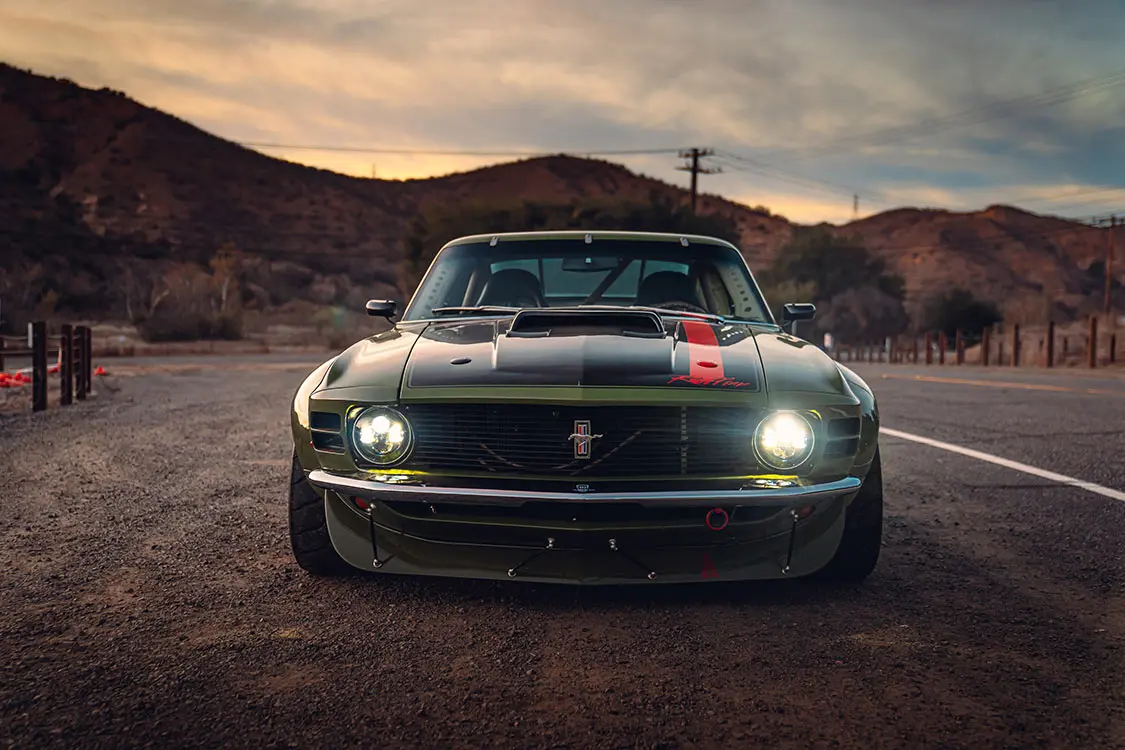

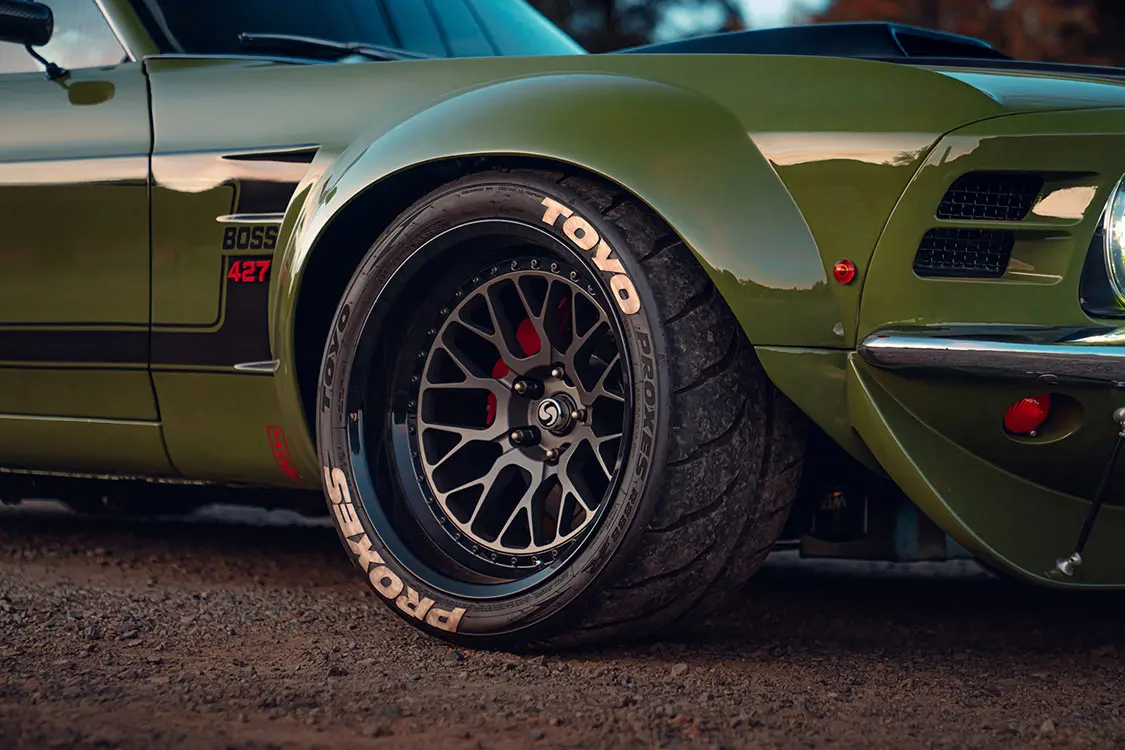
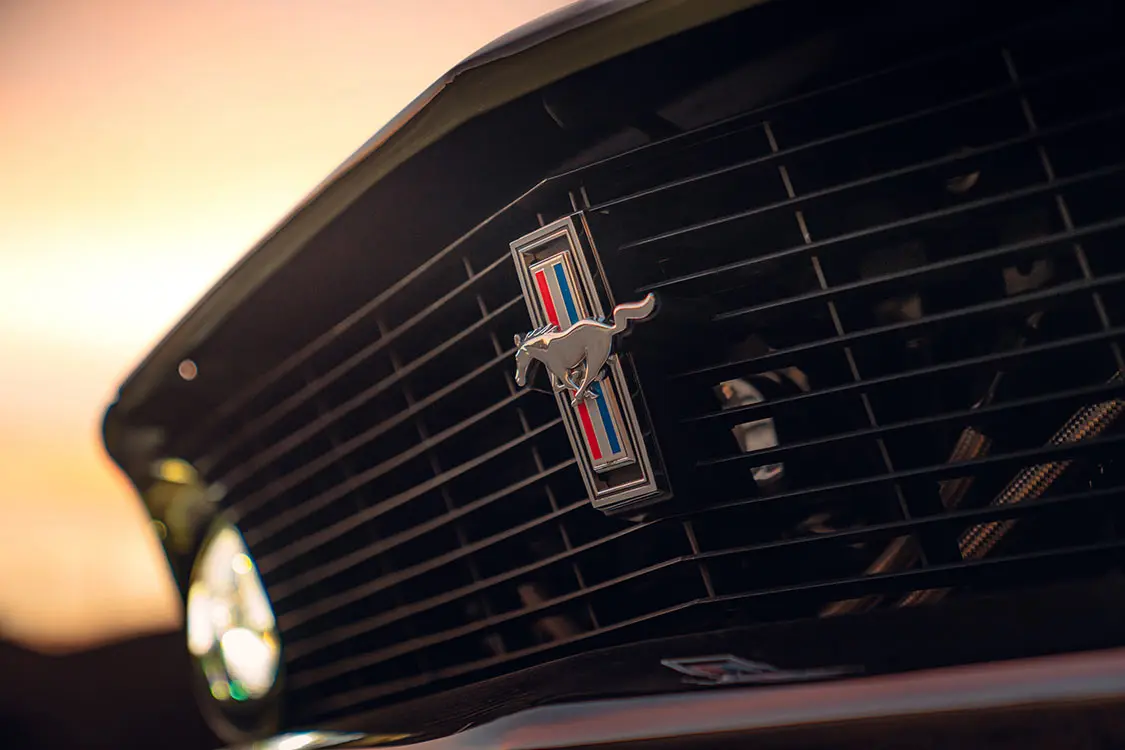
I am responsible for the whole build, including the visual design, research, installation, fabrication and sheet metal work. The body is all steel, done on a cheap planishing hammer and English wheel. In total, I have over 1700 hours of labor into it, which isn’t bad considering the car’s presence.
…it was designed to kick butt at the autocross as well as get me to work on Fridays.
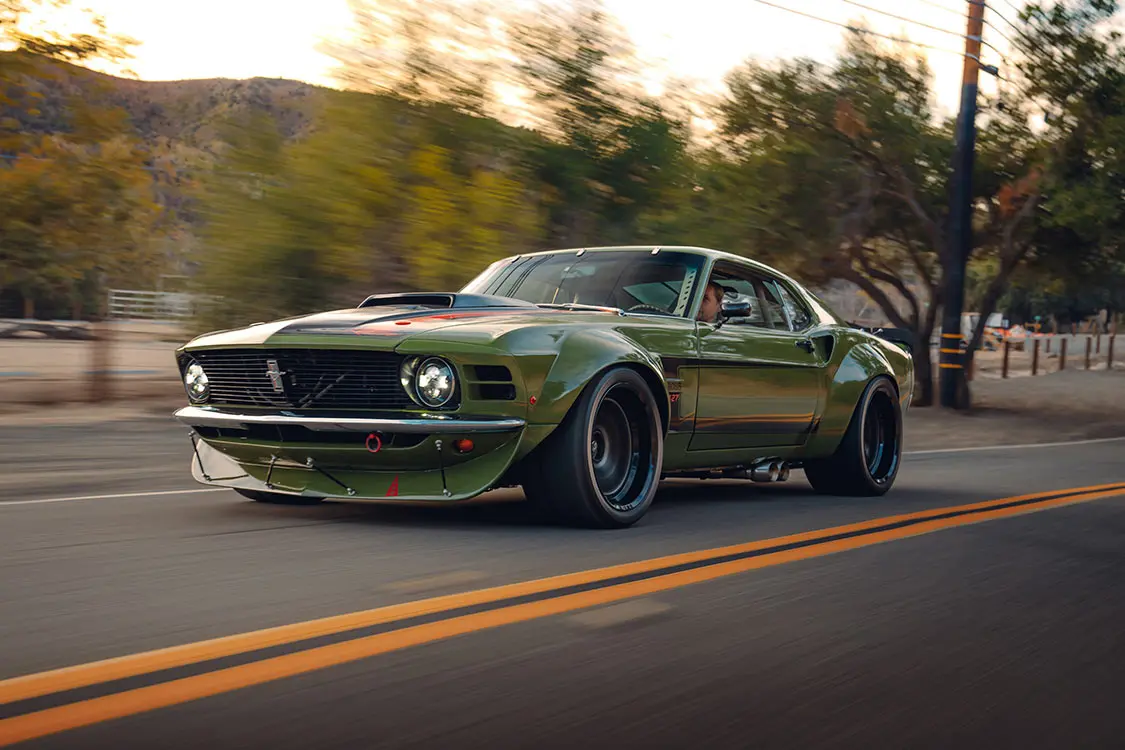
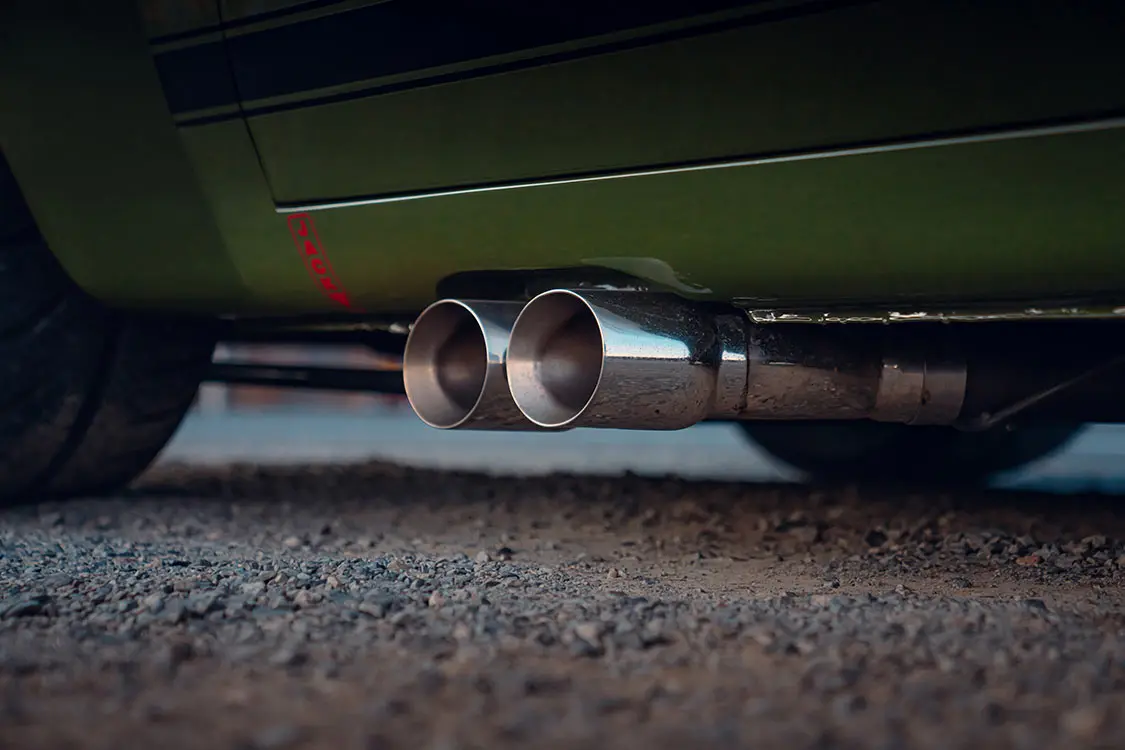
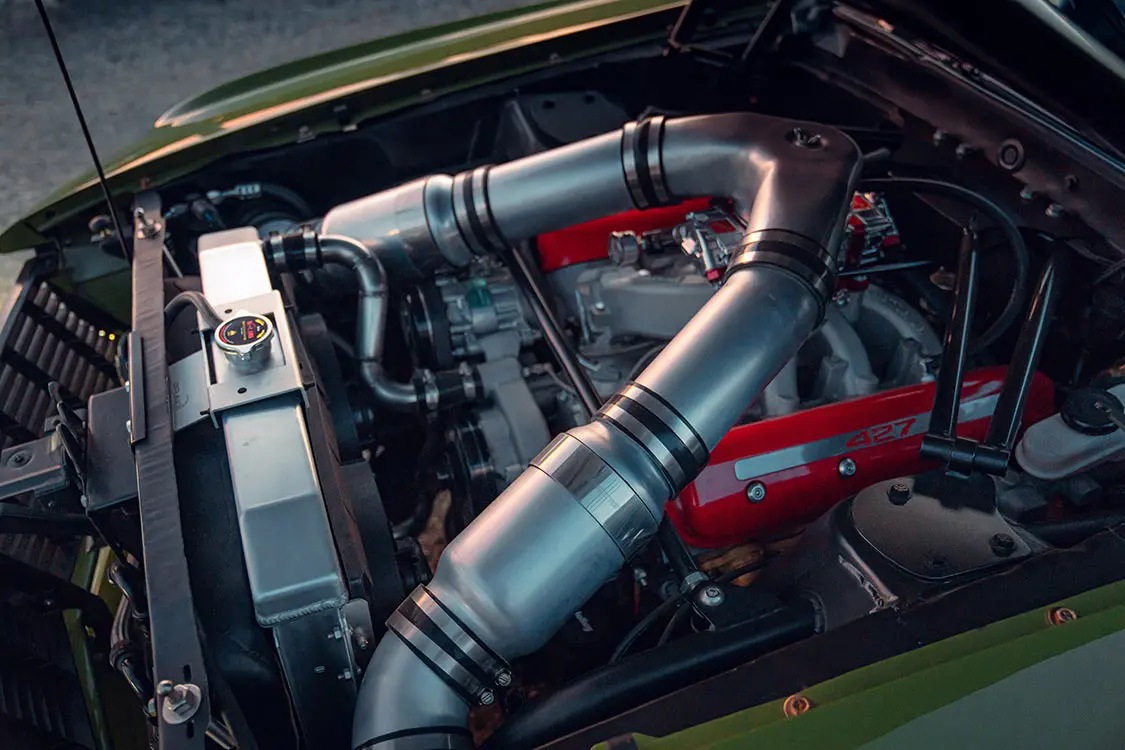
The engine is a carbureted, seven-liter, aluminum block stroker LS3 making 625hp. The motor was mounted 2.5” rearward and 1” lower than the factory setup to improve weight distribution. It drives a six-speed super magnum t-56 transmission and a Ford 9” floating rear axle with a watts link setup and 4.11:1 gears.
3D-printed nylon parts are used throughout the car, such as the vent inserts, 427 badging, and window rollers. The bumpers have been fitted and re-chromed, and the front fenders are pitched down an inch for good looks and improved aero (just like the race cars). Most of the chrome trim has been removed and flush mount glass was used to give the car a sleek look.
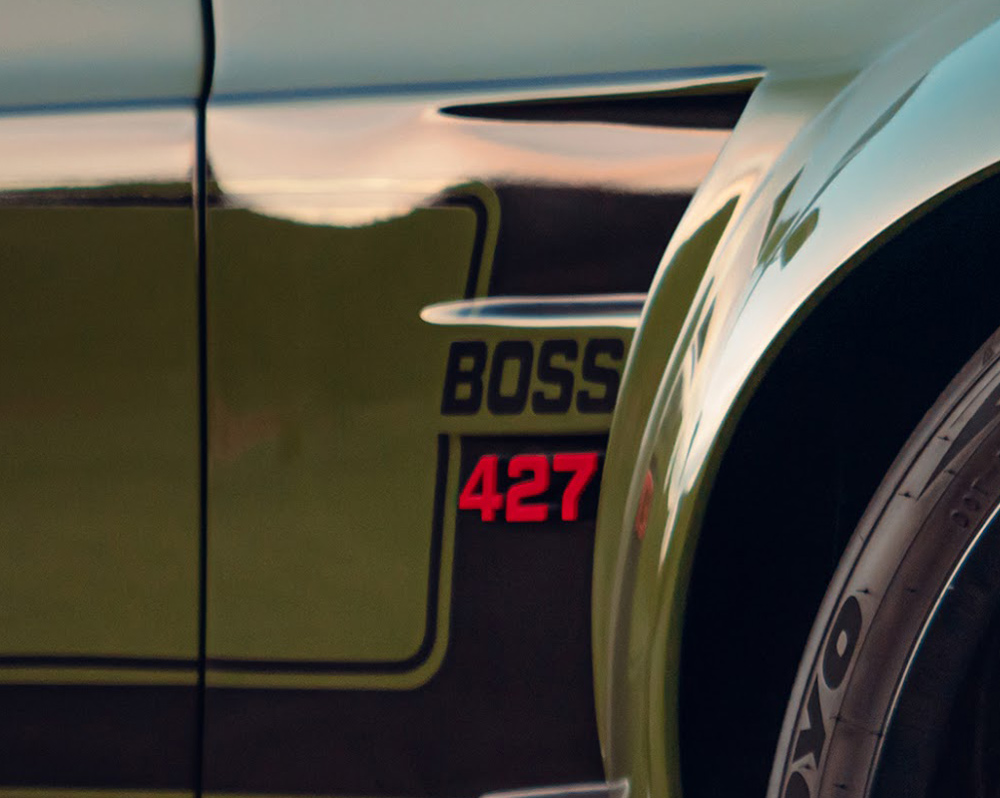
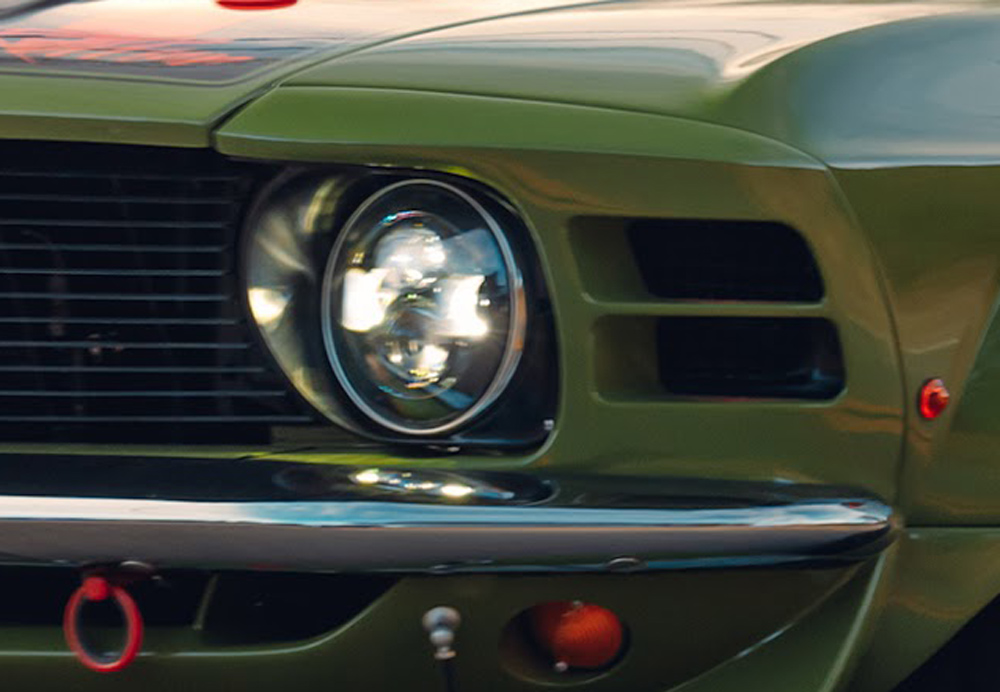
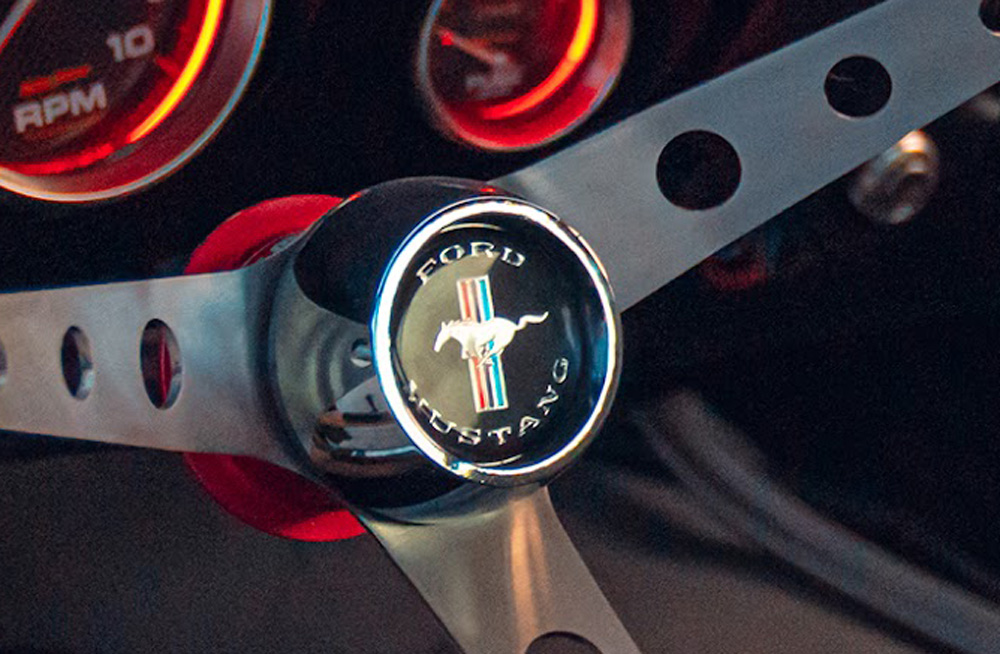
The car wears custom Signature ONE wheels – 19×12.5” in the rear and 18×11” in the front. Wide Toyo Proxes R888R’s are used at all four corners. 345’s attempt to put the power down while 315’s handle directional changes.
The car is finished in a 1978 Porsche Olive Green paint. The Boss side stripes are reflective black 3M vinyl (a nod to the original Boss 302 cars) and the black hood is actually exposed carbon fiber on an Anvil Auto hood. Knife maker, Jake Palm hand-built the pistol grip shifter and South County Auto Body handled paintwork.

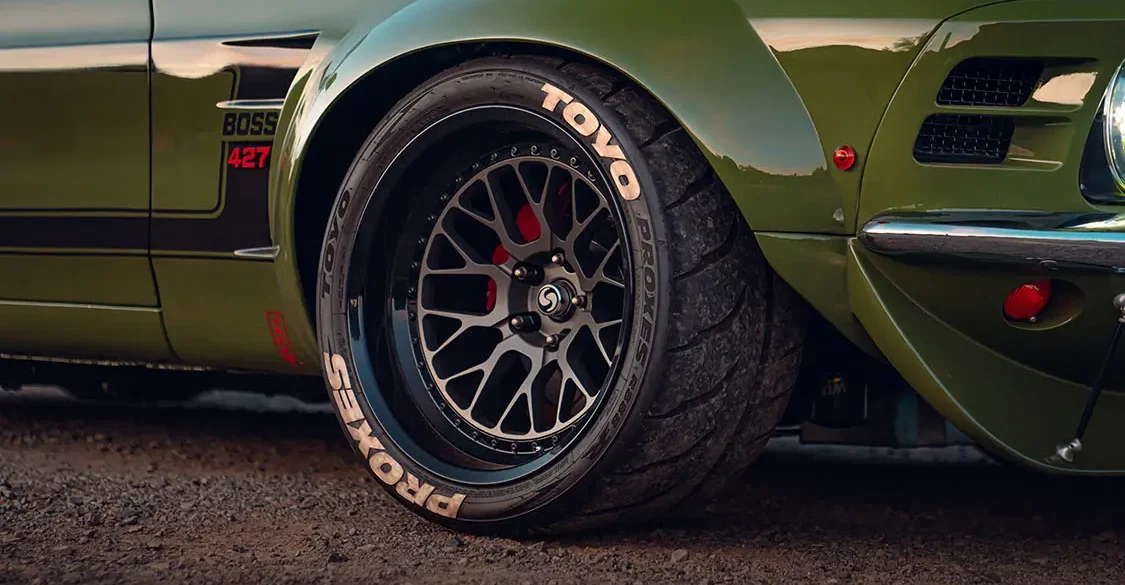
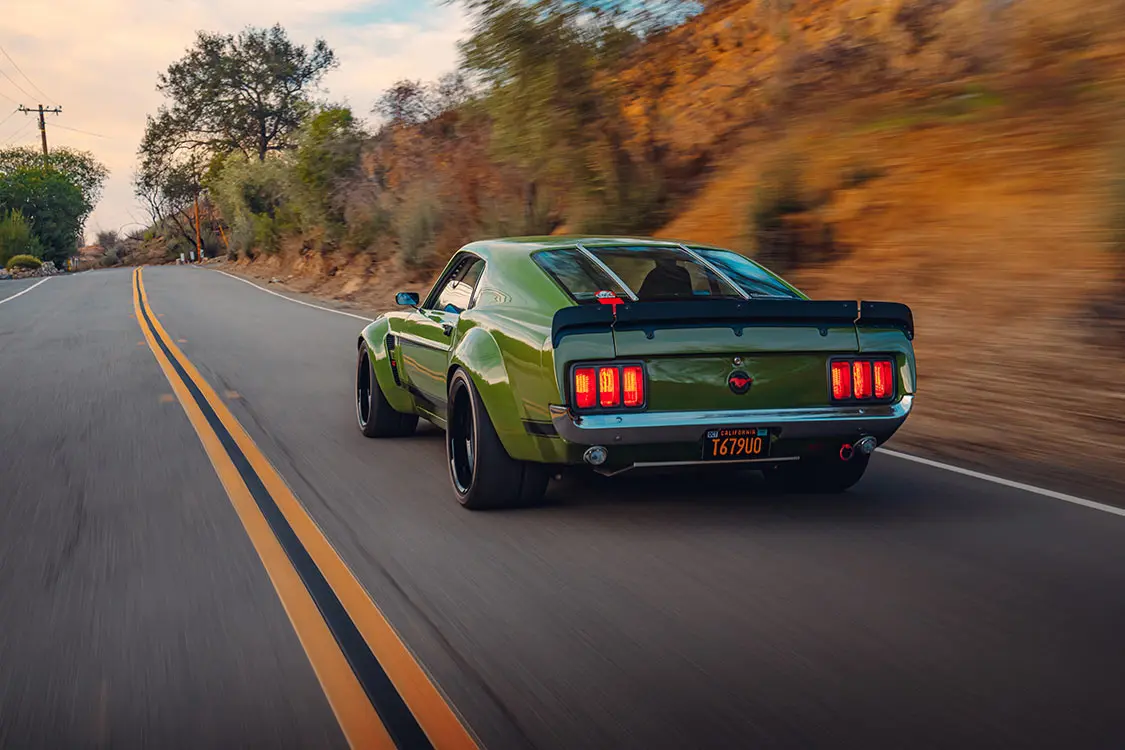
The story behind the Tjin Edition Ford Mustang Mach-E California Route 1 showcases the passion and dedication of a true automotive enthusiast. Neil Tjin from Laguna Niguel, California, has been immersed in the automotive industry since 1996, turning his hobby into a full-time job and a lifelong passion, building award-winning show EVs and electric trucks—and organizing one of the coolest EV events in the US: Electrify Expo’s Showdown.
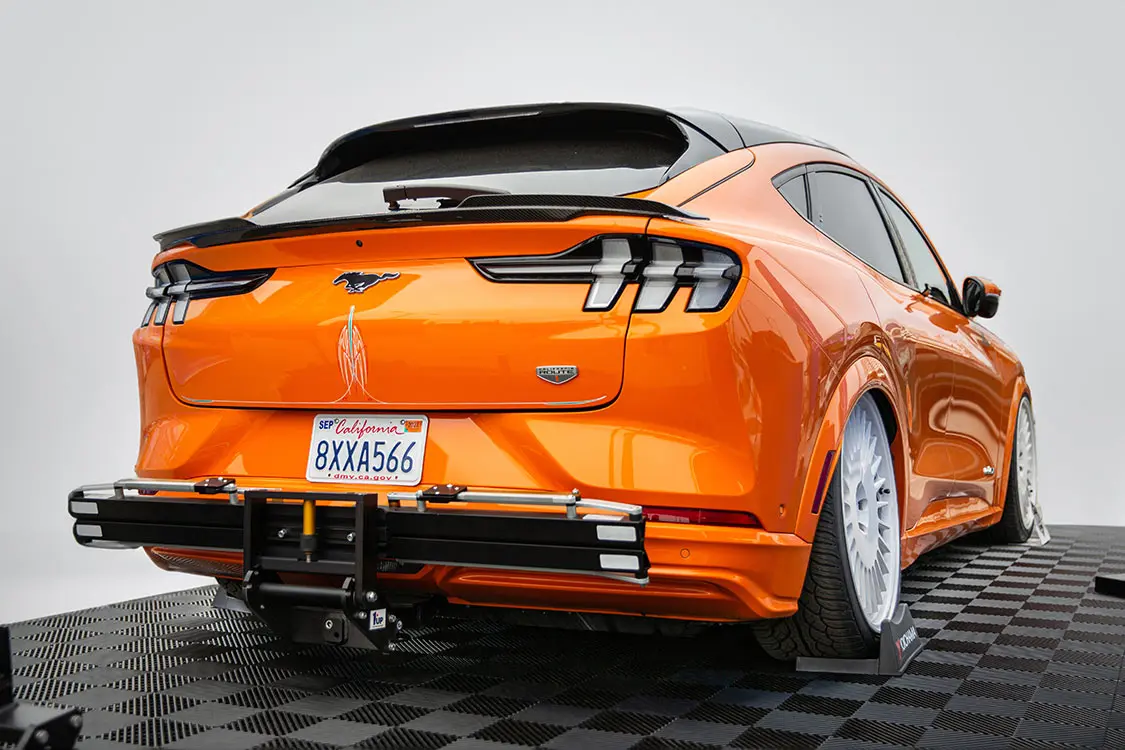
“I am a huge fan of the EV space, and even though it is still new and upcoming, it is freaking awesome,” Neil says. “And being the director of the showoff, I get to meet fellow EV builders, we get to set the trends for the future, and I get to see cool EVs across the country. The space is hot, new, and exciting, just as I like!”
Having worked with Ford since 2009 on SEMA cars, in early 2020 he was again approached by the Blue Oval team and designers to take on the challenge of building and designing the all-new Mach-E for the prestigious Las Vegas trade show. The project kicked into high gear in August of that year as the car was delivered and parts started pouring in. With relentless determination, Neil and his team worked tirelessly for two months. Finally, the Tjin Edition Mach-E was completed, proudly occupying the spotlight at the legendary blue-carpeted Ford booth at the SEMA Show, where it won Best of Show Ford at SEMA! Winning was historic as the Tjin Edition Mach-E became the first-ever EV to clinch this esteemed honor.
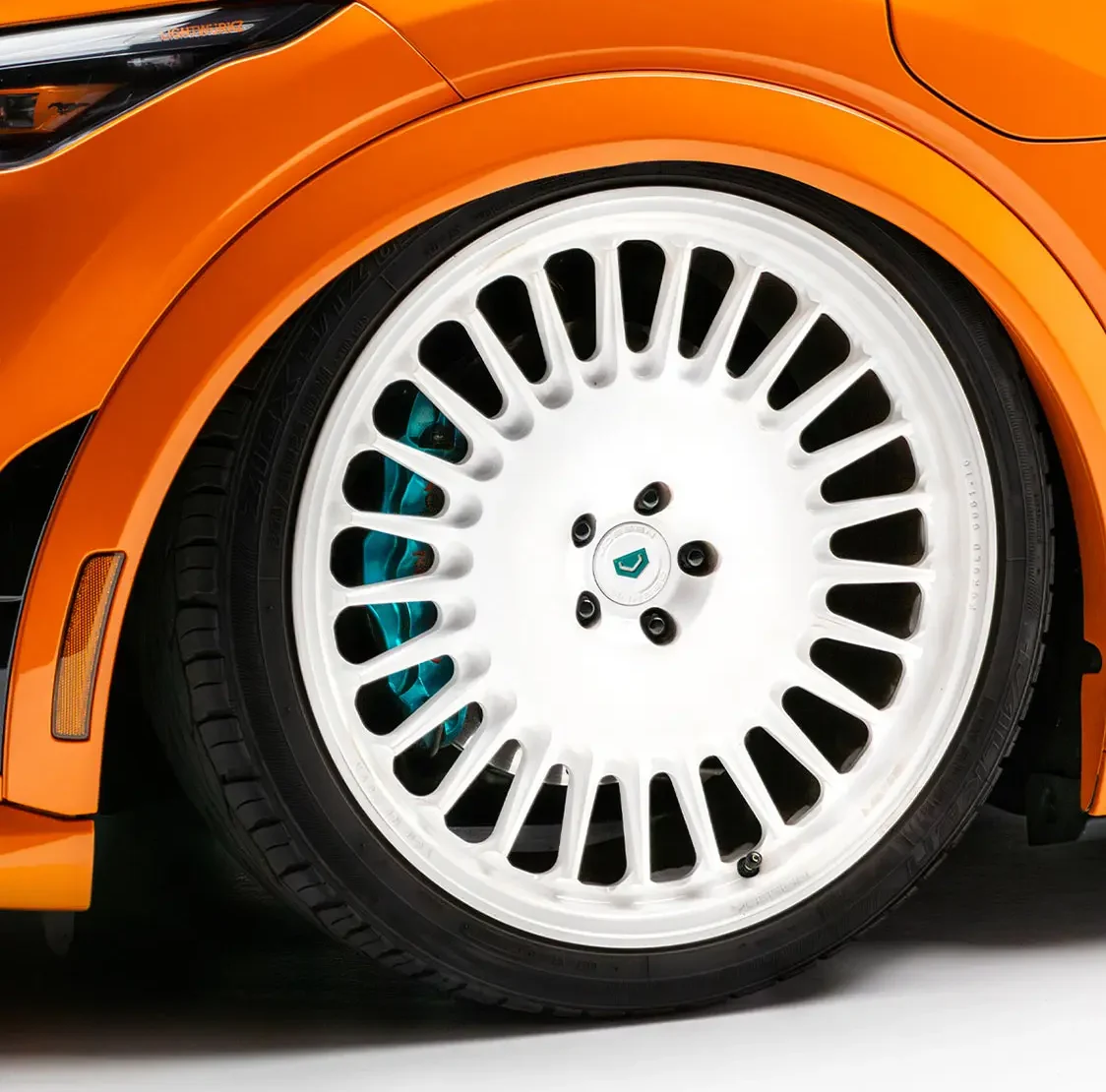
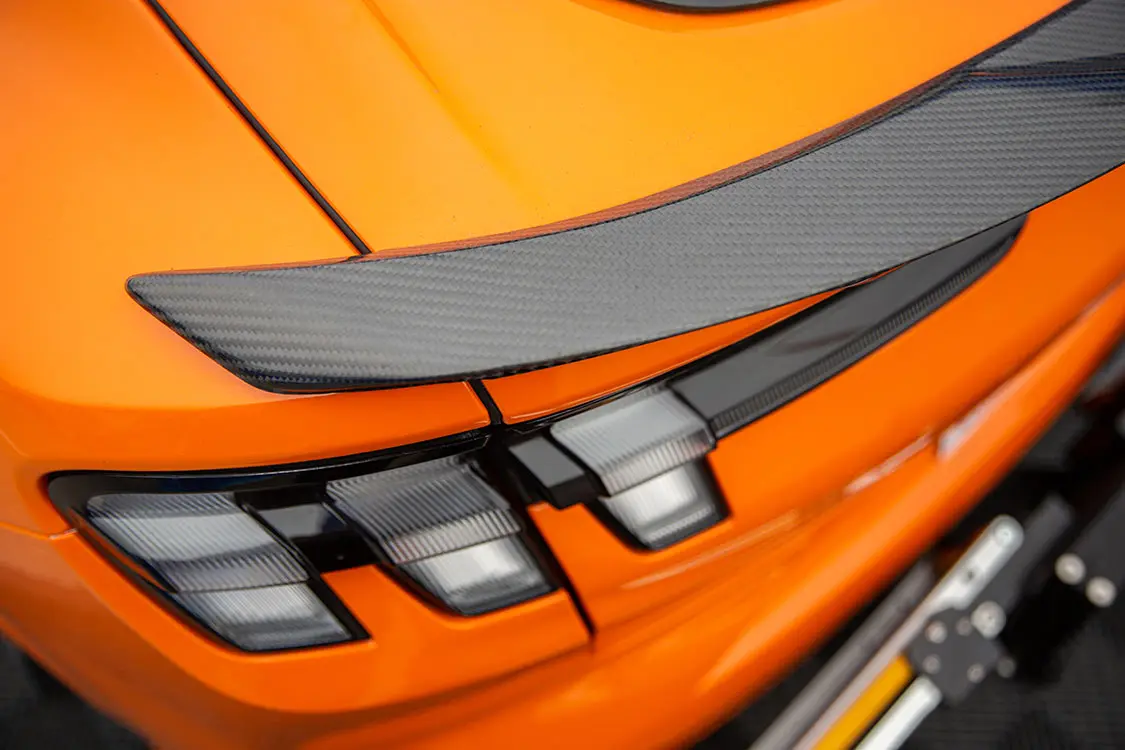
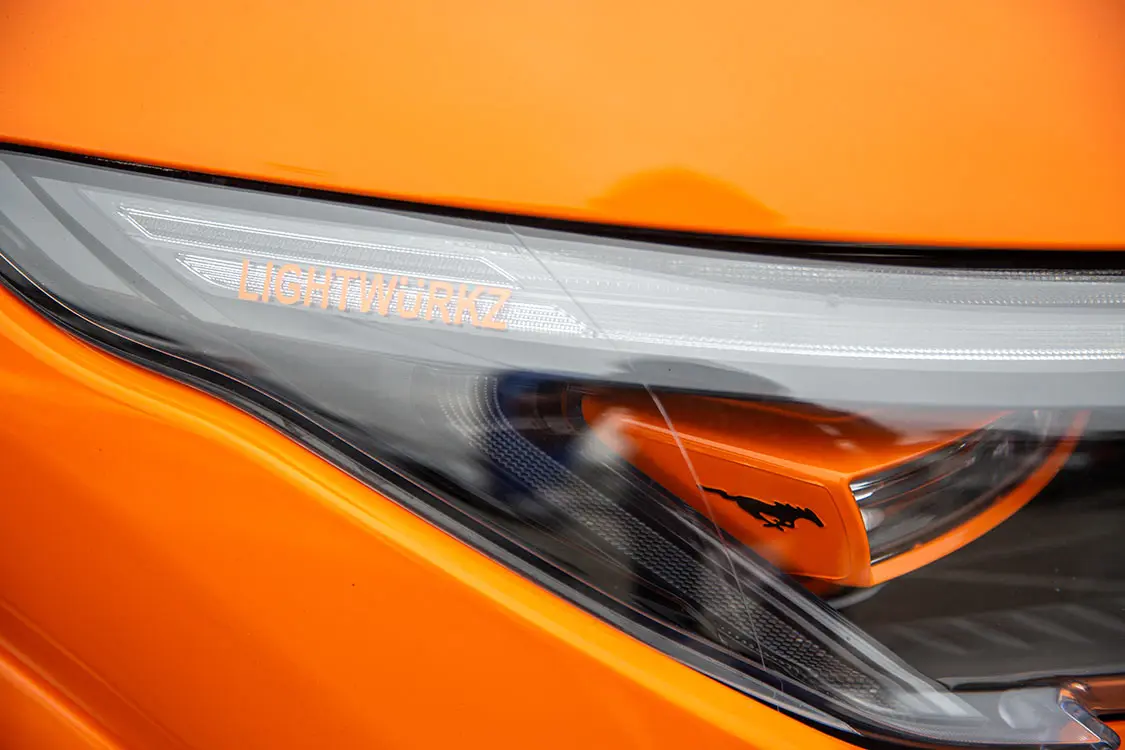
As you lay your eyes upon the Tjin Edition Mach-E, you can’t help but be captivated by its flawless custom paintjob. With a striking orange hue expertly applied by Neil’s brother, Gene, who runs Tjin Paint and Body, this immaculate paint job is enhanced even more by the BLK LBT DTL ceramic coating. The Vossen ERA-3 wheels measuring a jaw-dropping 22×9.5 inches and wrapped in Yokohama Parada Spec X also bring a new dimension to the Mach-E.
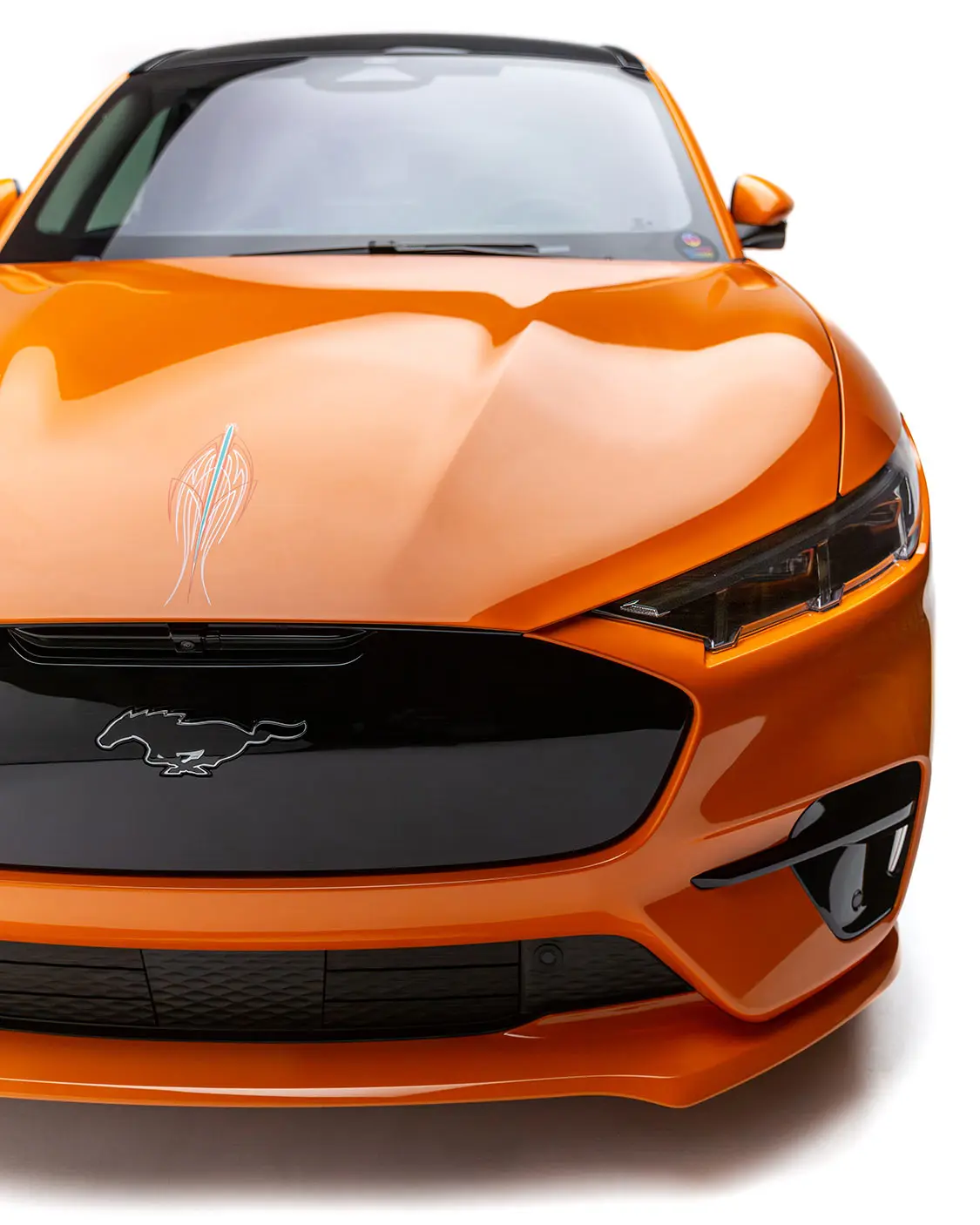
But it doesn’t stop there. Neil has gone above and beyond, fitting his Mustang with an Air Lift suspension system meticulously installed Mr. Alex from Hoppo’s Suspension. With Air Lift struts and Viair compressors working harmoniously, the Tjin Edition Mach-E glides effortlessly along California freeways in comfort. To top it off, the Baer 6S 6-piston front and rear brakes guarantee precise stopping power, instilling confidence in any driving situation.

Step inside, and you’ll be greeted by two custom white Recaro seats adorned with teal highlights, creating an ambiance of pure elegance. Neil doesn’t skimp on the details, outfitting the interior with custom orange Seatbelt Planet seatbelts and a selection of electric two-wheeled rides from Razor and Super73 e-bikes, which is mounted to the rear of the Mach-E witha custom 1up bike rack. It’s clear that every aspect of the Tjin Edition Mach-E has been carefully crafted to create a cohesive package.
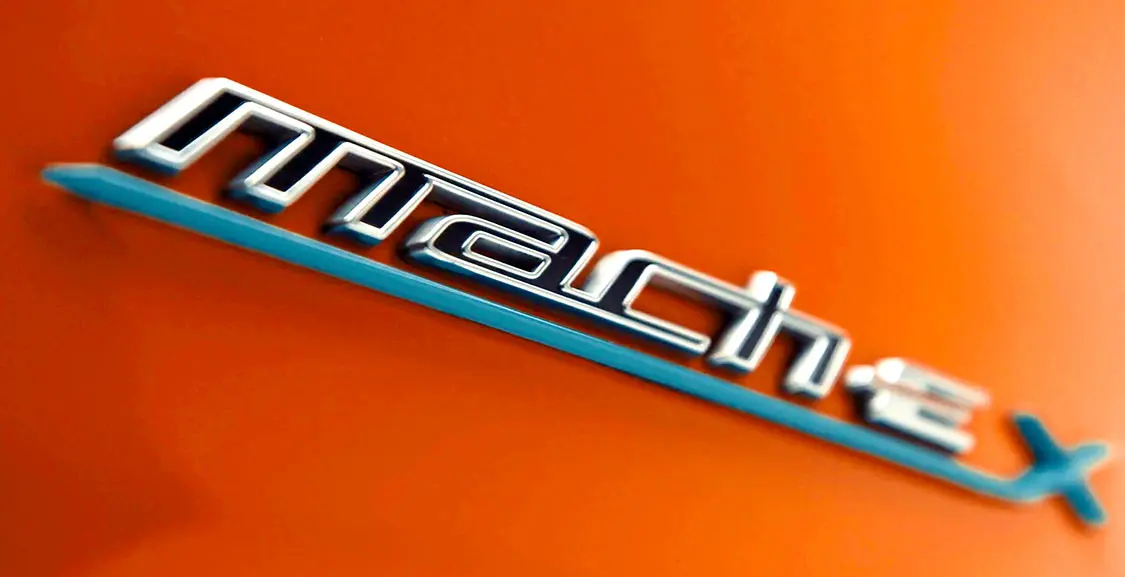
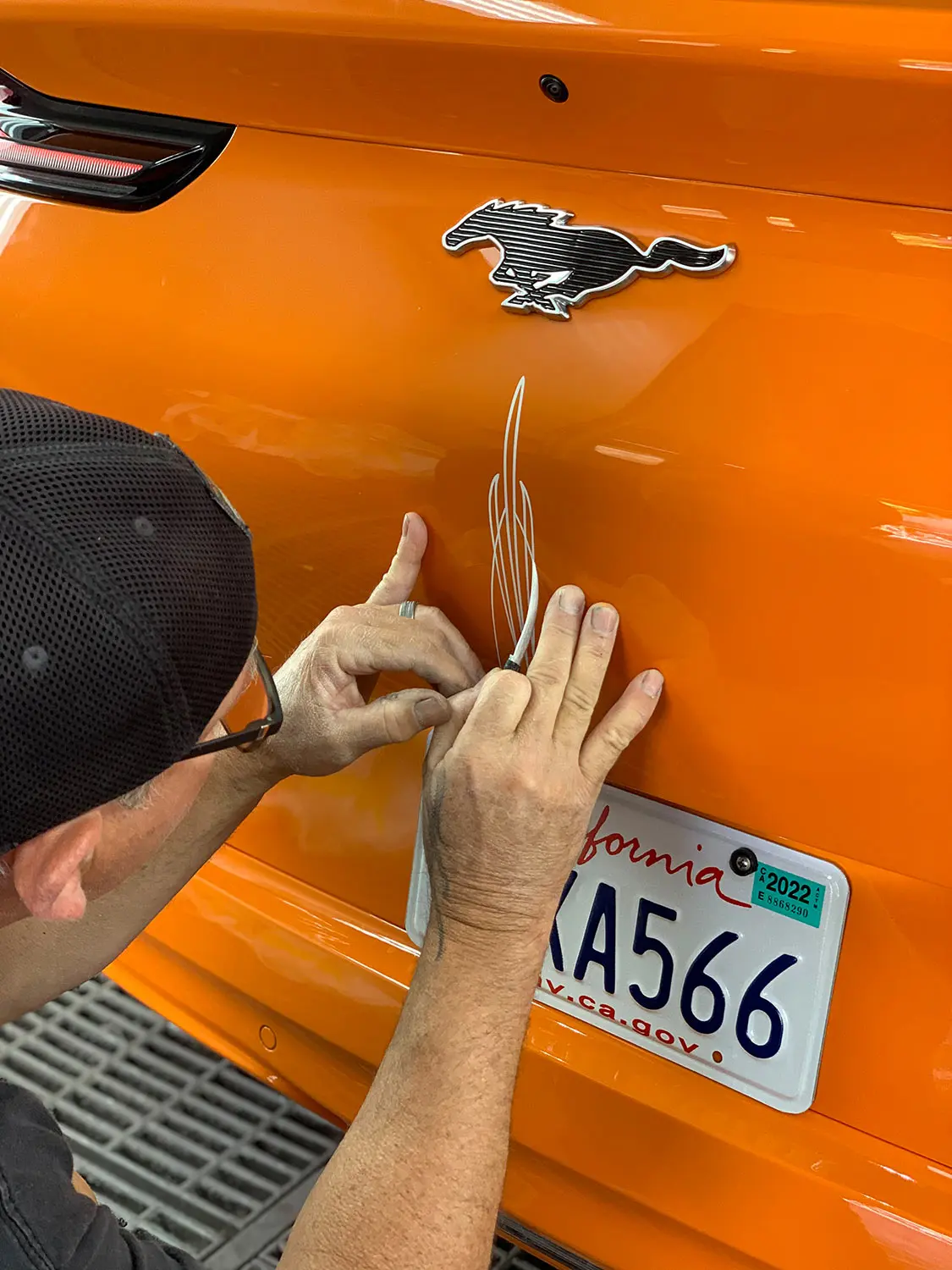
Since the Tjin Edition Mach-E has become a fixture in its creator’s short-term and long-term plans, Neil has been driving the Mach-E for the last 20 months as his daily driver. It has also become a regular participant in West Coast events and various automotive gatherings, including the LA Auto Show and the Electrify Expo Showoff in Long Beach, California.
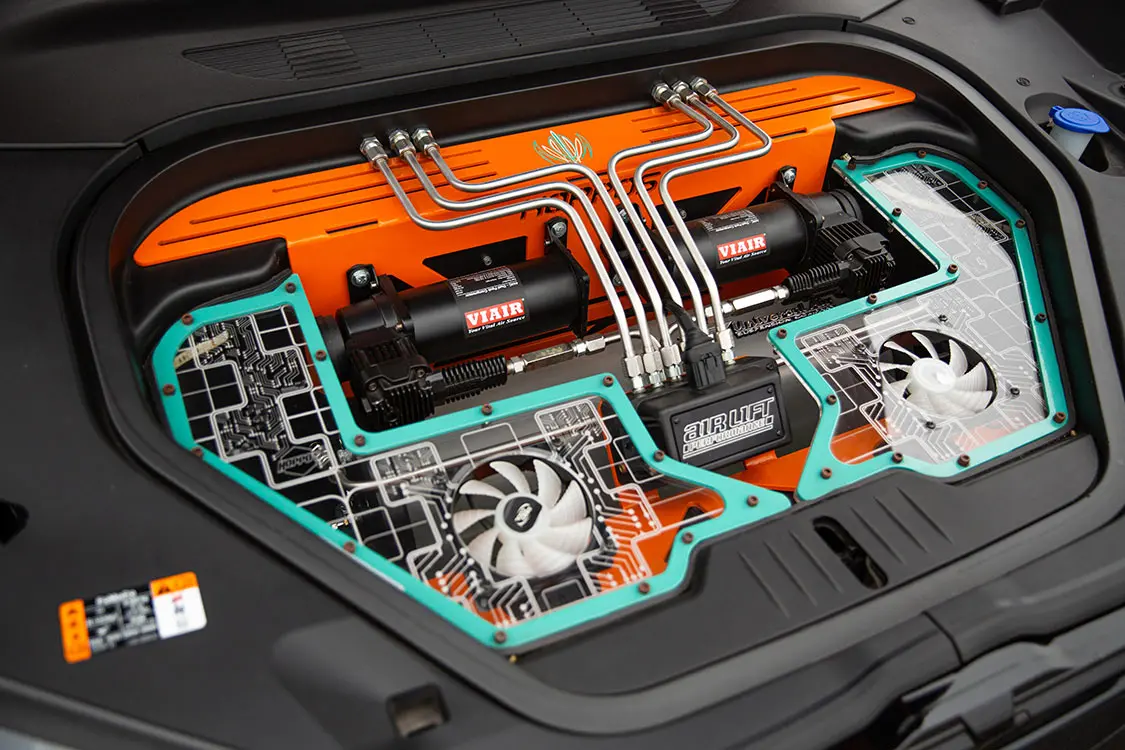
Building the Mach-E was no easy task. Numerous challenges existed as the Mustang was a brand-new vehicle at the time of the build with little aftermarket equipment. Neil humorously admits that nothing was easy, but if he had to choose, the full-color change paintwork stood out as a relatively smooth process, thanks to the car’s pristine condition. However, every other aspect posed a challenge since nothing was readily available for modifications.
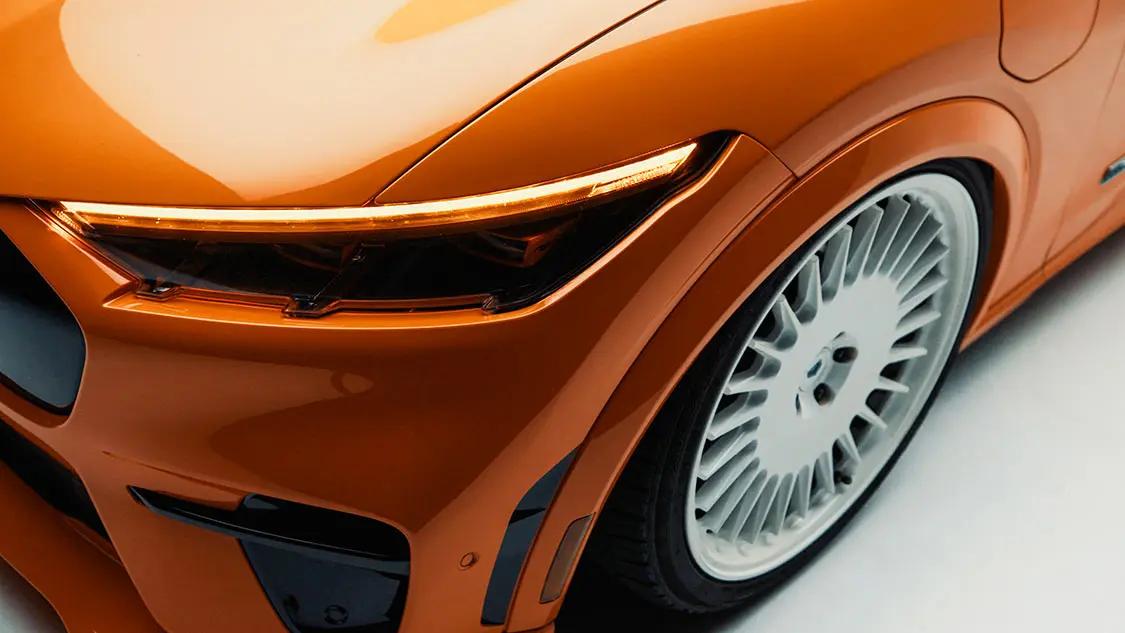

Neil emphasizes the importance of taking your time when tackling a similar project, conducting thorough research in advance, and, most importantly, having fun. With the EV aftermarket becoming more accessible, the possibilities are limitless, and the Ford Mustang Mach-E presents itself as an incredible platform with immense potential—just like its grandmother in the ’60s!
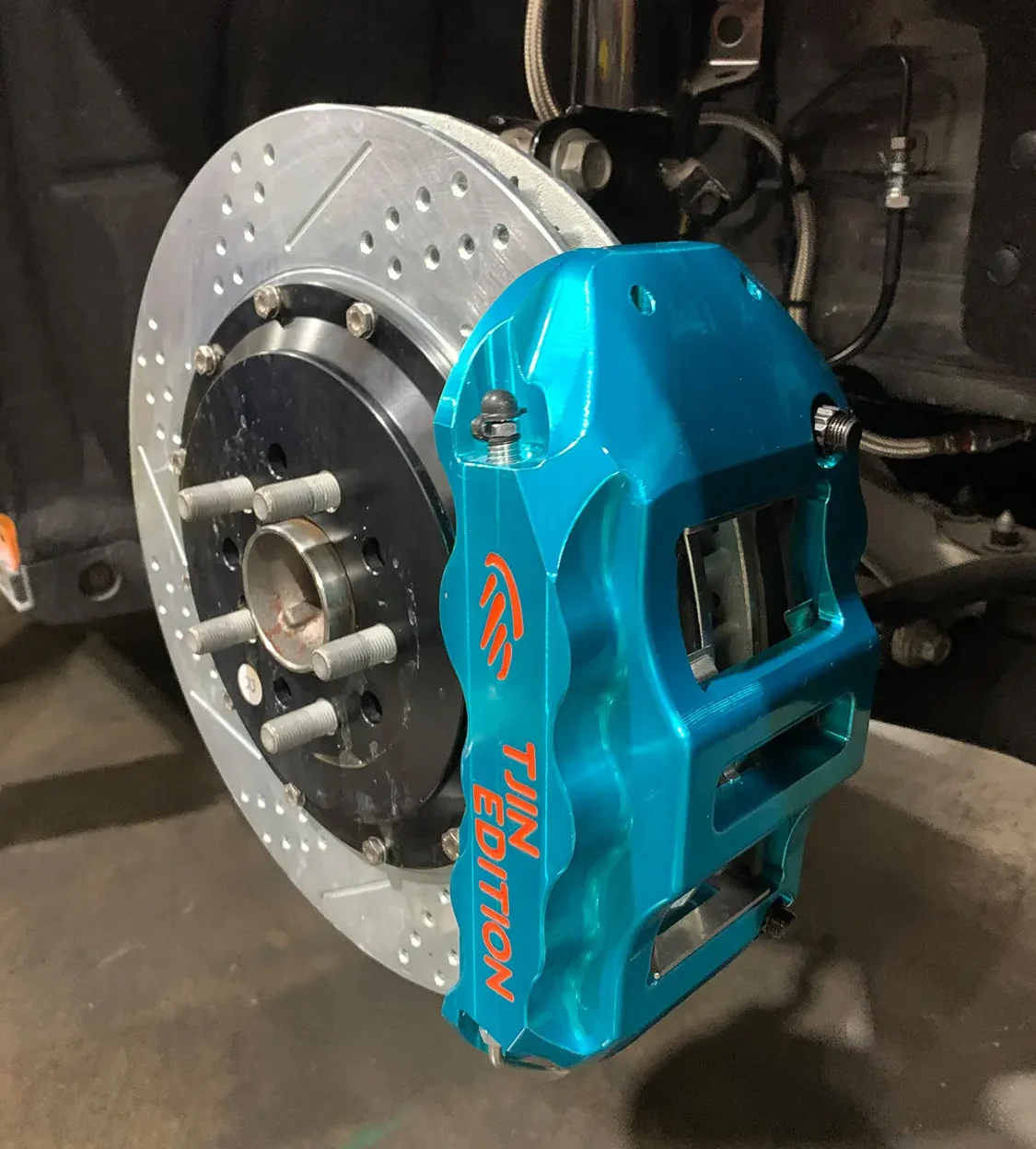
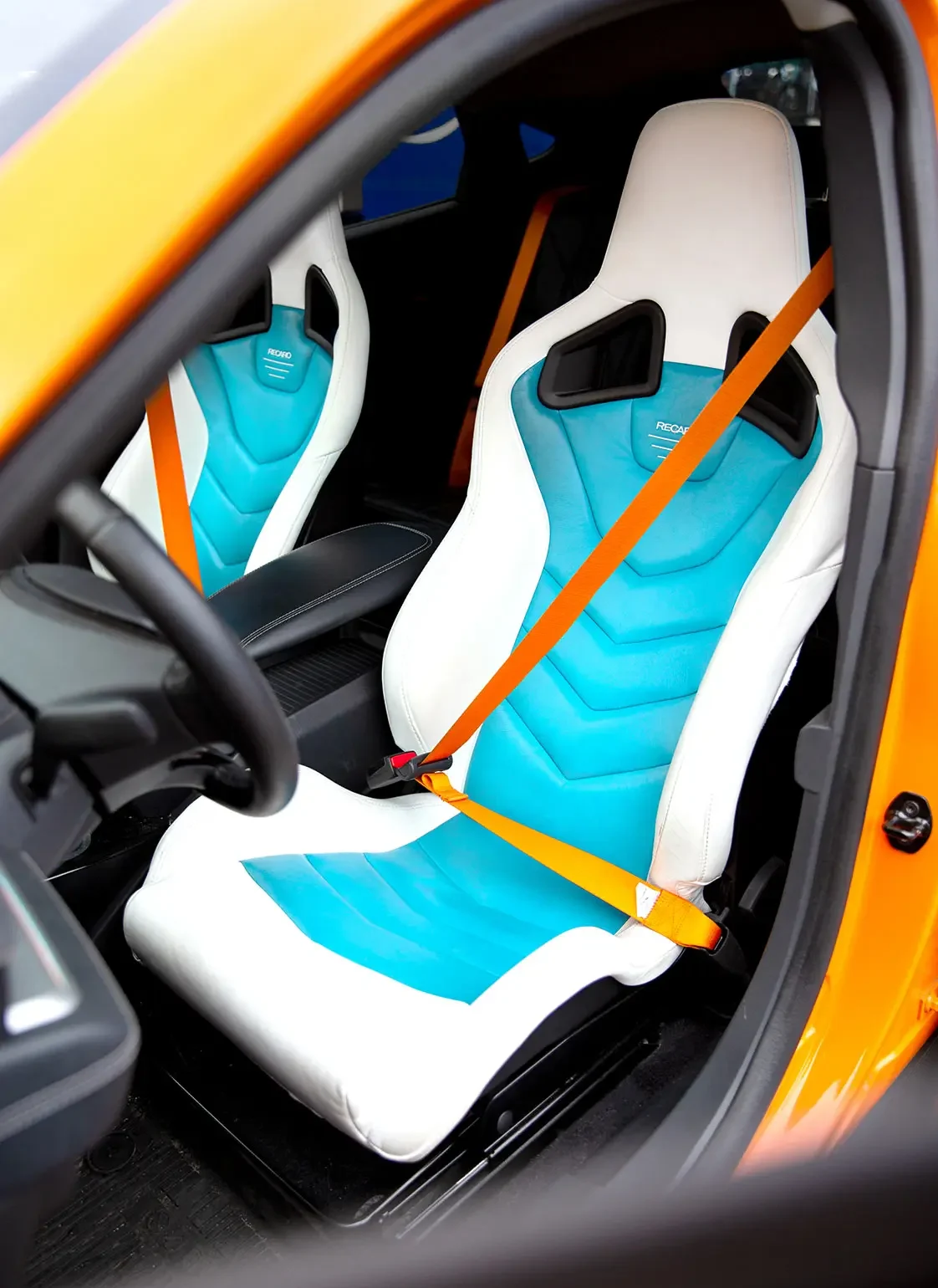

OWNER: Neil Tjin
CHASSIS
WHEELS & TIRES
EXTERIOR
INTERIOR
CREATED BY:
No, sir, this is not your grandma’s ’Stang. This classic beauty has been given a jolt of electricity that will make gas-guzzling purists faint. Meet Eddy Borysewicz of ReVolt Systems in sunny Oceanside, California. This dude knows how to make old-school muscle go electric with a touch of wit and style.
When Eddy stumbled upon a pristine ’65 Mustang, he saw more than just a pretty car. He saw a canvas for his electric masterpieces, and he got to work gutting it.
Ah, the Ford Mustang. A classic, a beauty, a true American muscle car. But, as with anything, time marches on, and sometimes even the greatest of things need a little sprucing up. That’s where Eddy came in with a plan to give this steed a modern makeover fit for a new era.
ReVolt proves that electrifying classic muscle cars are no different than what hot rod builders were doing a generation ago.
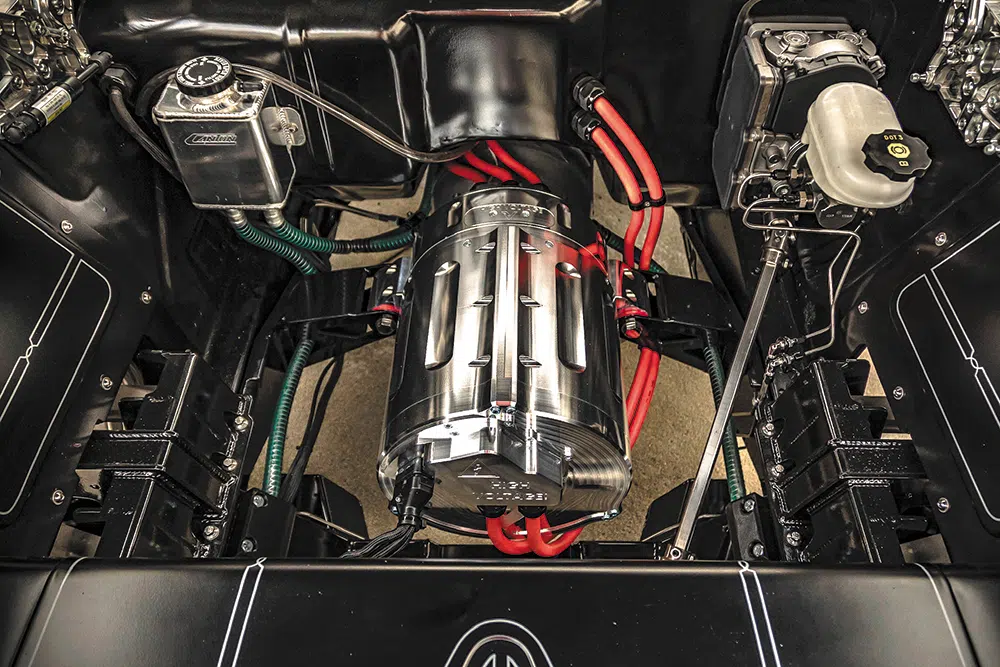
First up on the list? Designing the ReVolt CR-43 “crate” motor capable of 450 kW/600 hp and 1,085 Nm/800 lb-ft torque. It can be used with factory LS mounts and connects to the existing driveshaft for instant torque. The core of the CR-43 is a refurbished Tesla Model S motor and a Torque Trends 1.9:1 reduction box, ensuring exhilaration and quick acceleration.
The came time to toss the old chassis system out the window (or, you know, somewhere more appropriate). With Eddy’s design for a brand spanking new drivetrain, complete with a battery pack the size of a small island, it only made sense to start fresh.
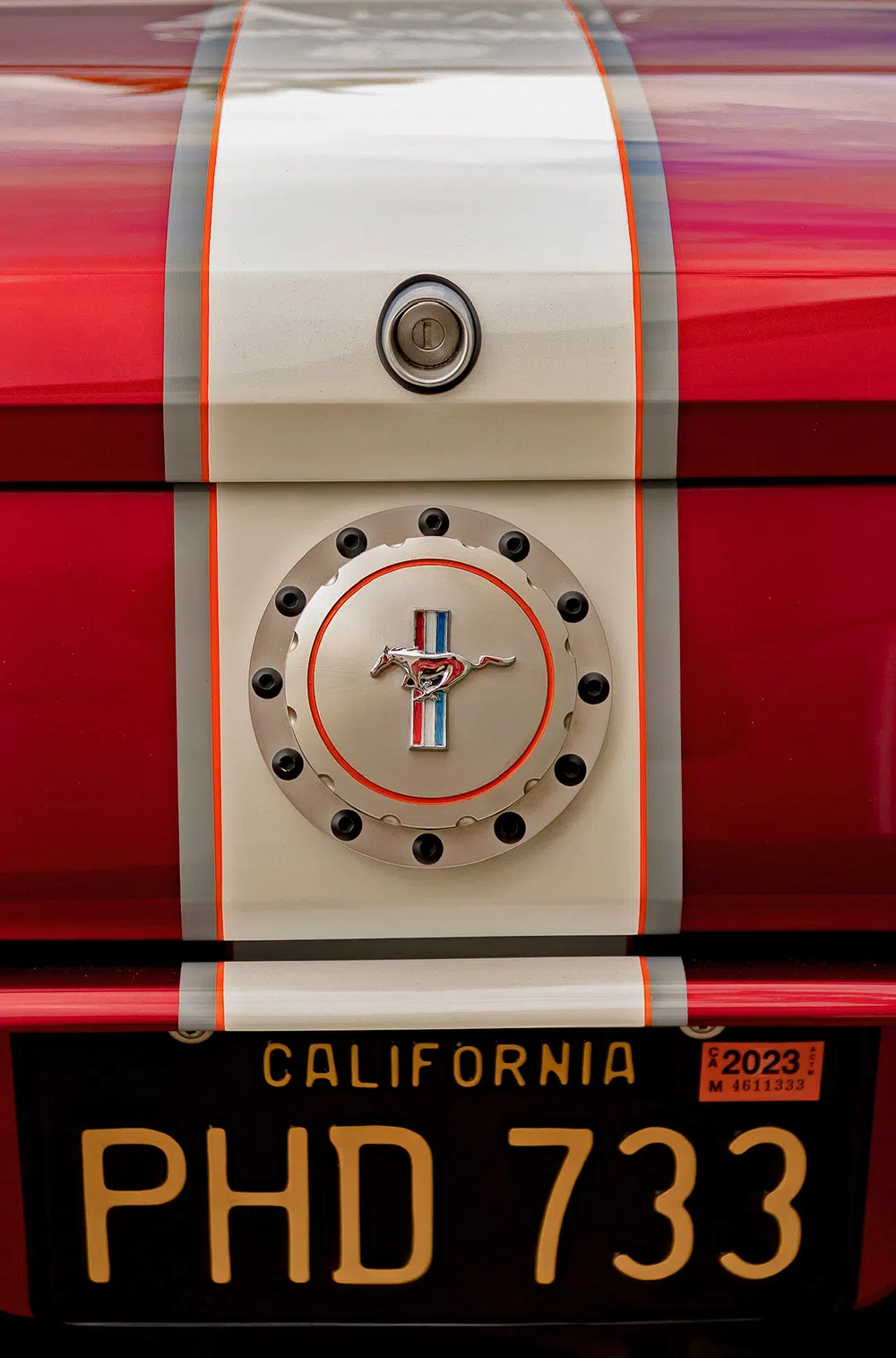
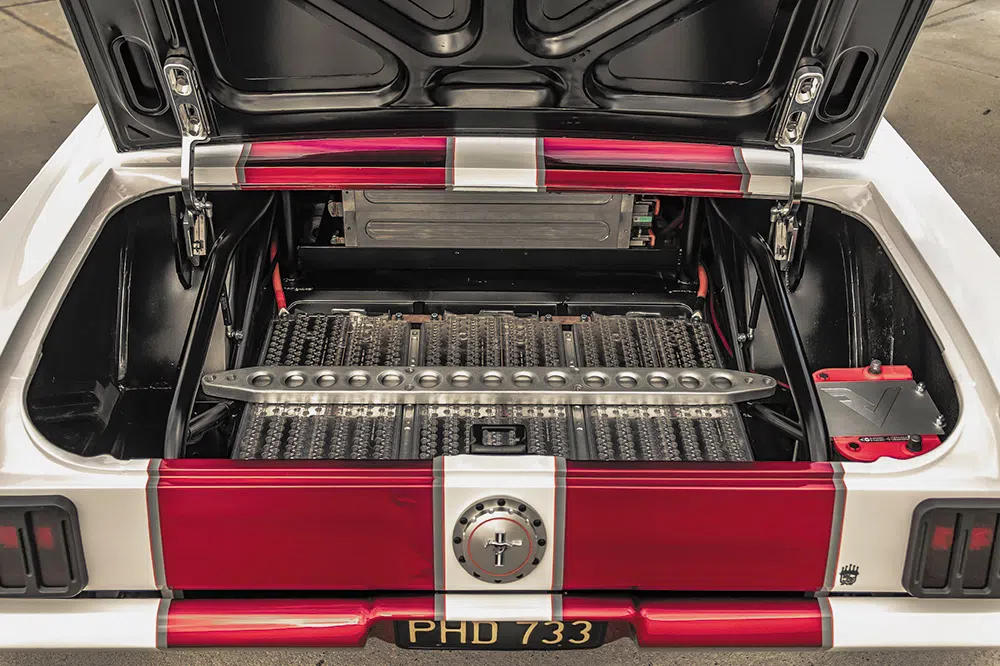
Enter the suspension experts at Roadster Shop with their SPEC Series chassis ready to take on the task. This bad boy boasts a rack-and-pinion front, rear 4-link, four-wheel double adjustable coilovers, custom Pro spindles and front sway bar from Roadster Shop, and an array of other suspension components, all with one goal in mind: giving the Mustang superior performance handling and ride quality that’ll make your grandma jealous.
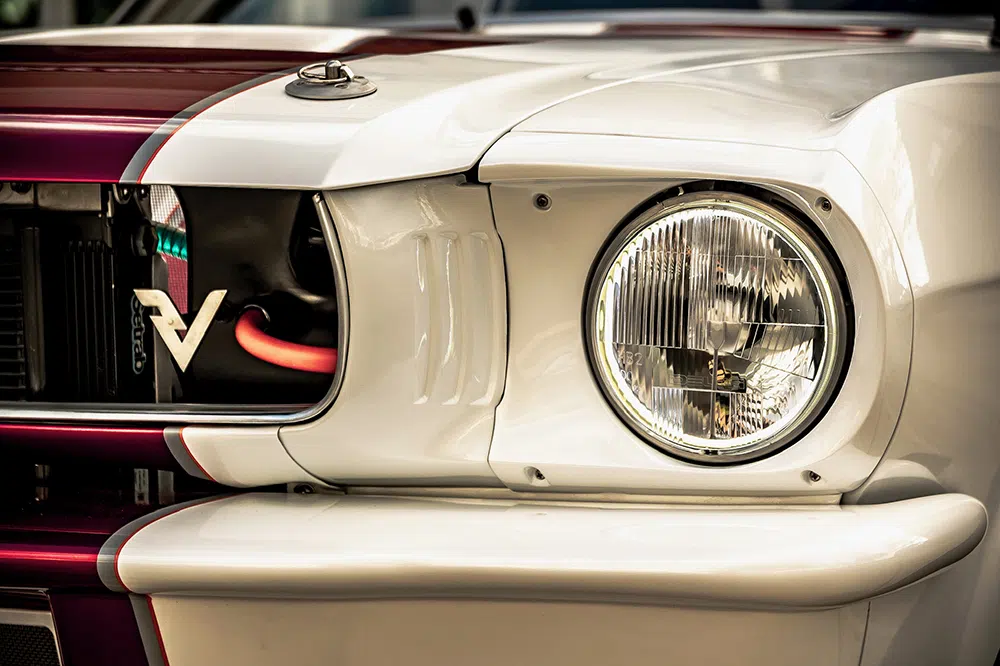
But the ride quality isn’t the only thing Eddy set his sights on. No, sir. He also had his eye on some fresh wheels and tires. And boy, did he find a doozy: 18×8 in the front and 19×12 in the rear, Billet Specialties and Nitto tires, respectively, do just the trick to make this Mustang stand out in a sea of mundane vehicles.
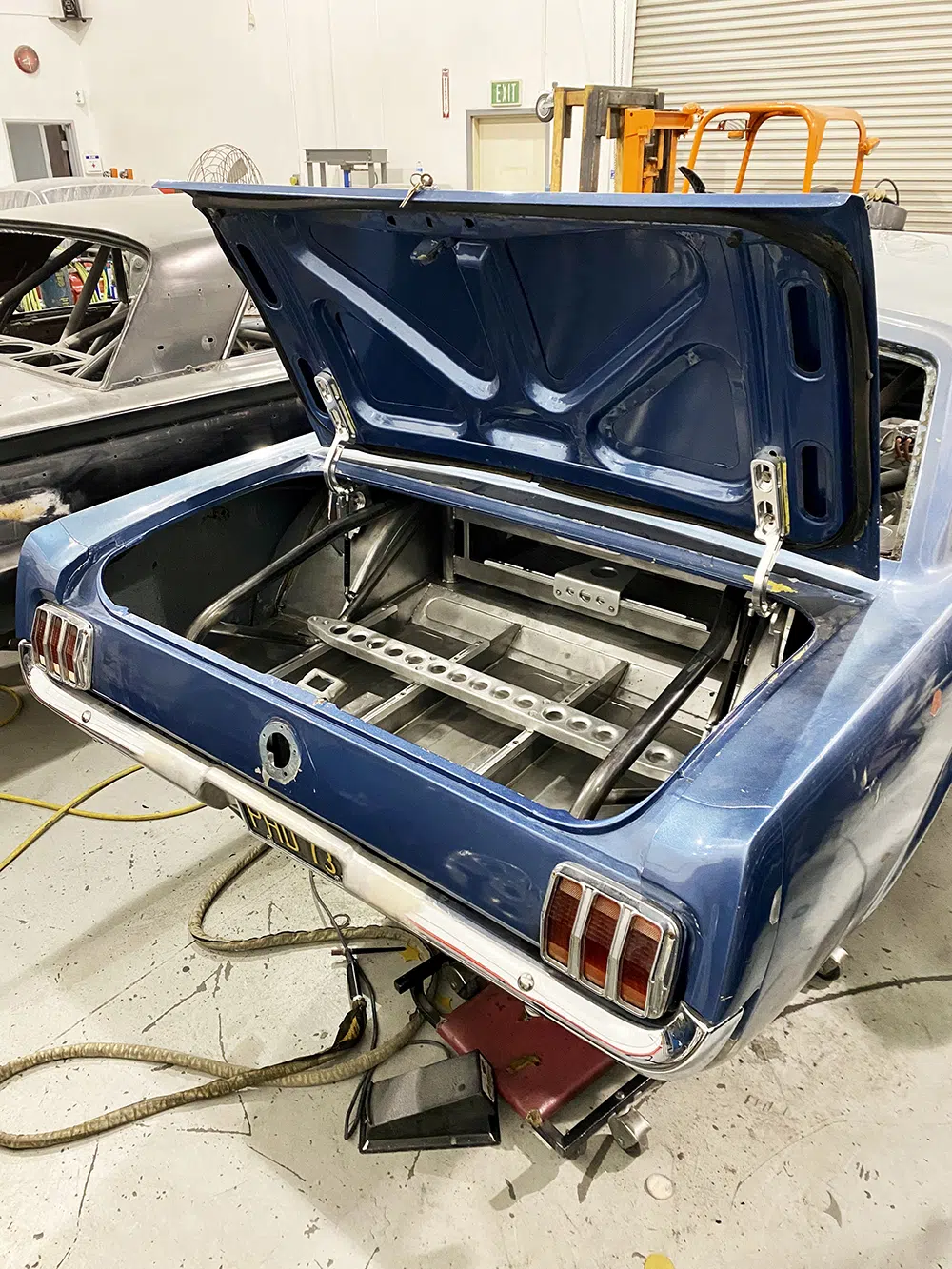
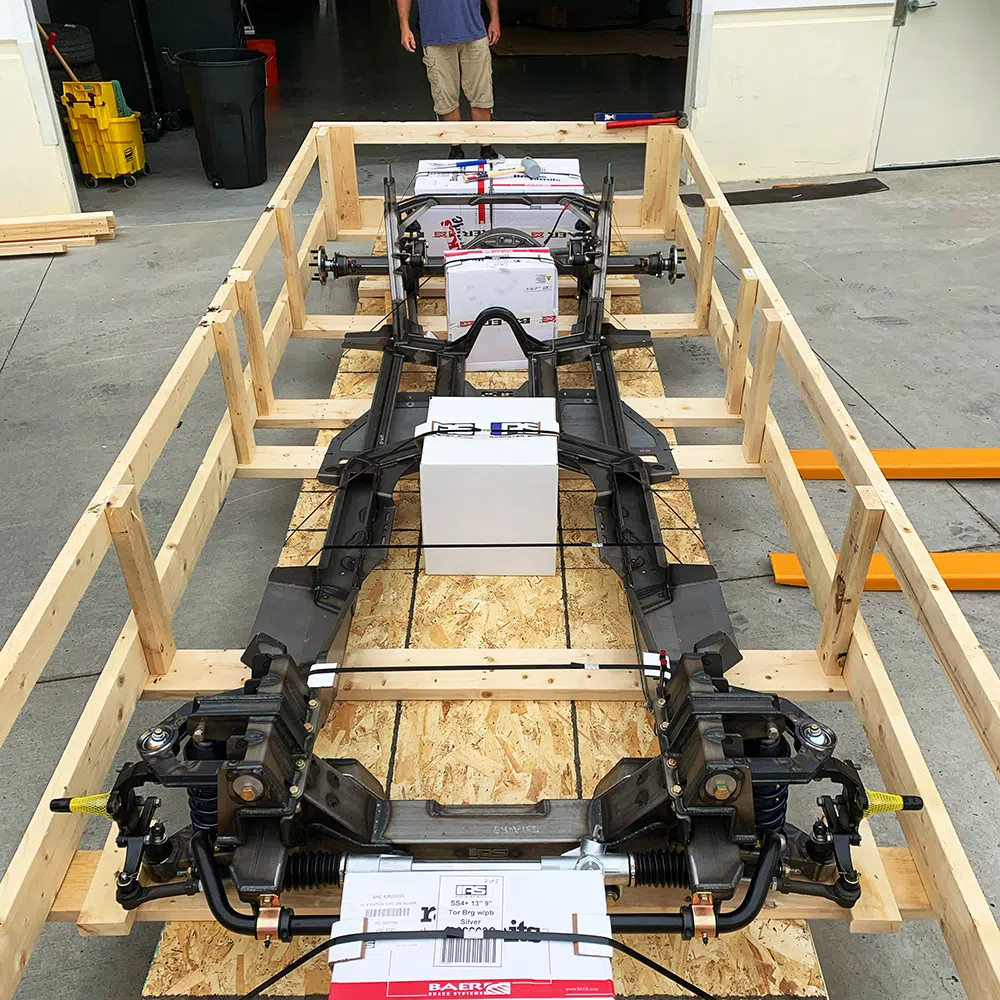
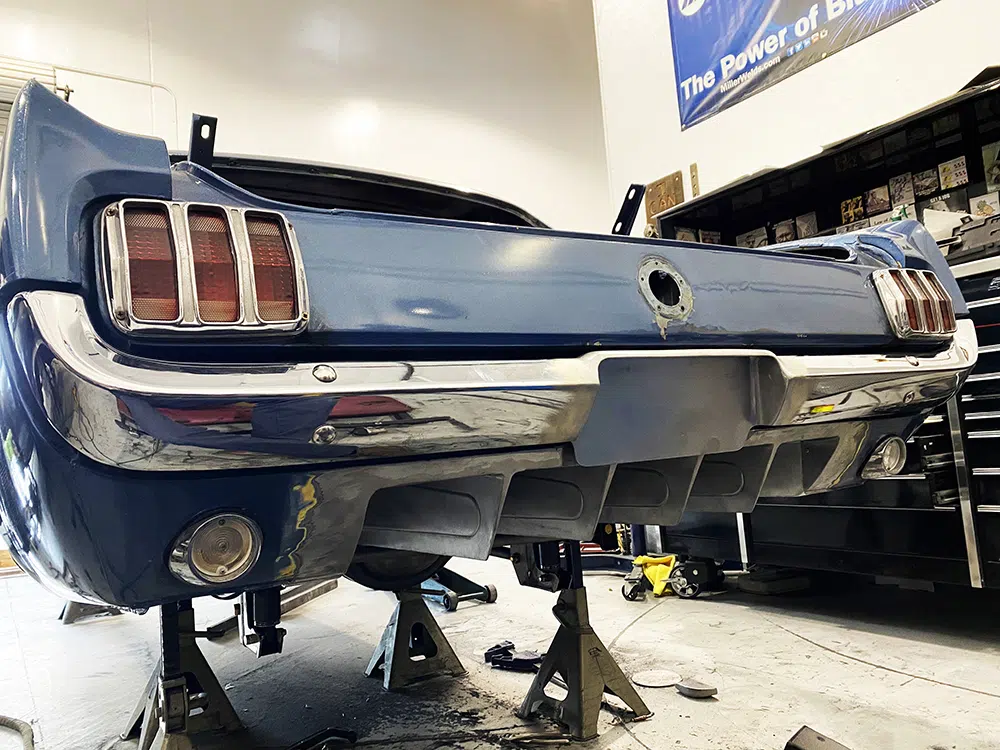
Last but certainly not least, Eddy knew that with all the power he planned on bestowing upon the Mustang, stopping was just as important as going. And that’s why the braking system received a much-needed upgrade. Say hello to Baer’s 12-inch 4-piston calipers with regenerative braking, ready to ease this pony car to a screeching halt. Because let’s face it, who wants to be cruising down the highway only to realize they can’t stop? Not Eddy, that’s for sure.
The electric drivetrain was a collaboration with Legacy EV, which designed a custom battery pack with a bit of help from AVS Fabrication for some bead-rolled metalwork under the hood and trunk lid.
If you thought a custom battery pack was just a simple addition to an electric drivetrain, you thought wrong, my friend. ReVolt Systems and Legacy EV have pulled out all the stops to create the ultimate prototype for their 1965 Mustang build.
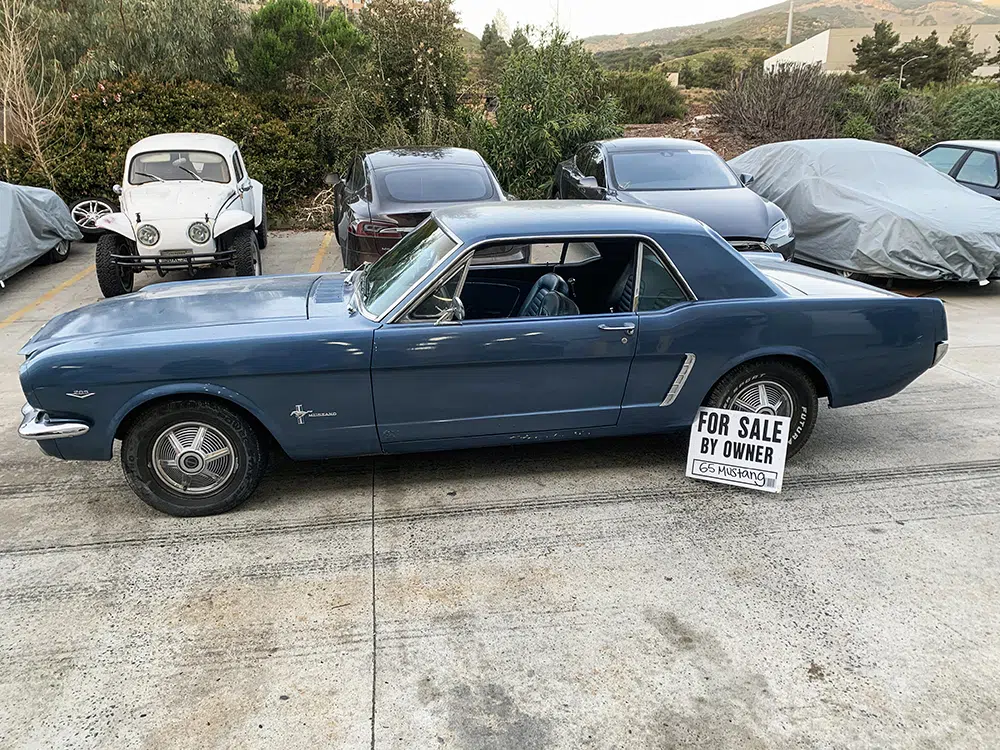
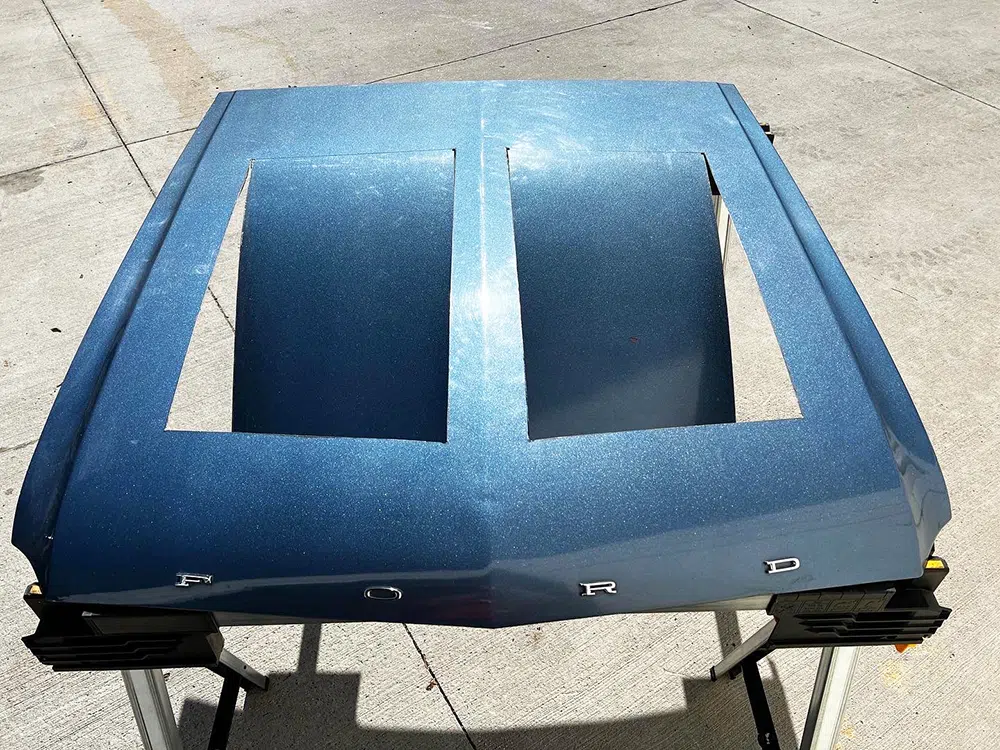
The custom metalwork alone is a work of art, with bead-rolled panelling under the hood and throughout the interior, one-of-a-kind wheel tubs, bumpers, and an impressive roll cage. But it wasn’t just about looks, oh no. The team had to tackle the challenge of placing the batteries in just the right spot for optimal weight distribution. And when they finally got that sorted, they moved on to even more extensive fabrication jobs that elevated the Mustang to a whole new level.
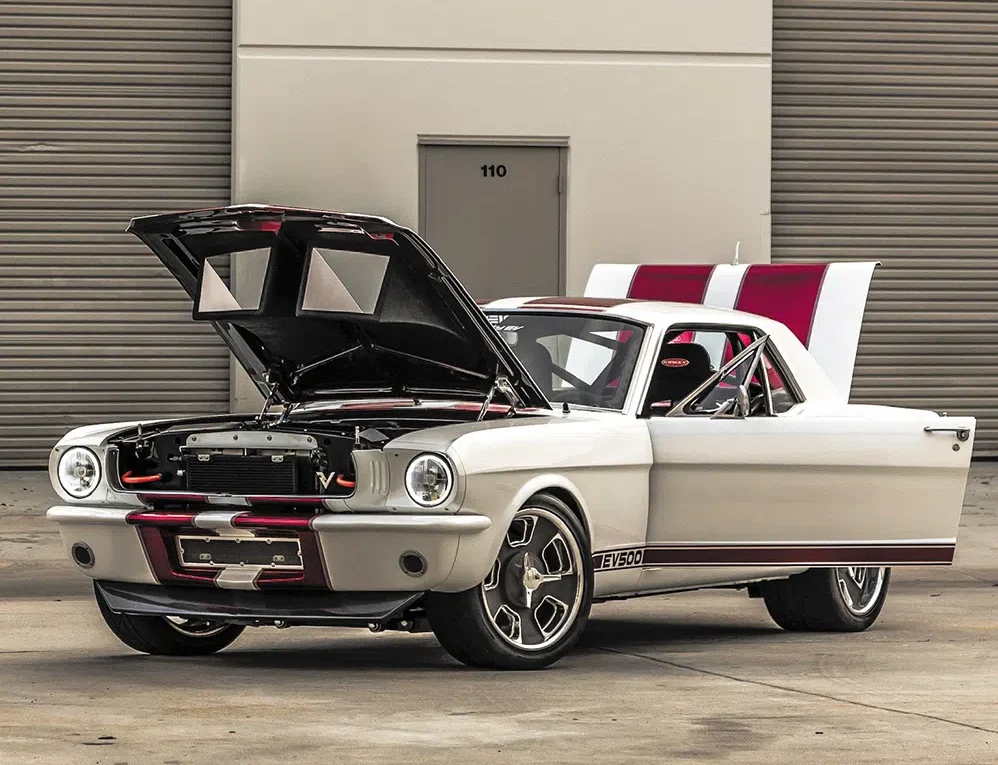
Hot Dog Kustoms’ Pete “Hot Dog” Finlan put the finishing touches on the bodywork before the final paint job was applied, with a pearl white base and red accents.
In the meantime, Rex Upholstery was doing its magic on the interior. This cockpit is packed with top-notch components, from the sleek and comfortable seats to the cutting-edge AEM EV gauges and the sporty Sparco steering wheel. Don’t need A/C? Roll down the windows and feel the wind in your hair. The custom-painted dash is a work of art, and the iPad radio head unit is the cherry on top.
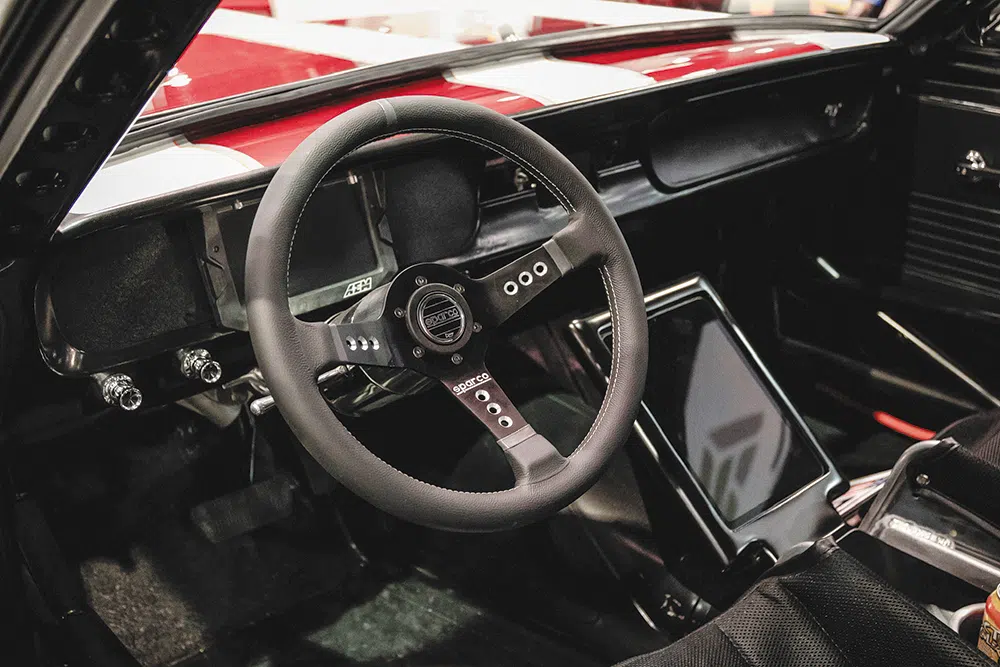
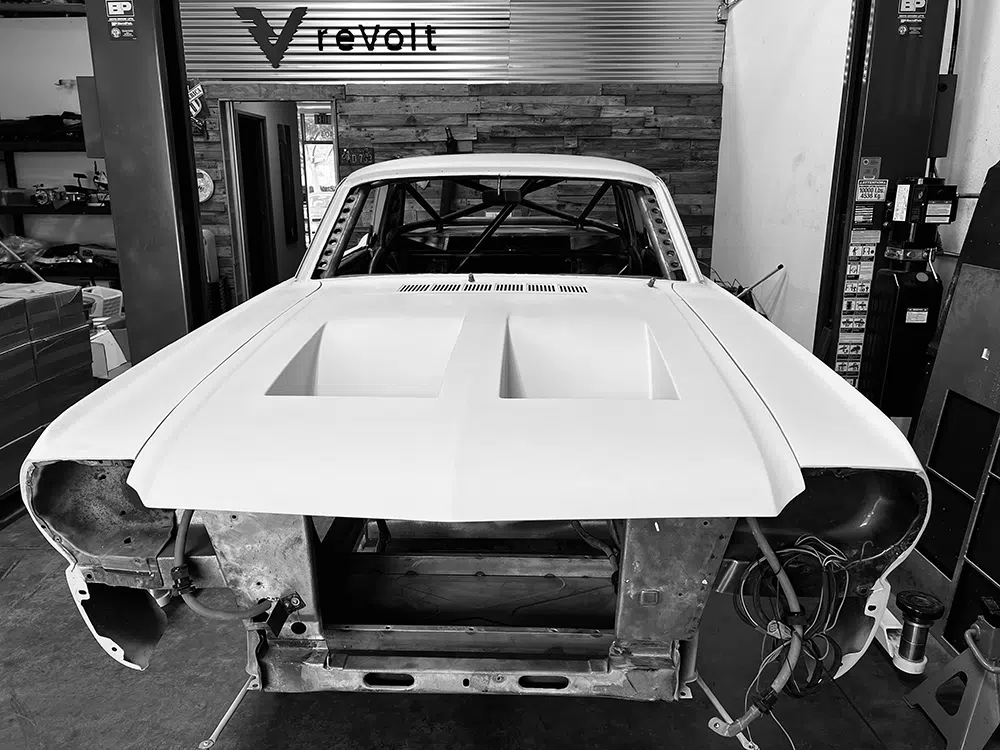

From the custom diffuser by AVS Fabrication to the custom carbon hood by Airtech Design, this Ford Mustang is a true head-turner. The LED 7-inch headlights are bright and bold, while the custom Revolt Systems LowPro 65 Billet aluminum taillights complete the sleek and stylish look.
This Mustang is more than just a pretty face; it’s a trailblazer in the EV restomod world. From showcasing at events like SEMA 2021 and local car shows to the countless hours and custom work that went into it, this Ford is sure to turn heads and leave a lasting impression.
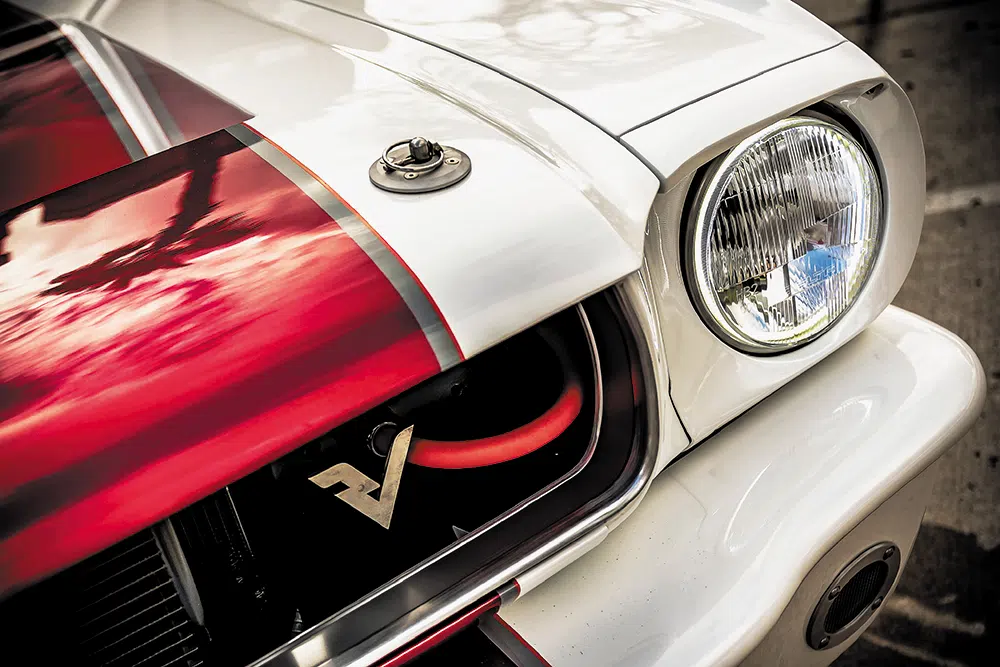
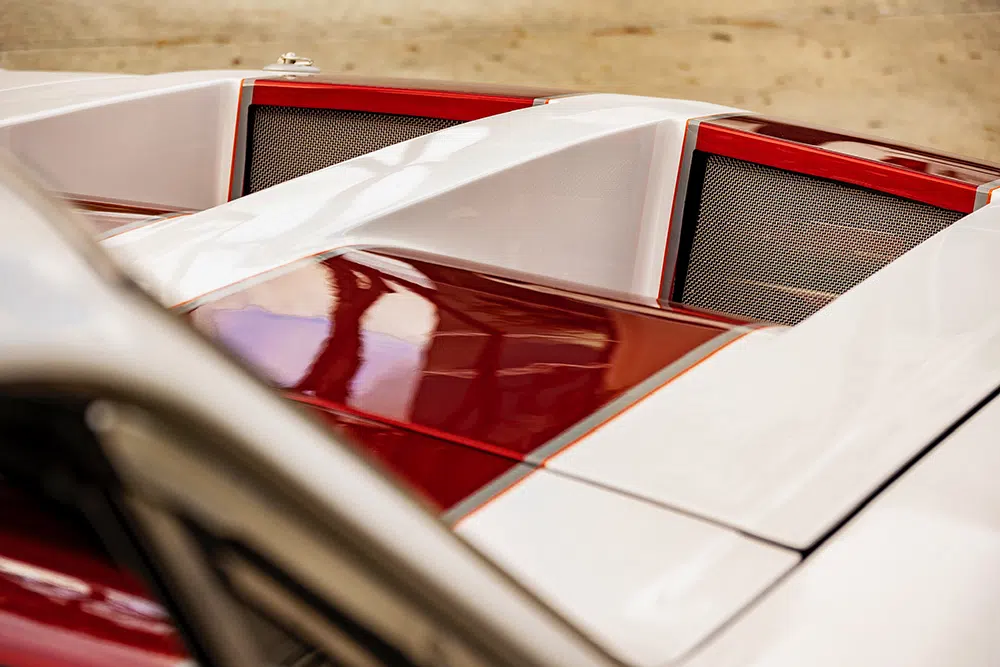
And for those considering building a similar EV, the team has some words of wisdom: plan ahead, take your time and seek out the pros for good knowledge. This is a new and vastly different world compared to traditional gas engines, so keeping an open mind and prioritizing safety when working with high-voltage systems is essential.
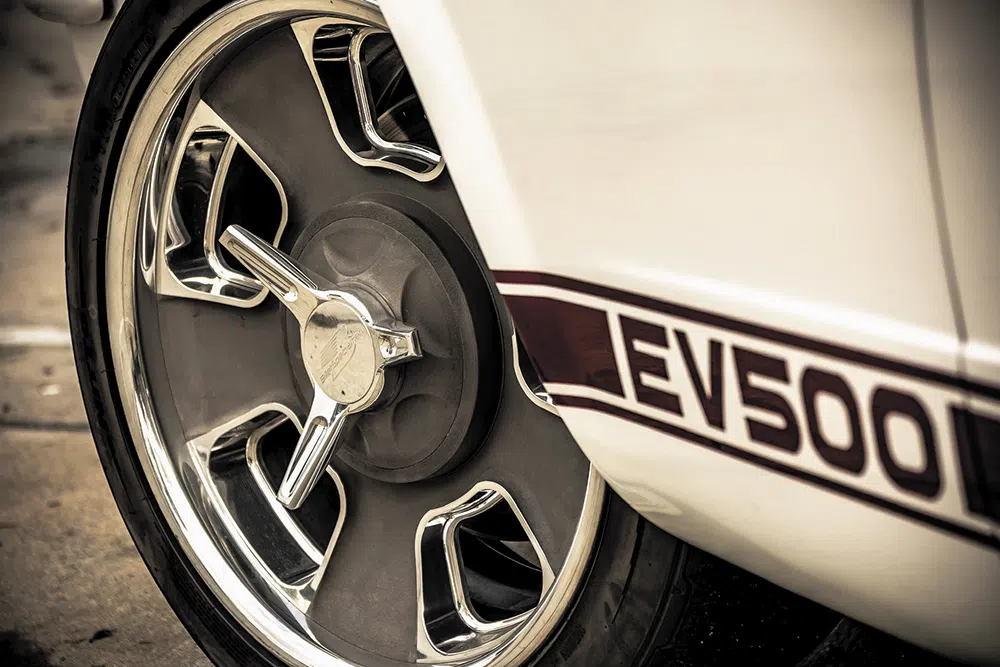
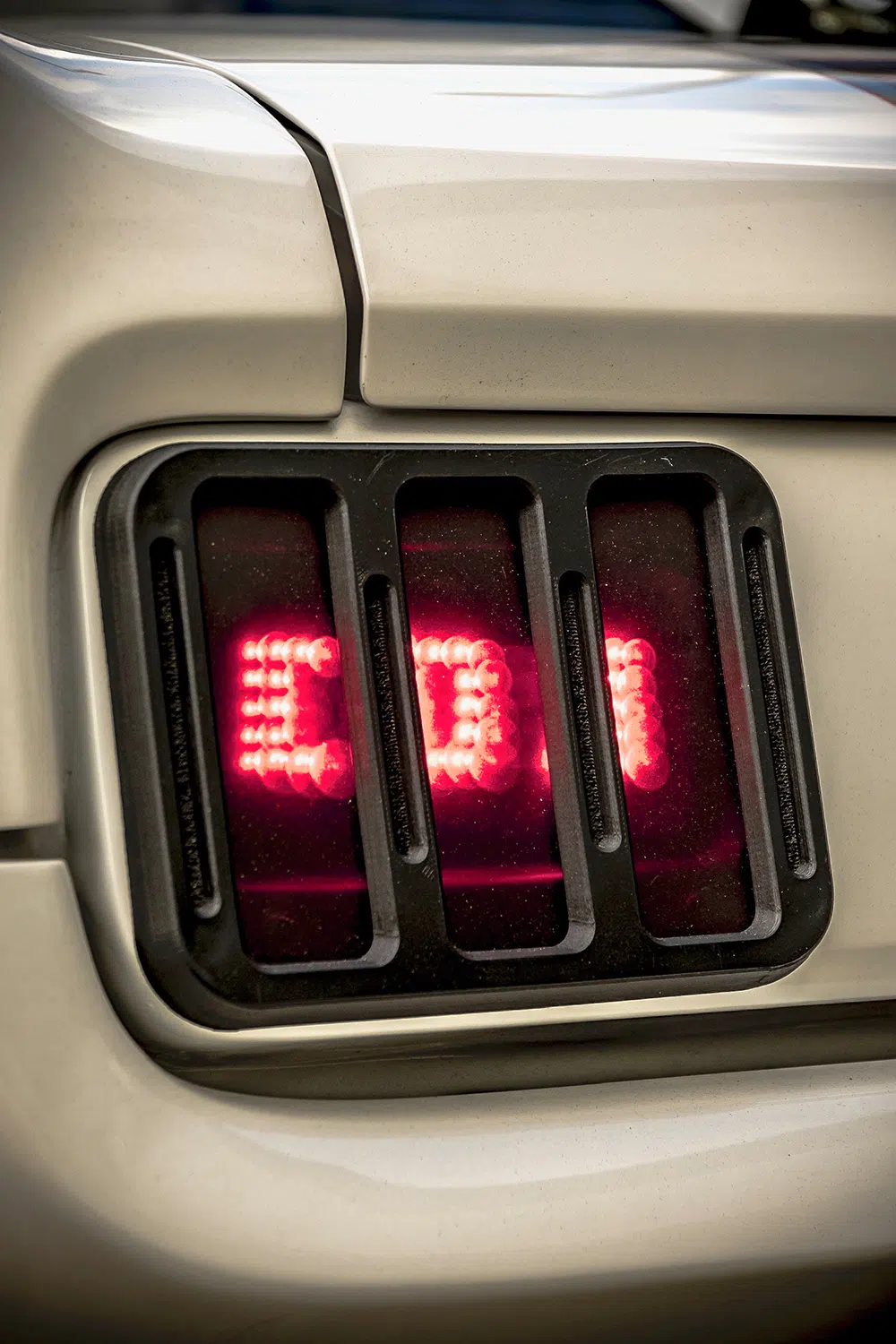
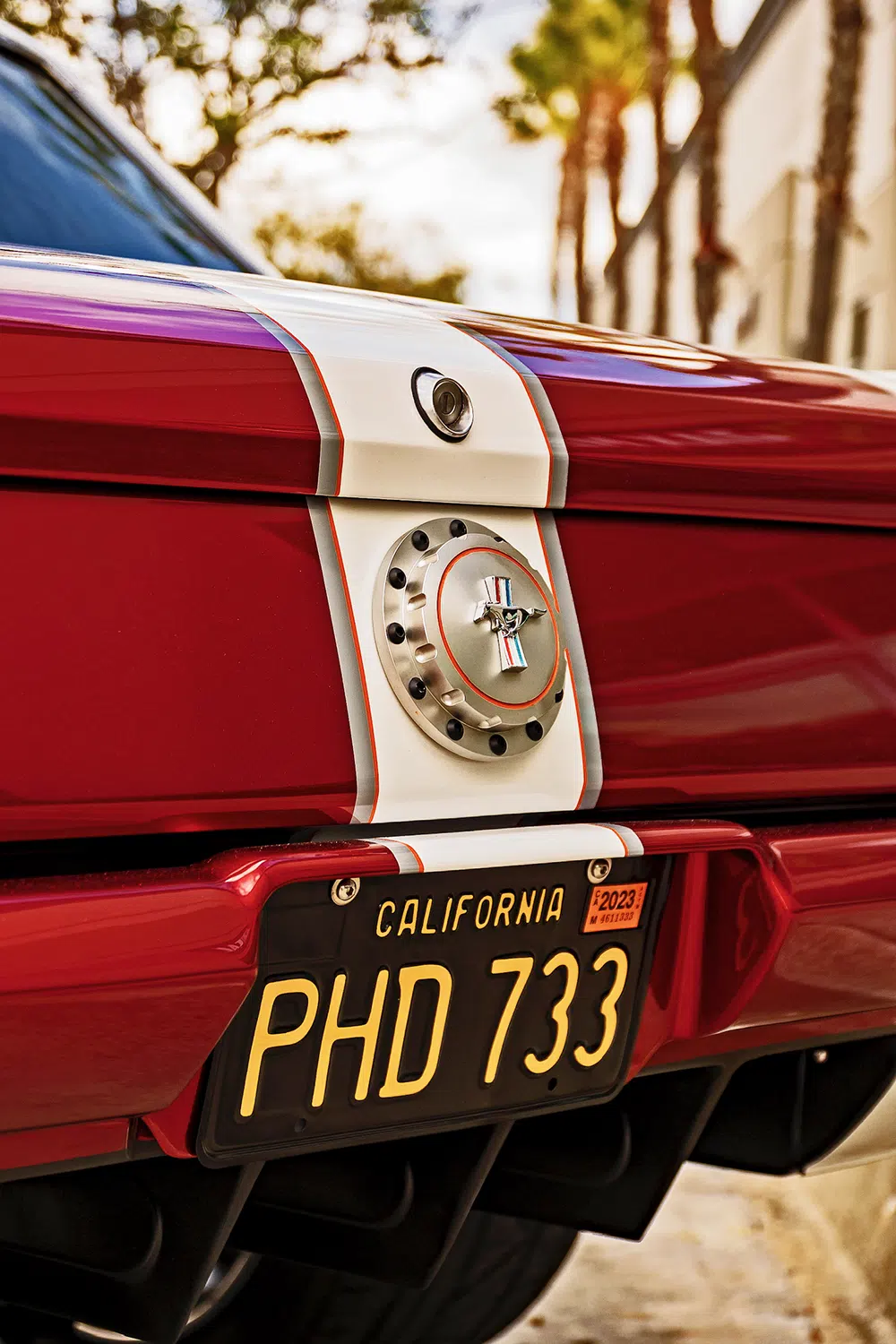
So hold on tight, as ReVolt Systems and their talented partners are far from finished with their electric conversions journey. Instead, get ready to be wowed by their upcoming builds, just as sick as this clean-as-hell ’65 Mustang. And they’re doing it with a witty touch that’ll make even fuel fans smile.
GT350: Few alphanumeric combinations resonate more with gearheads, whether or not they’re Ford fans.
The GT500 may have been the king of the road, but the GT350 was the working man’s hero: a small-town welterweight who made it big.
Ford has shown restraint in its use of the GT350 moniker, invoking it for only a handful of special-edition Mustangs since Shelby’s 1965 original. This past year, 2015, was one of those years, and we think the new GT350 is worthy of the name.
Ford and Shelby American first unleashed the GT350 in 1965. Ford designed the Mustang to run the gamut from six-cylinder “secretary’s car” to full-on racer; however, getting SCCA approval for the Mustang required some serious work, so Ford turned to Carroll Shelby. Shelby is a legend now, but back then he was a recently retired racing driver who was just starting to make a name for himself with his Ford-powered AC Cobras, and he was also being tapped by Ford to sort out the GT40 for LeMans.
The original GT350 took Ford’s “secretary car” and made it into a racing powerhouse more popular than ever in vintage racing today.
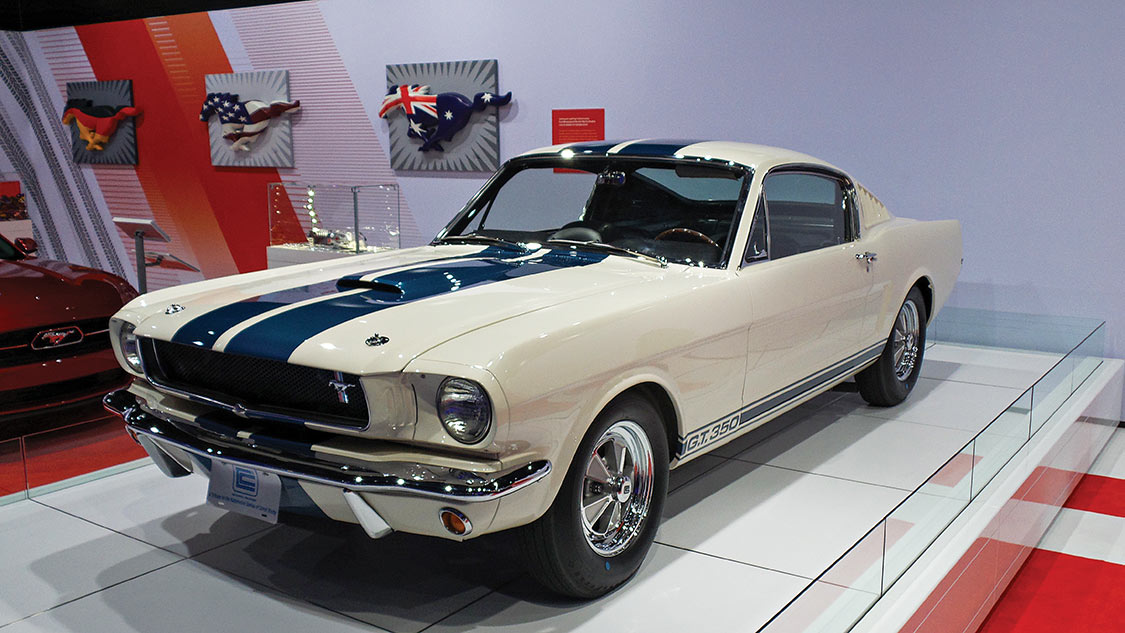
The original batch of GT350s started out as factory-built ’65 Mustang GT hatchbacks that were shipped to Shelby America in California for modification. There, the cars received a stiffened suspension with Koni adjustable shocks, extra body bracing, a beefier rear axle with a limited- slip diff and bigger brakes (Kelsey-Hayes discs up front and drums from a full-size Ford station wagon out back). Fifteen-inch mag wheels held Goodyear tires rated for 130 mph.
The 289-ci engine received a high-rise intake manifold, re-jetted four-barrel carb with center-pivot floats (to reduce fuel sloshing around under hard acceleration, braking and cornering) and tube headers, all of which raised the output by 35 hp to 306. Shelby’s crew finished off the cars with a fiberglass hood and the signature blue racing stripes.
Technically, the original GT350 was a homologation special, a run of street-legal cars necessary to get SCCA approval. The real raison d’être was the race-ready GT350R, which shared the GT350’s chassis mods and added a full-on blueprinted racing engine and a stripped-out interior.
For the recent 50th anniversary of the original GT350, was there a better time for a new one? But if you think the new GT350 is a just a tarted-up Mustang GT, think again.
The star of the new GT350 is the 5.2LV-8engine, code-named Voodoo. This is the first production engine from Ford to use a flat-plane crankshaft, which offsets the connecting rods at 180-degree intervals rather than the standard 90 degrees.
The flat-plane crank allows the firing order to alternate between cylinder banks, reducing exhaust pulse interference and improving high-rpm power. High rpms are the name of the game: the Voodoo redlines at a nose- bleed-inducing 8,250 rpm, and its peak horsepower is delivered at 7,500 rpm.
If you’re a gt350 aficionado, you know the original was more about the chassis than the engine.
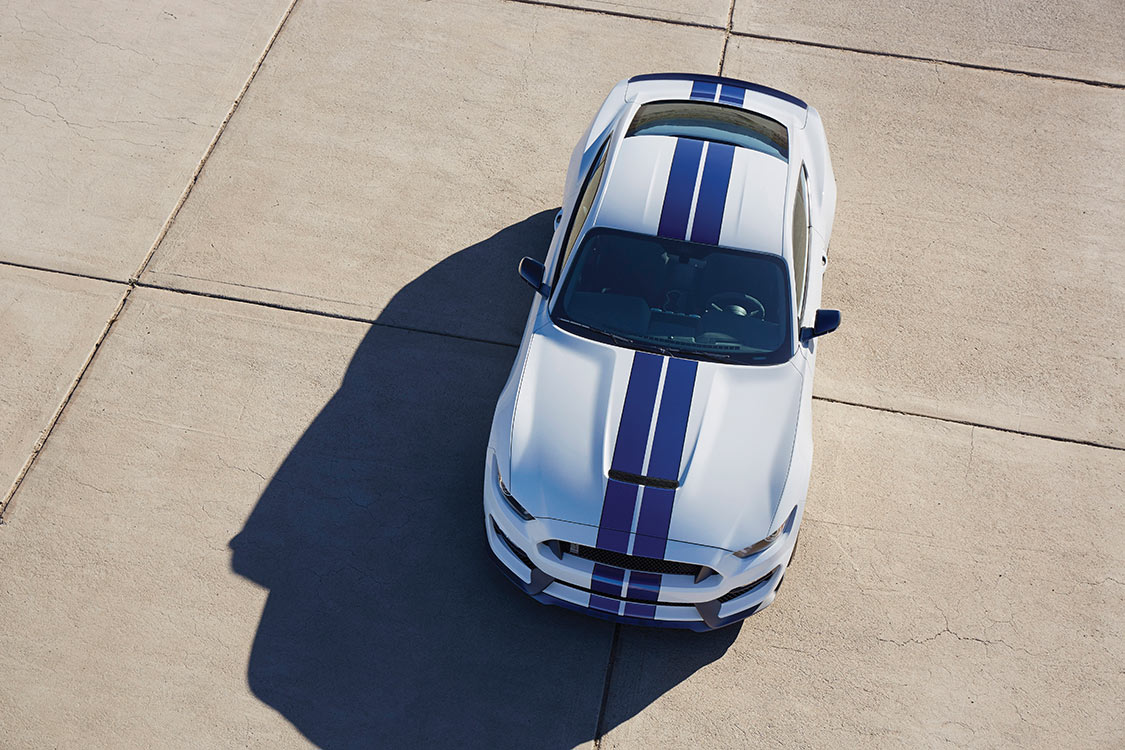
How much horsepower? Five hundred and twenty six. Let that number roll around in your brain for a moment: 526 horsepower. That’s more horsepower than an original ’65 GT350 and a plain ol’ 289 Mustang combined (and we’re ignoring the fact that ’65s were measured in gross horsepower rather than modern-day net hp).
We hasten to add that the Voodoo does not use forced induction; it’s the most powerful naturally aspirated engine Ford has ever produced. Peak torque is 429 lb-ft at 4,750 rpm, with 90% of the engine’s torque available between 3,450 and 7,000 rpm. All of this power is channeled through a six-speed manual transmission to a Torsen limited-slip differential.
If you’re a GT350 aficionado, you know the original was more about the chassis than the engine. The stock Mustang GT is, without question, the best-handling Mustang yet (helped by the adaptation of an independent rear suspension; only took ’em 50 years), but the GT350 strives for more. Along with revised spring rates and a lowered ride height, the GT350 gets a wider front track than the standard Mustang. Widening the track necessitated revised sheet metal, so all of the tin ahead of the A-pillar is unique, with a lower hood line and a carbon-fiber composite grille opening.
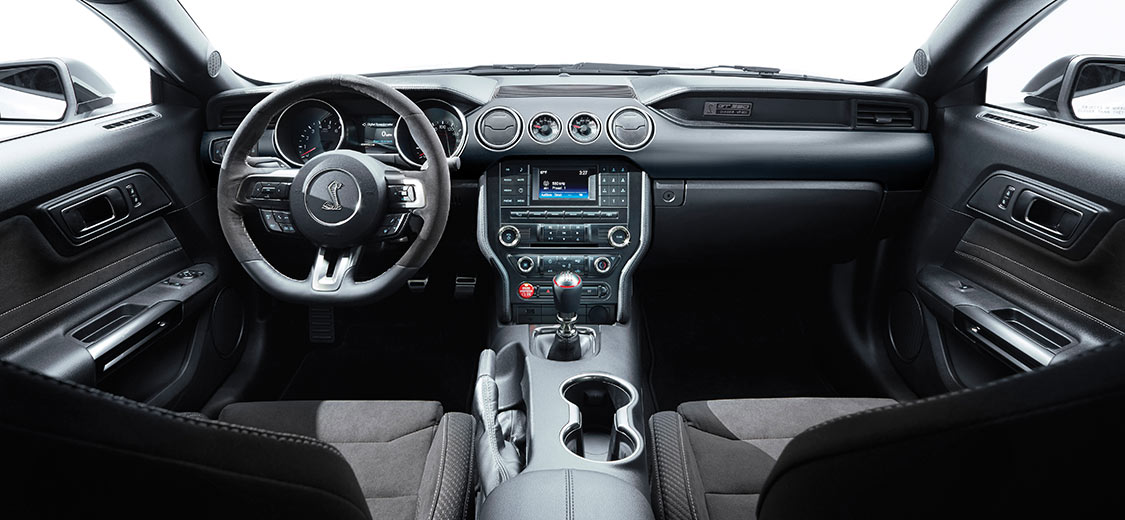
One of the most notable upgrades is the inclusion of MagneRide shock absorbers, which are a pretty big deal considering this is a pet technology of archrival General Motors (GM refers to it as Magnetic Ride Control, or MRC) that can be found in the Corvette, Camaro and Cadillac’s V-series cars. (Audi uses it for some of its high-end sporting models as well.) MagneRide dampers use a fluid that is impregnated with iron particles. When a magnetic force is applied, the fluid’s flow resistance increases. This allows the use of a more compliant shock that can be stiffened nearly instantly. Ford’s system monitors the motion of the wheels and can alter the shock stiffness every 10 milliseconds. We’ve been impressed by this system in other vehicles; it provides all the benefits of a super-stiff shock without the super-stiff ride, and we’re pleased to see it employed on the new GT350.
As with the original GT350, brakes are also on the upgrade list: six-piston Brembo calipers up front with four-pot calipers out back. Disc diameter is 15.5 inches up front and 15 inches in the rear; the rotors are two-piece, cross- drilled, iron units with aluminum hats. Why no carbon fiber? Ford said it wanted to keep the price down.
You’ll find those brakes nestled inside of 19- inch aluminum alloy wheels, 10.5 inches wide up front and an extra 1⁄2-inch in the back. Tires are Michelin Pilot Super Sports with a tread pattern unique to the GT350.
Just like Shelby did back in 1965, Ford created a special track-ready version of the GT350, and it too is called GT350R. Costs a pretty penny but no doubt you’ll think it worth the extra cash. Changes include significant chassis, suspension and body changes as well as a severe diet.
Upgrades start with the suspension, with unique spring rates, sway bars and bushings and special tuning for the MagneRide dampers. The ride height is slightly lower than the standard GT350, and the front suspension features cross-axis ball joints. Even the alignment settings are unique to the R.
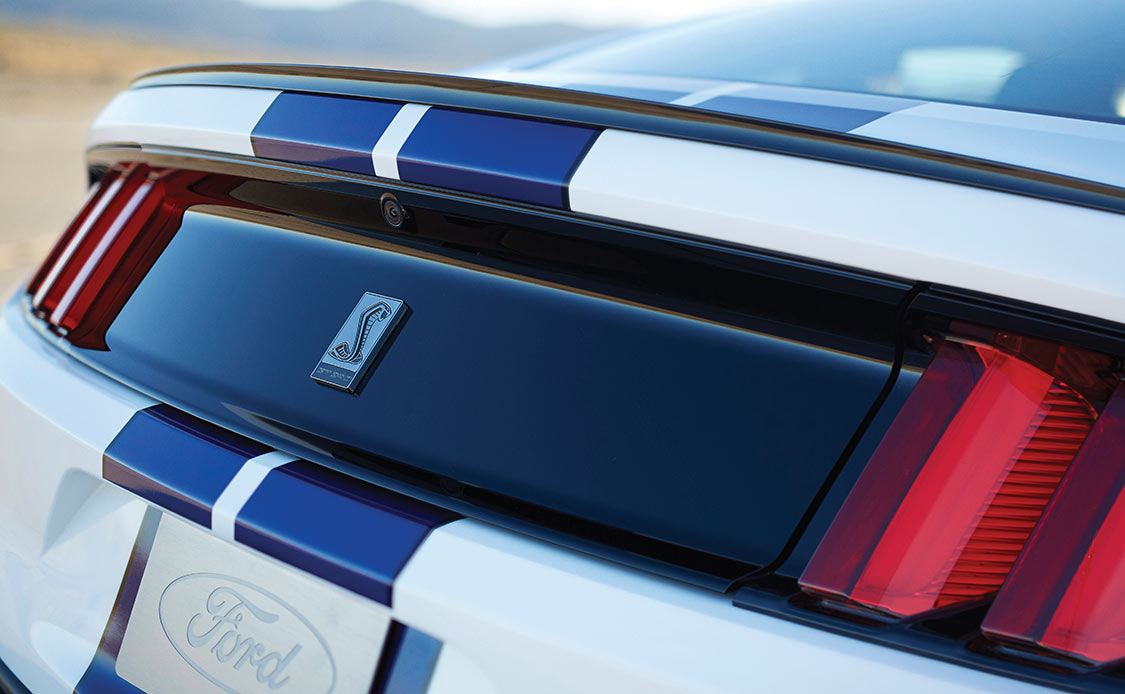
Weight reduction is a key element in the GT350R, so the rear seats, air conditioning, stereo, trunk floor, tire repair kit, backup camera and even the exhaust resonators have been sacrificed. (Those who want a little more comfort for street driving can order air conditioning, a stereo and navigation as part of an option package.) Carbon-fiber wheels shave 13 pounds of unsprung weight per corner compared to the GT350’s aluminum wheels, and they are shod with Michelin Pilot Sport Cup 2 tires with a 350R-specific compound.
Finally, the R gets revised aerodynamics in the form of a revised front splitter and carbon-fiber rear spoiler, both of which work to increase downforce and move the center of pressure towards the back of the car. Red-painted brake calipers, red interior trim and a red edge to the distinctive racing stripes visually separate the R from the other GT350 models.
Ford is in full production as of 2016. Official pricing has the GT350 at about $50,000 while the R will fetch $63K. That, of course, is before dealers decide if they’re going to add a hefty price premium to their stock.
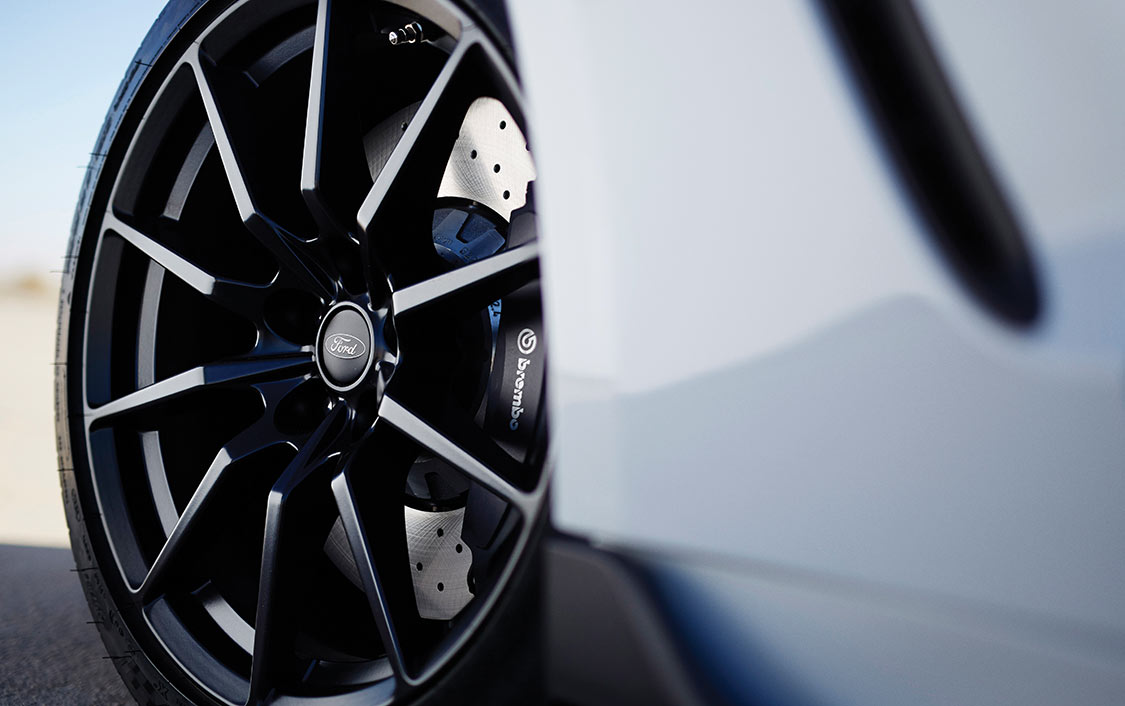
It’s hard not to be excited about a 500-plus-hp Mustang, but we’re intrigued not just the big power numbers; we also appreciate the attention to other equally important details. Having seen what Ford can do with previous-gen Mustangs (much as we love the Shelbys, the M3- chasing Boss 302 remains one of our favorites), we’re looking forward to our chance to run the new GT350 both on the street and on the track, now that it’s available.
Most of all, we’re pleased that Ford is treating the GT350 moniker with the respect it deserves by building a car in the spirit of the original. Ol’ Carroll may be gone, but we think he’d be rather fond of this new GT350.
Editor’s Note: A version of this article first appeared in the April 2016 print issue of the Drive Magazine.
Ford’s 8.8-inch differential is a strong and popular rear end for retrofitting classic or older Mustangs. But performance enthusiasts often ask, why not just use a Ford 9-inch.? There are a number of good reasons to justify the 8.8-inch over the former.
First of all, the 8.8-inch axle can readily handle the power and torque of a modified 302-cu.-in. or 351-cu.- in. Ford small-block V-8. Cost is also a factor: There are thousands of Fox-body Mustangs with 8.8 rear ends in recycling yards all across the U.S. that can be easily purchased for a very reasonable price.
This rear end is lighter than a 9-inch and is almost as strong. And the other nice thing about the 8.8-inch unit is that the width is about the same as the older stock Mustang rear end, so it’s not necessary to have the housing narrowed. And the newer units come with disc brakes.
It is fairly simple to change out the original tired rear end and put in a newer, stronger one that will give years of trouble-free use. The newer cars don’t have rear leaf springs, so old-style spring perches need to be welded to the newer axle housing. After that, it’s just pull out the old and slide in the new.
We should note here that Positraction, or Posi for short, came stock in the later-model Mustang GTs and some other late-model Ford cars and trucks, but most of the 8.8 axles available today came with what we call an “open differential.”
With an open differential, power is transmitted to the axles via a set of simple gears in the differential/ring gear housing. These gears allow for one axle to spin at a different speed from the other, which is necessary when negotiating tighter turns. When driven-wheel traction is more or less equal, power is distributed equally to both wheels.
If one wheel loses traction significantly enough to cause the wheel to slip on the road surface, all power will then be transmitted to that wheel, until even grip is restored. Usually reducing power to the drive wheels is the quickest way to stop the wheelspin, but it doesn’t do much for getting the vehicle going rapidly again in a forward direction.
As most car enthusiasts already know, one of the best ways to get power to the wheels is through a Posi or limited-slip differential. Positraction is Eaton’s trade name for the company’s limited-slip differential. It was first introduced in 1961 and gained notoriety during the muscle car era as a strong, reliable unit.
Before we show how to install one, let’s clarify the difference between a limited-slip differential and a locking differential. Basically, a limited-slip differential sends power to the non-driving wheel based on input torque, which is power coming to the axle from the engine. In contrast, a locking rear differential, such as a Detroit Locker, locks the drive and non-drive wheels together based on wheel slip at the drive wheel, regardless of engine power input.
With a limited-slip unit, when high torque is applied to the differential and transferred to the axle, a spring-loaded clutch pack clamps the gears to the differential case. This clamping action is in proportion to the torque delivered, which means that the higher the torque, the higher the clamping force.
The idea is to prevent wheel slip at either wheel. If one wheel starts slipping before the other, the clamping force drops in proportion to the amount of torque delivered to the slipping wheel. So, when one wheel loses traction, the Eaton positraction automatically kicks in, locking the rear wheels together and sending power to both. The whole point of the torque-sensing limited-slip differential is to reduce the likelihood of wheel slip.
Eaton Posi Performance Differentials feature a patented carbon-friction material originally designed for racing brakes and clutches. Made from high-temperature carbon fiber wrapped with a carbon anti-wear coating, the discs are virtually indestructible, Eaton claims. And despite repeated hard use, there is no loss of performance.
Eaton’s warranty says that the patented carbon material provides smooth, quiet operation over the life of the vehicle. We were very impressed with the new limited slip. After installing it in a 1967 Mustang with a built 302 engine, we took it out on both dry and wet pavement and the unit worked perfectly. It really made a big difference in the performance with both wheels hooking up when the power is applied.
Dan Sudul of Dan’s Gears usually completes this type of installation in just over two hours, but with us “helping,” asking questions, and taking photos and notes, it took about twice the time. With a bit of experience, you can probably install a Posi quicker than that.
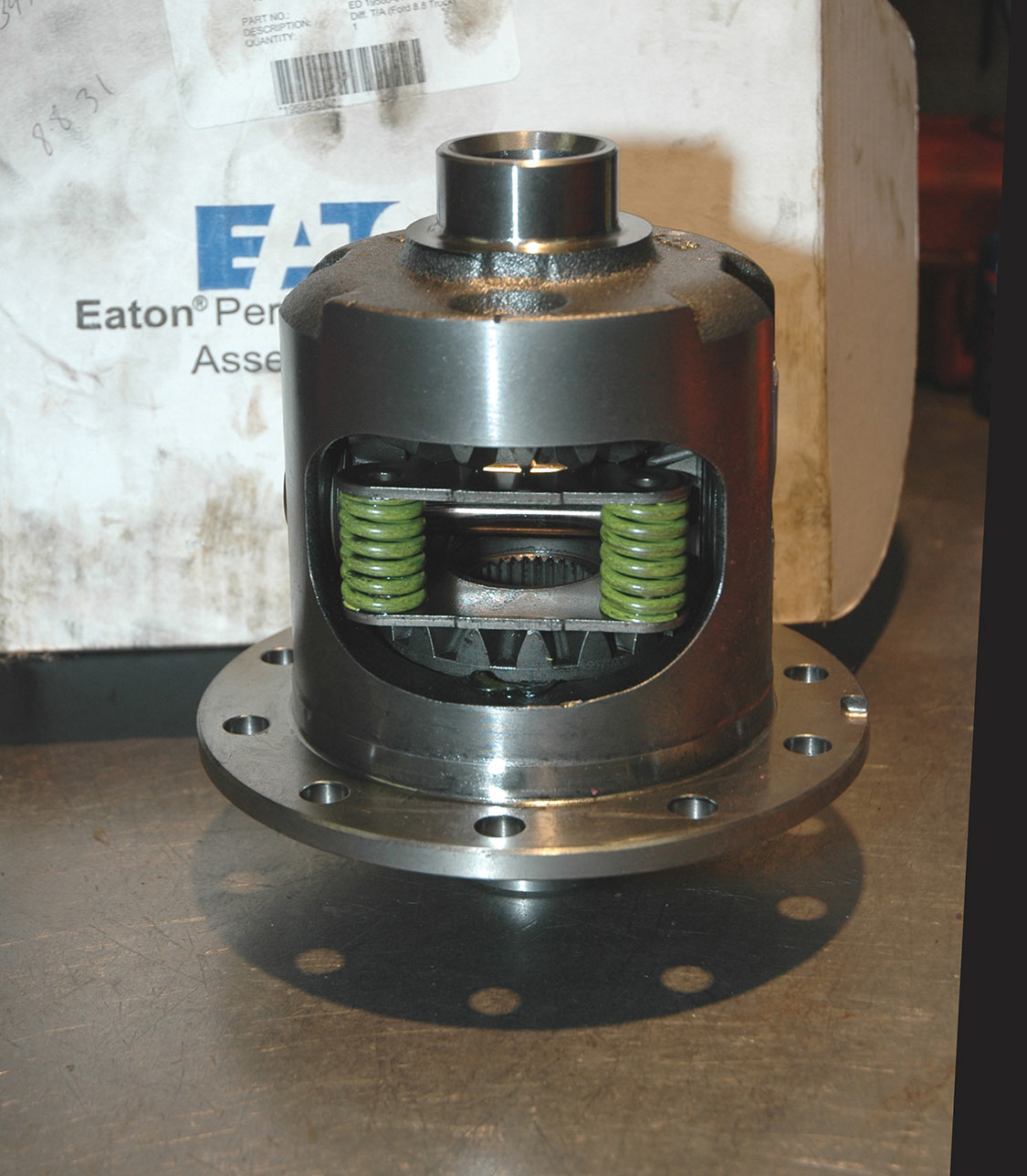
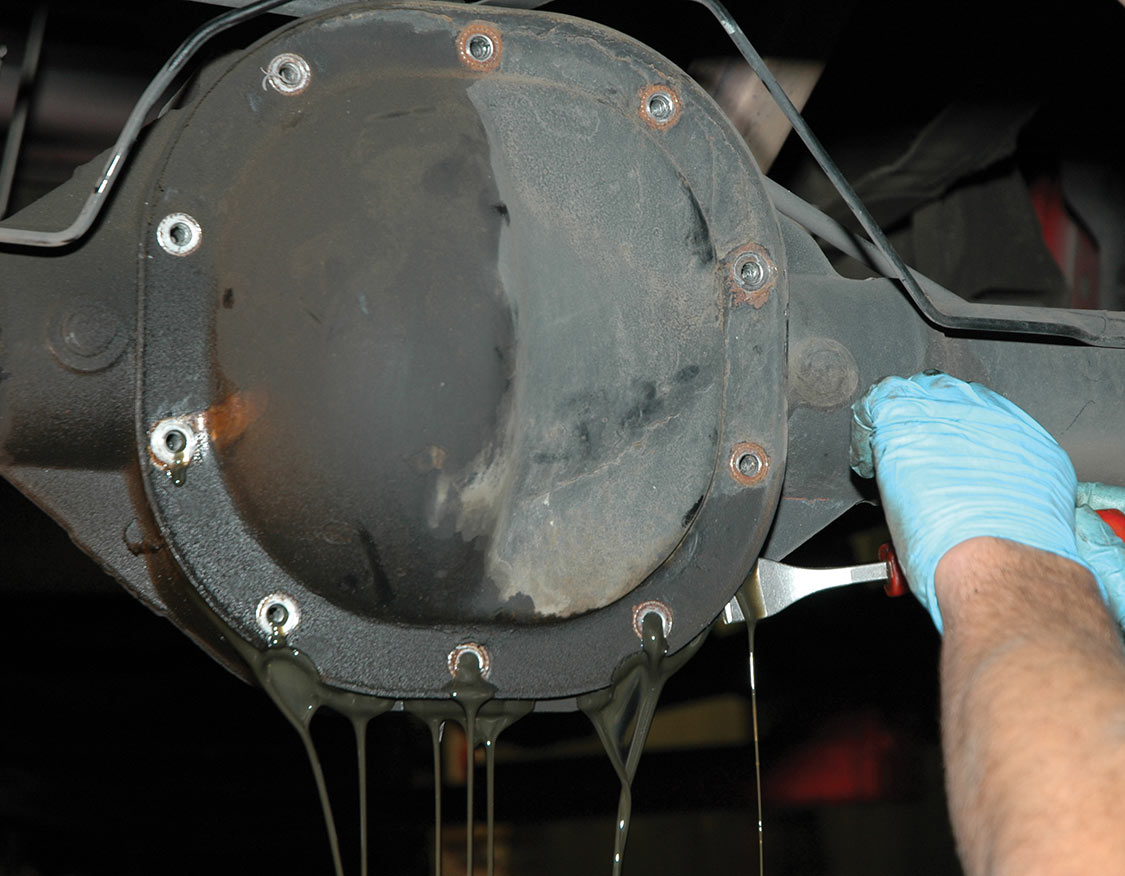
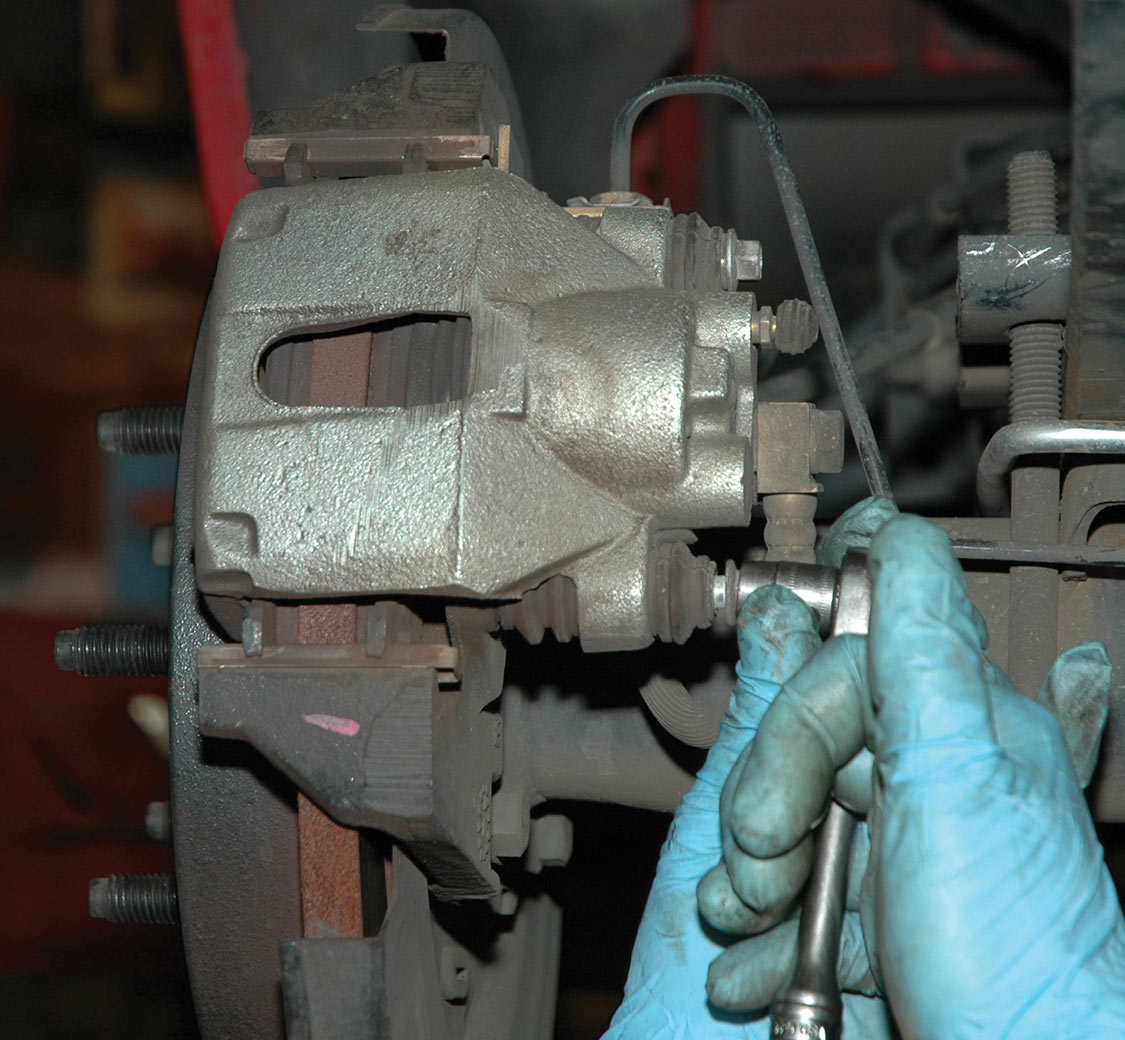
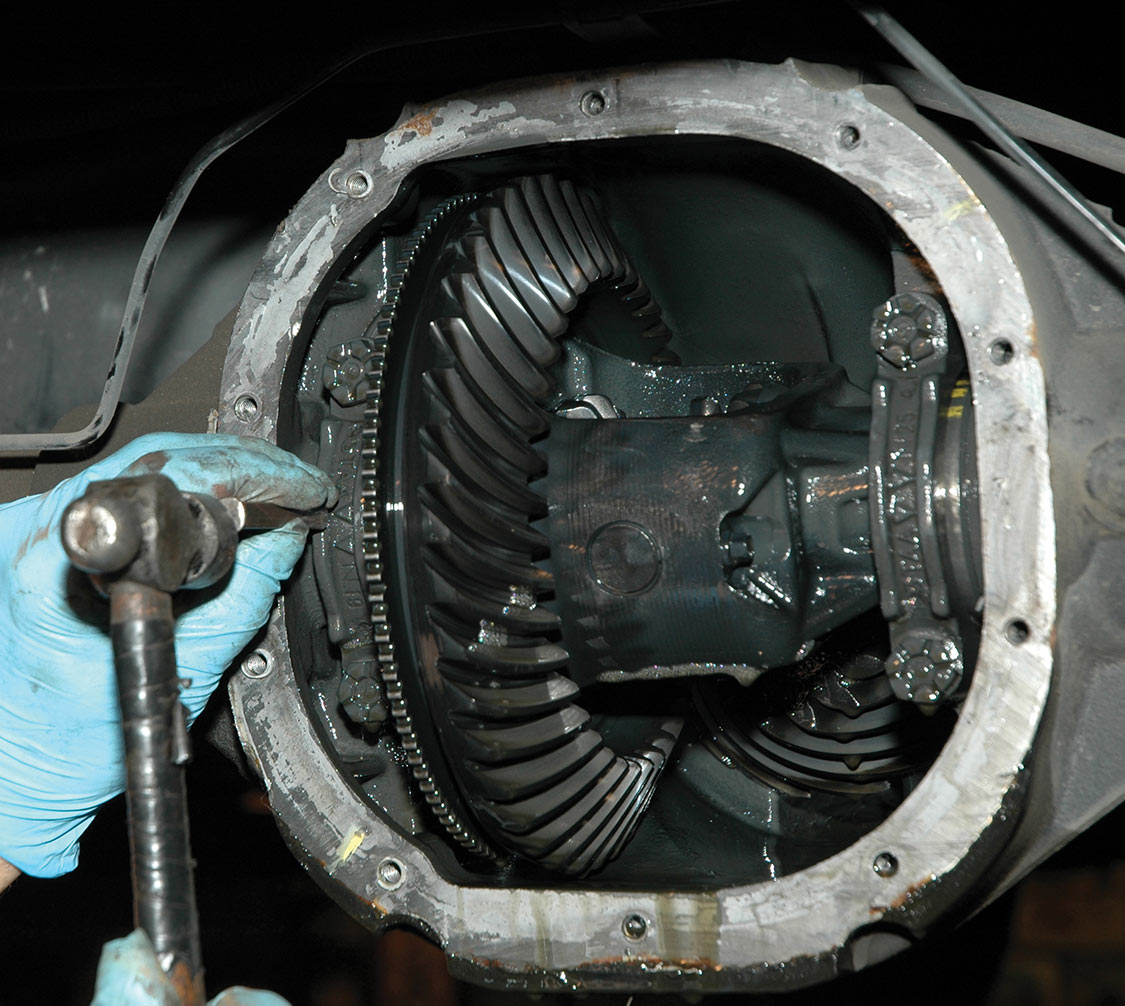
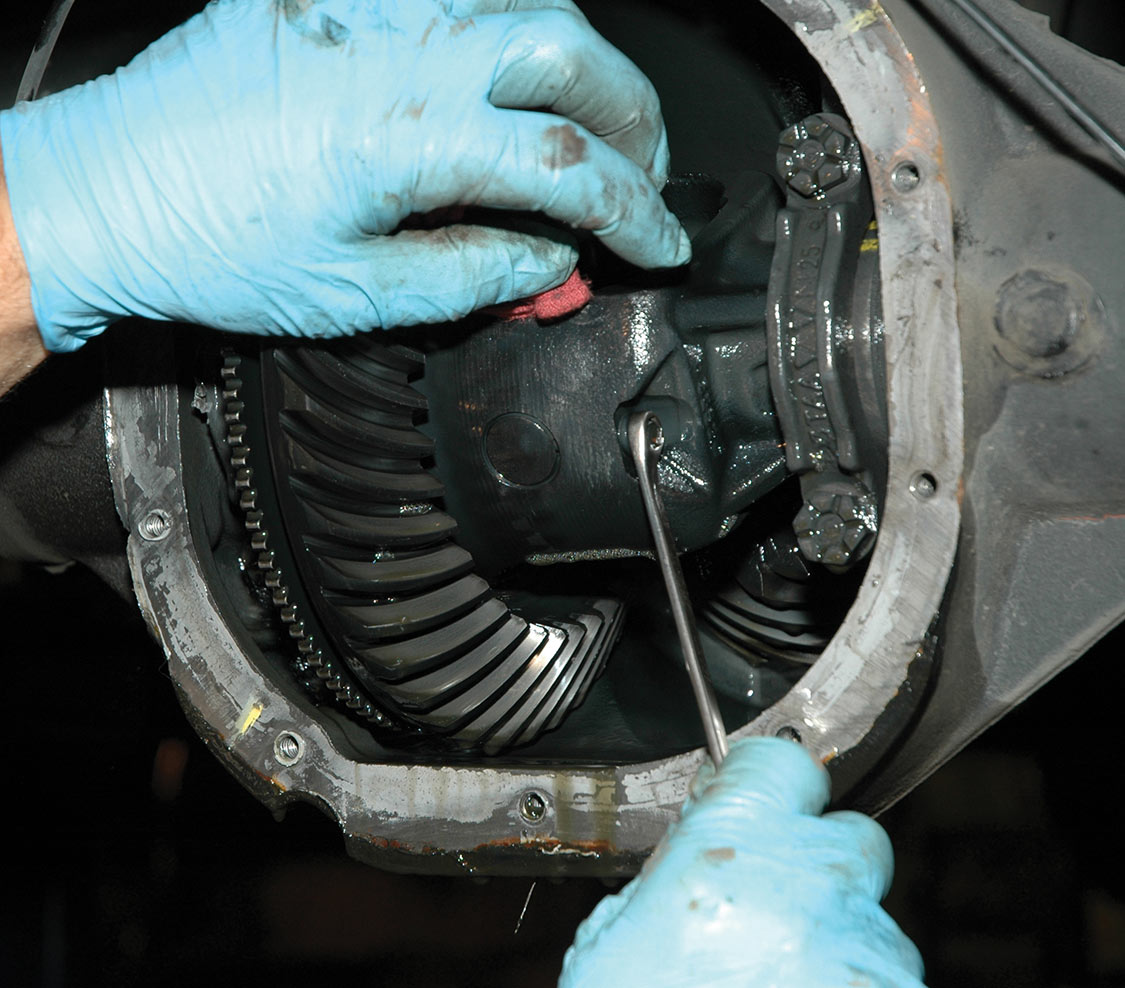
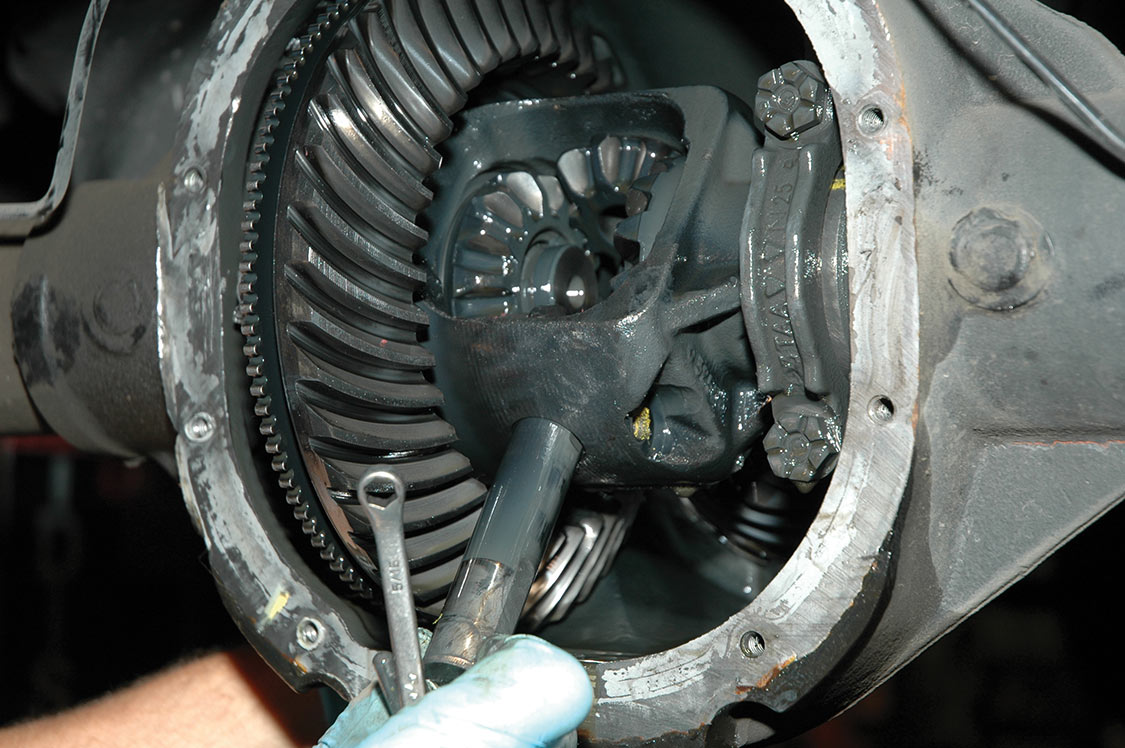
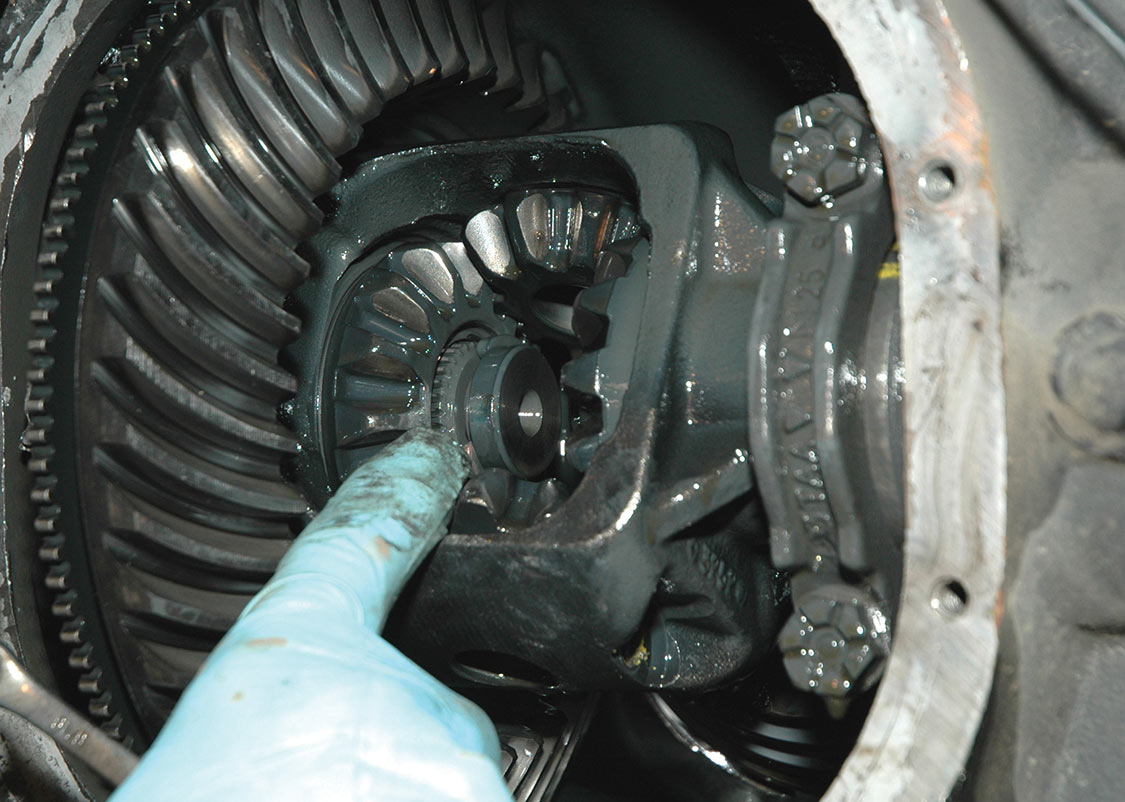
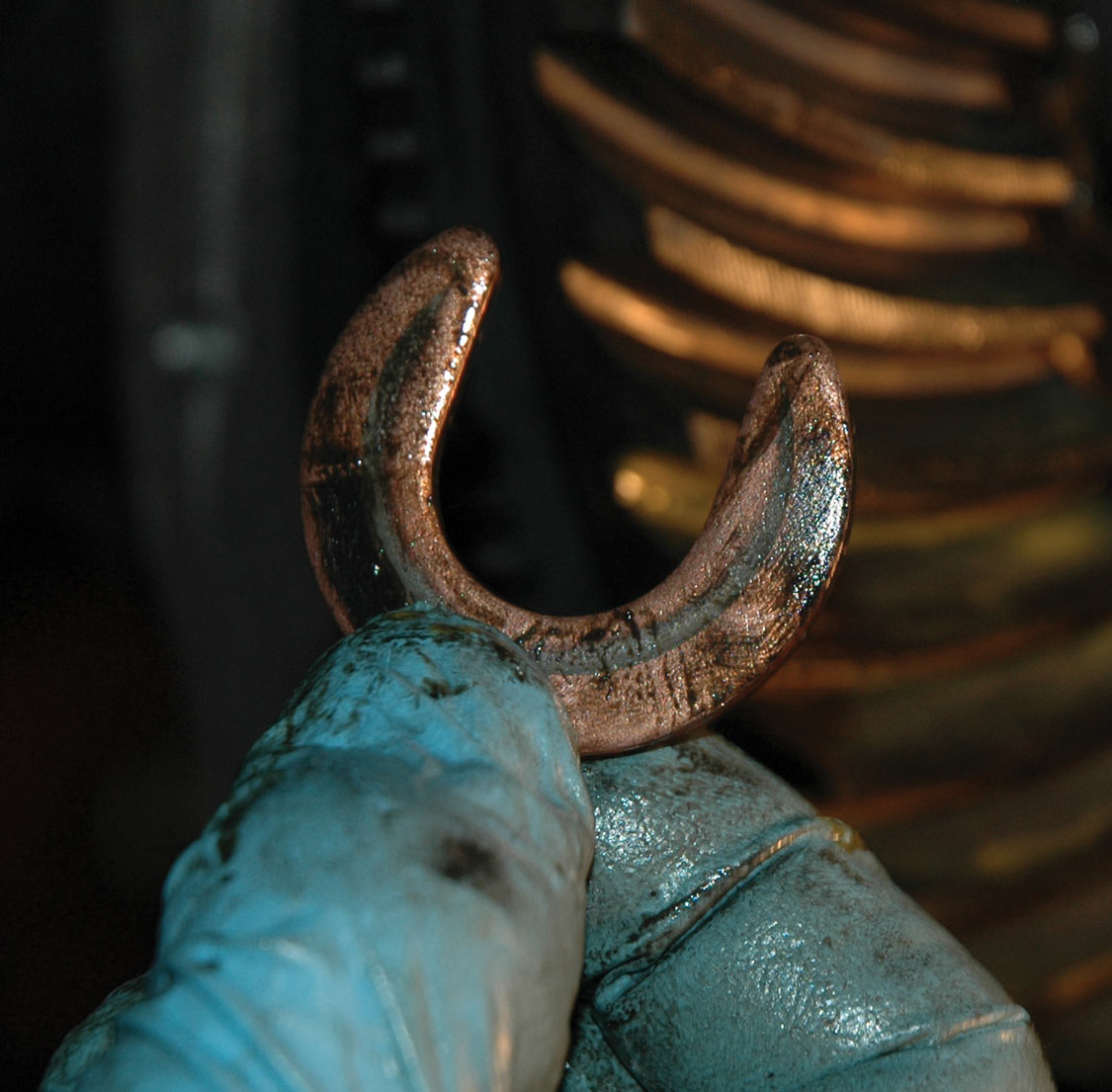
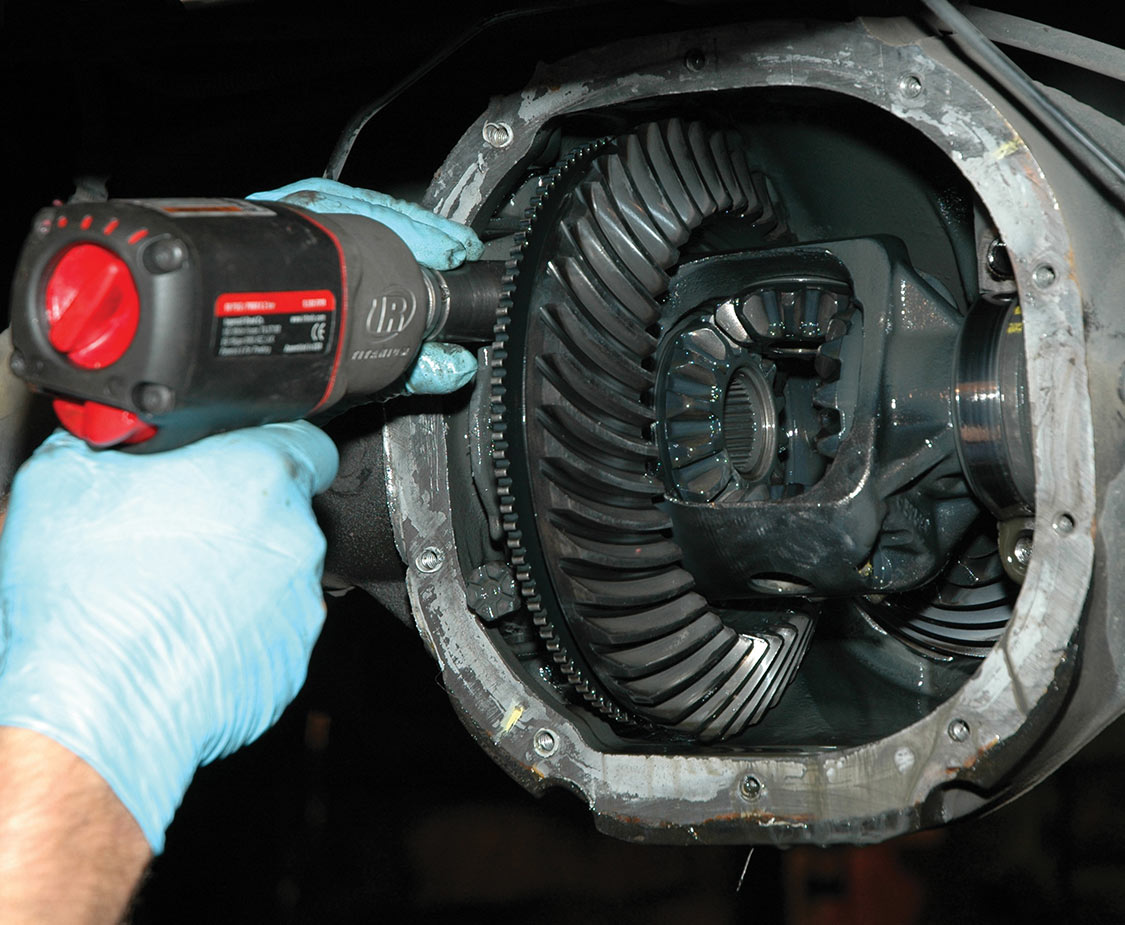
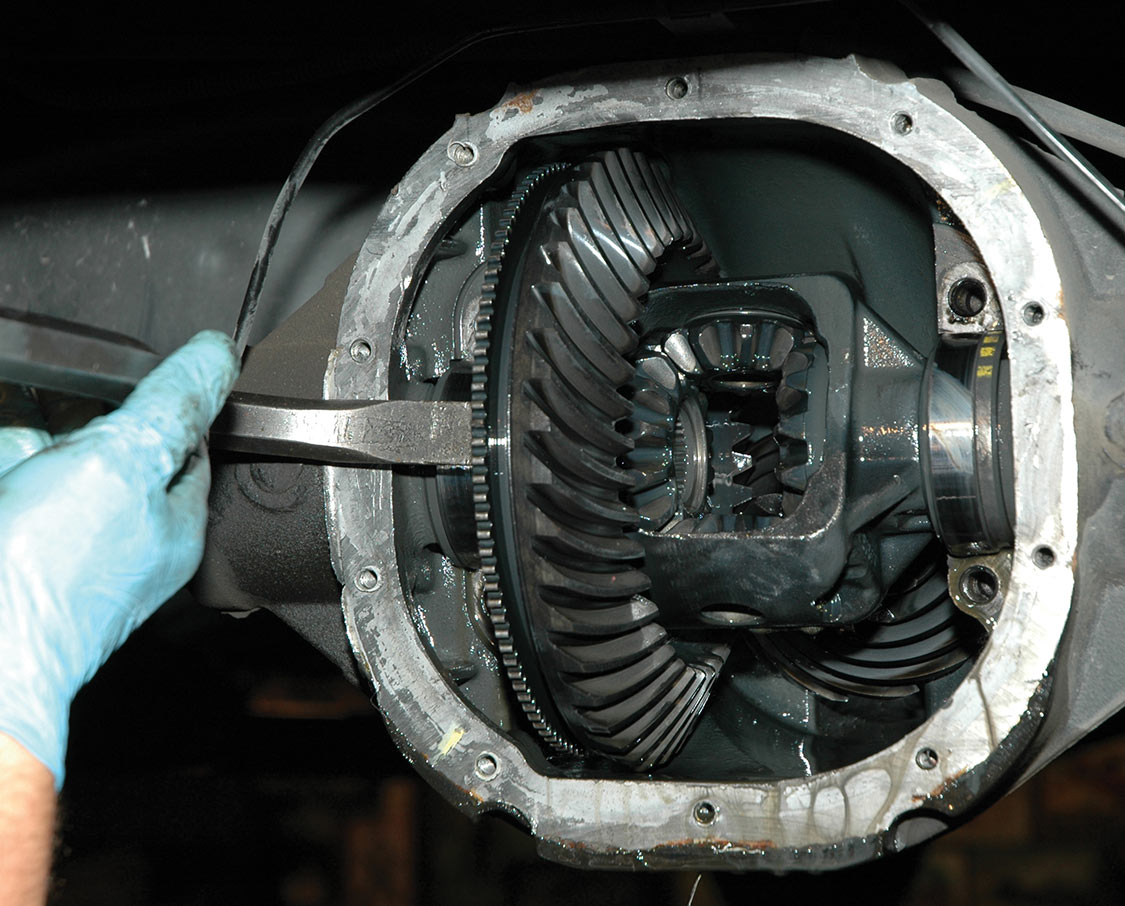
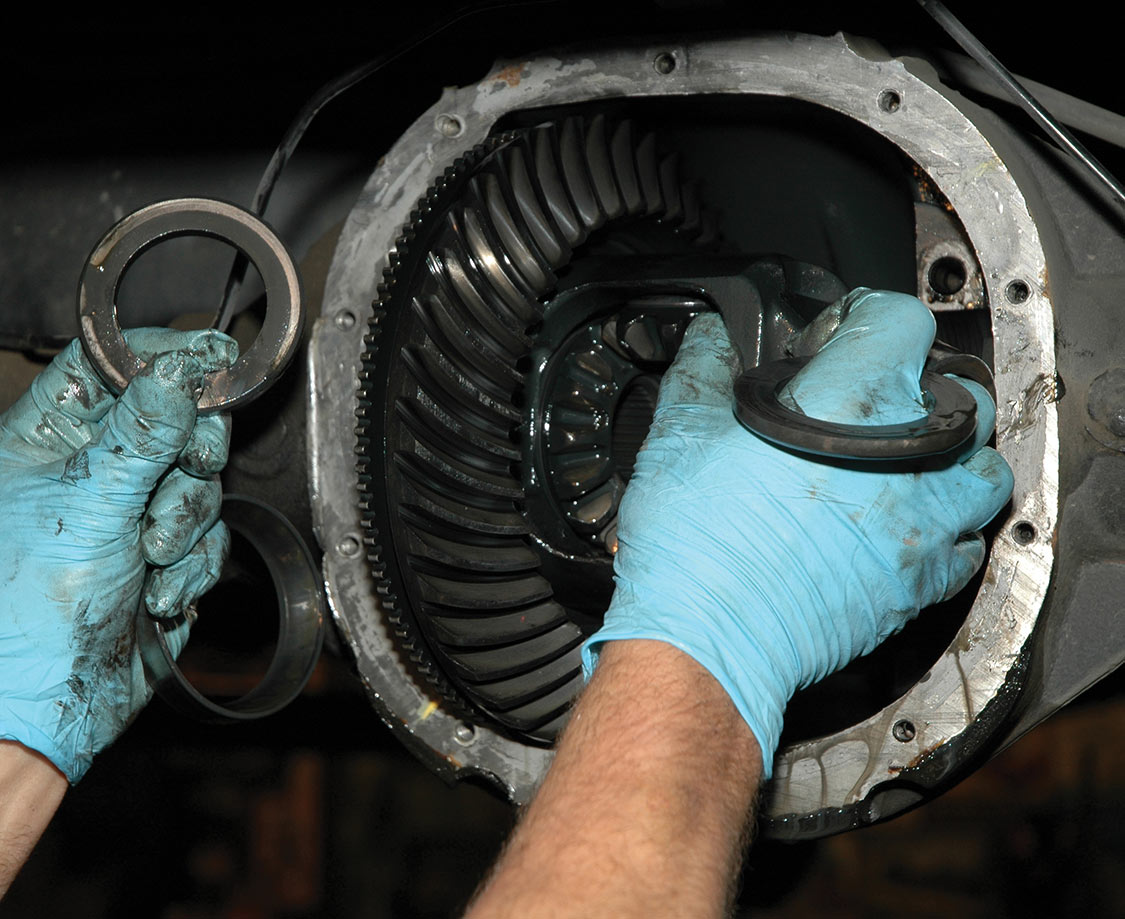
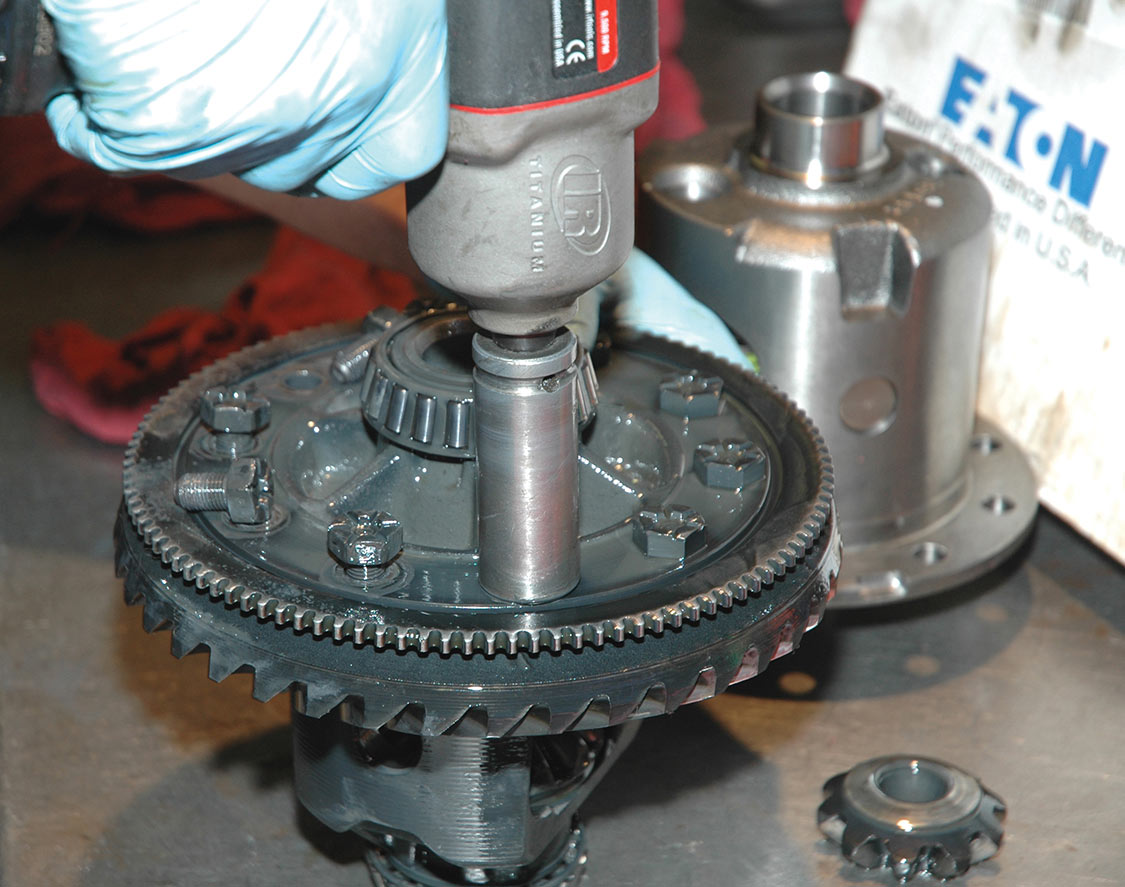
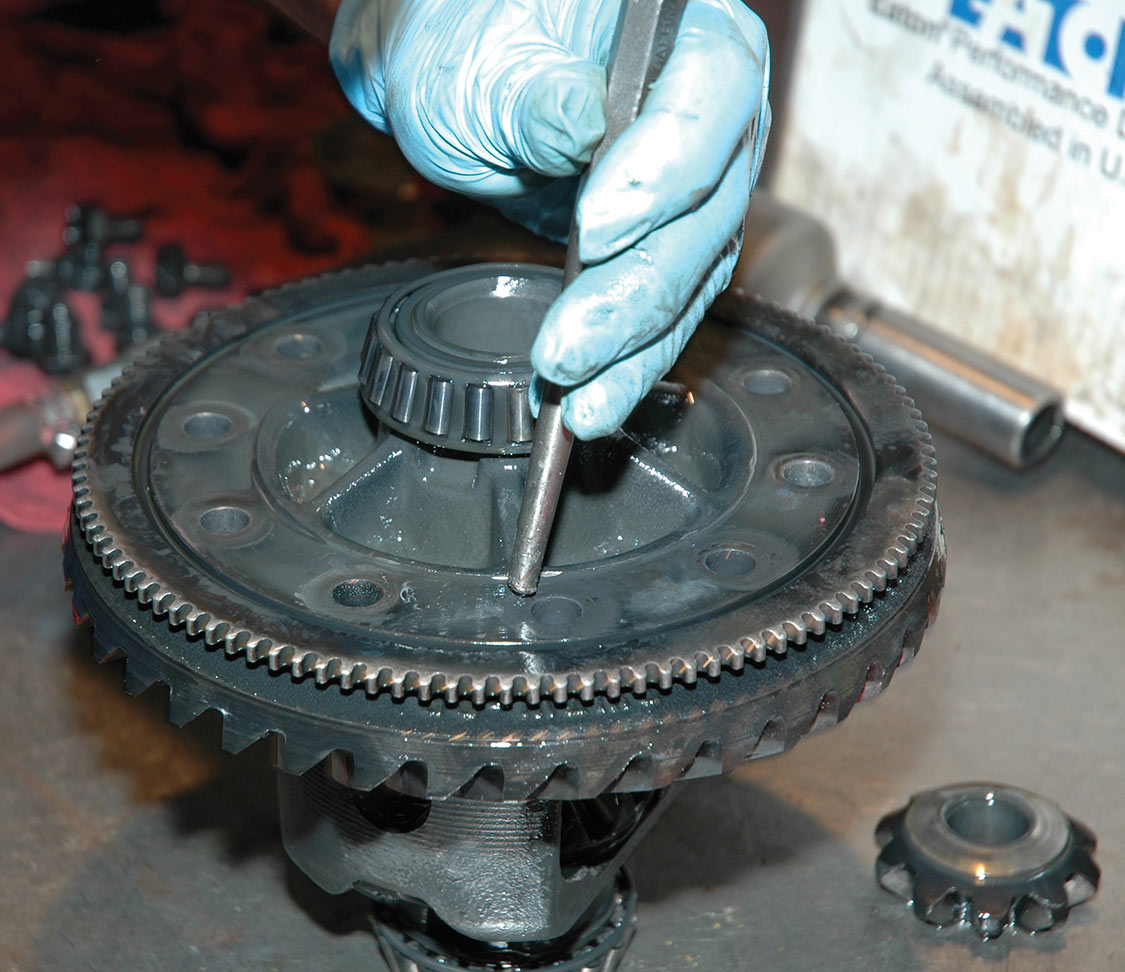
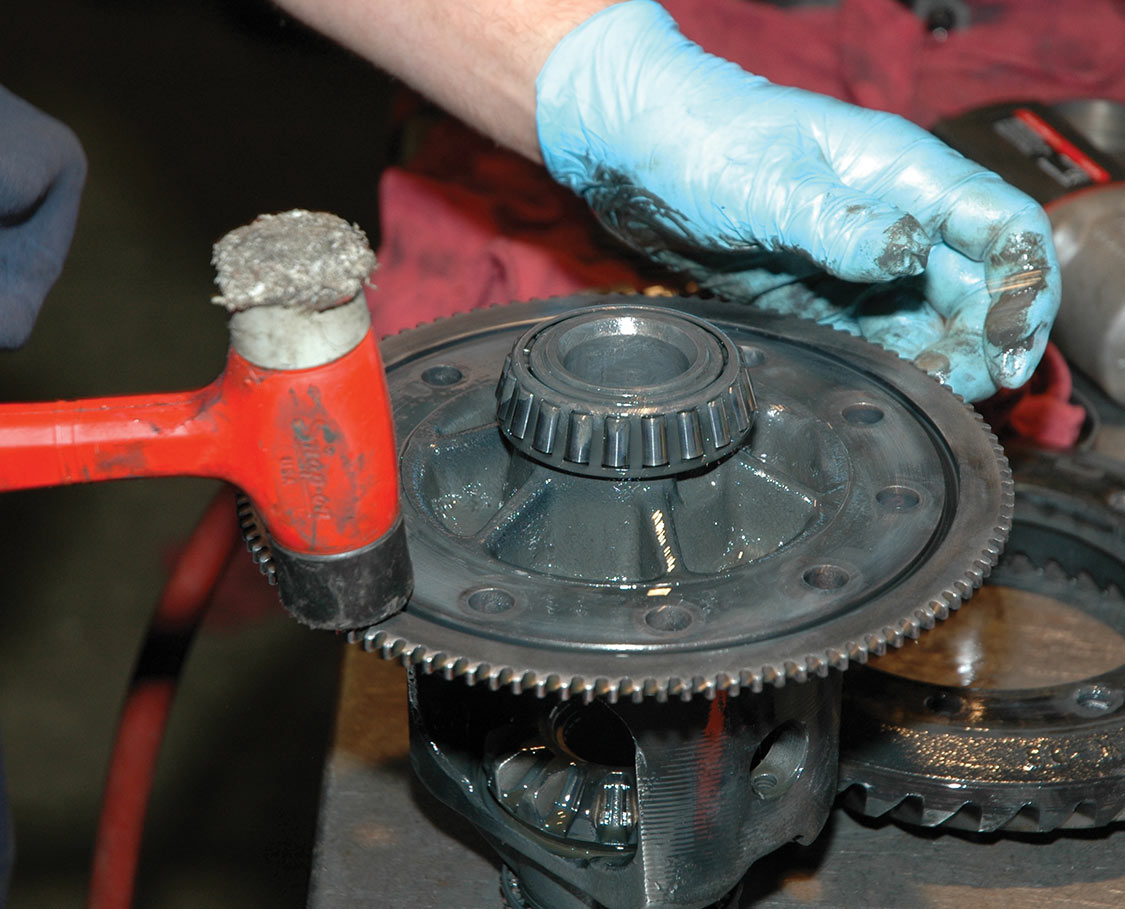
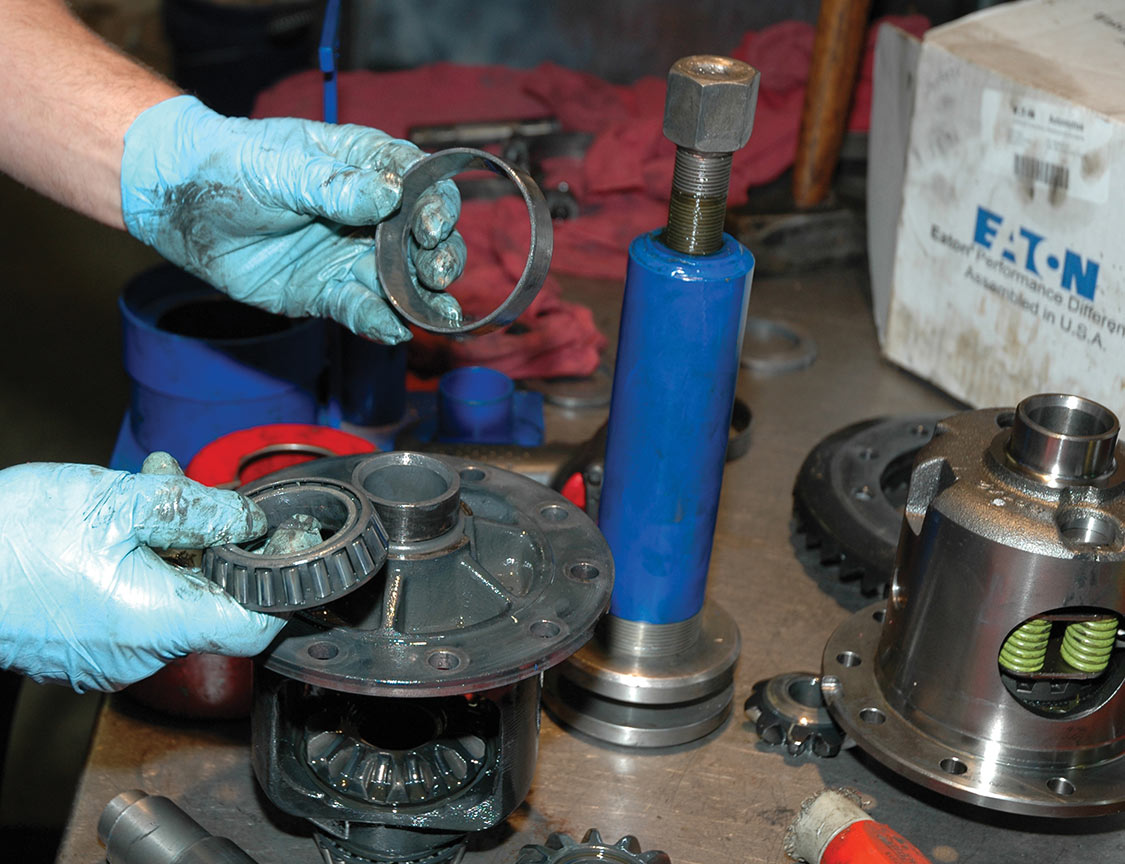
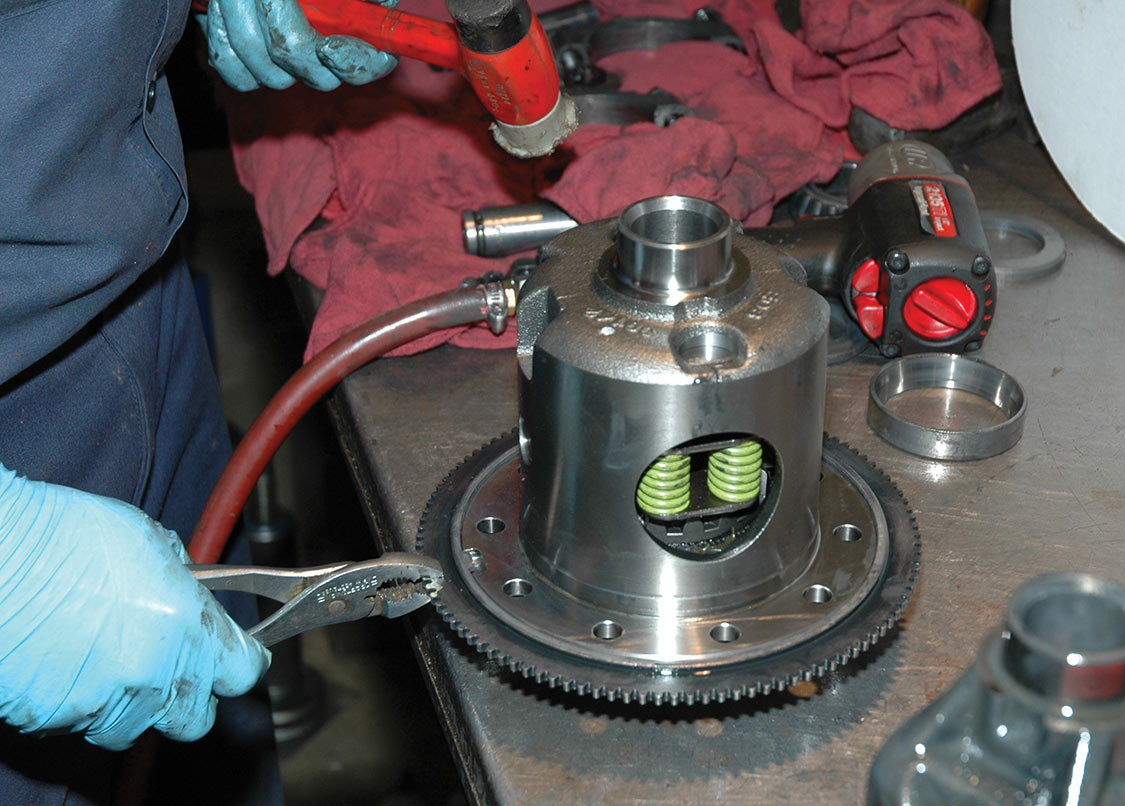
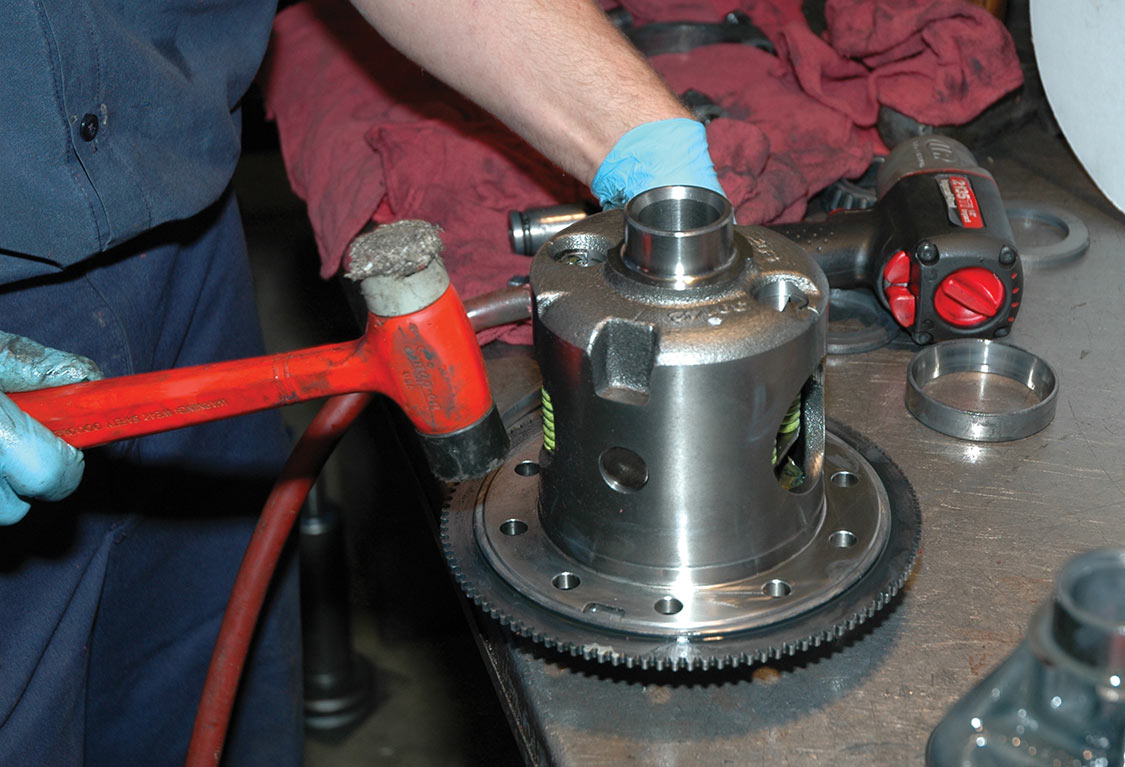
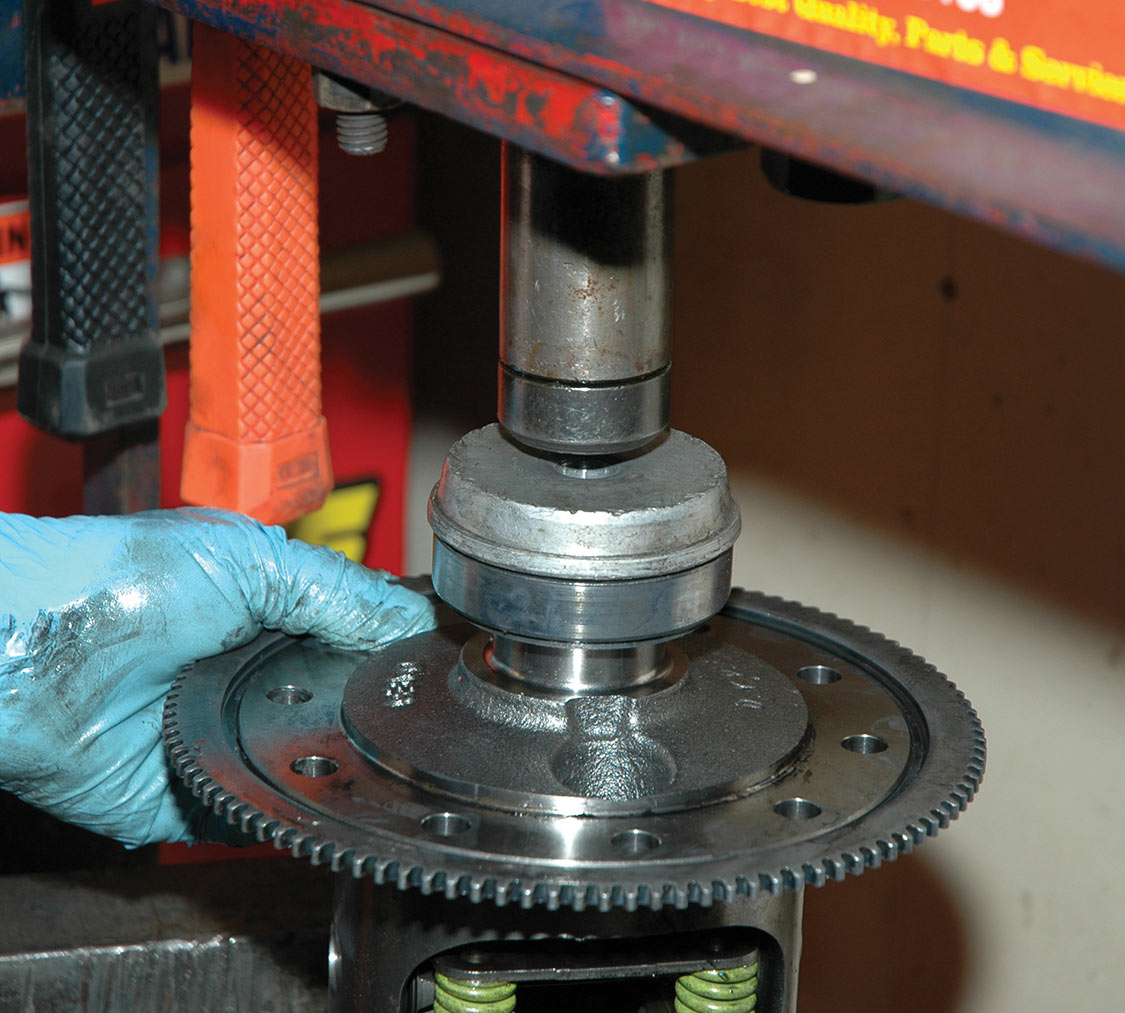
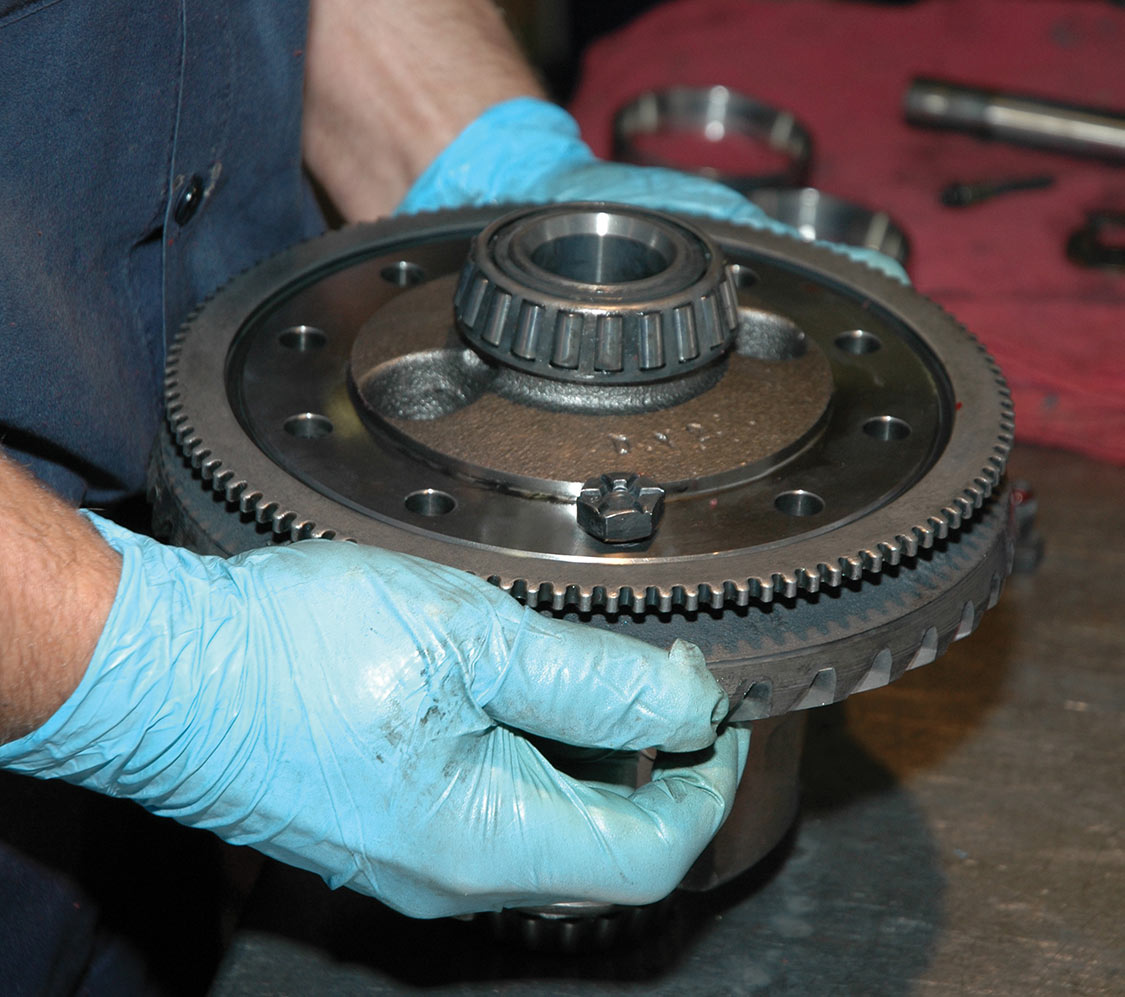
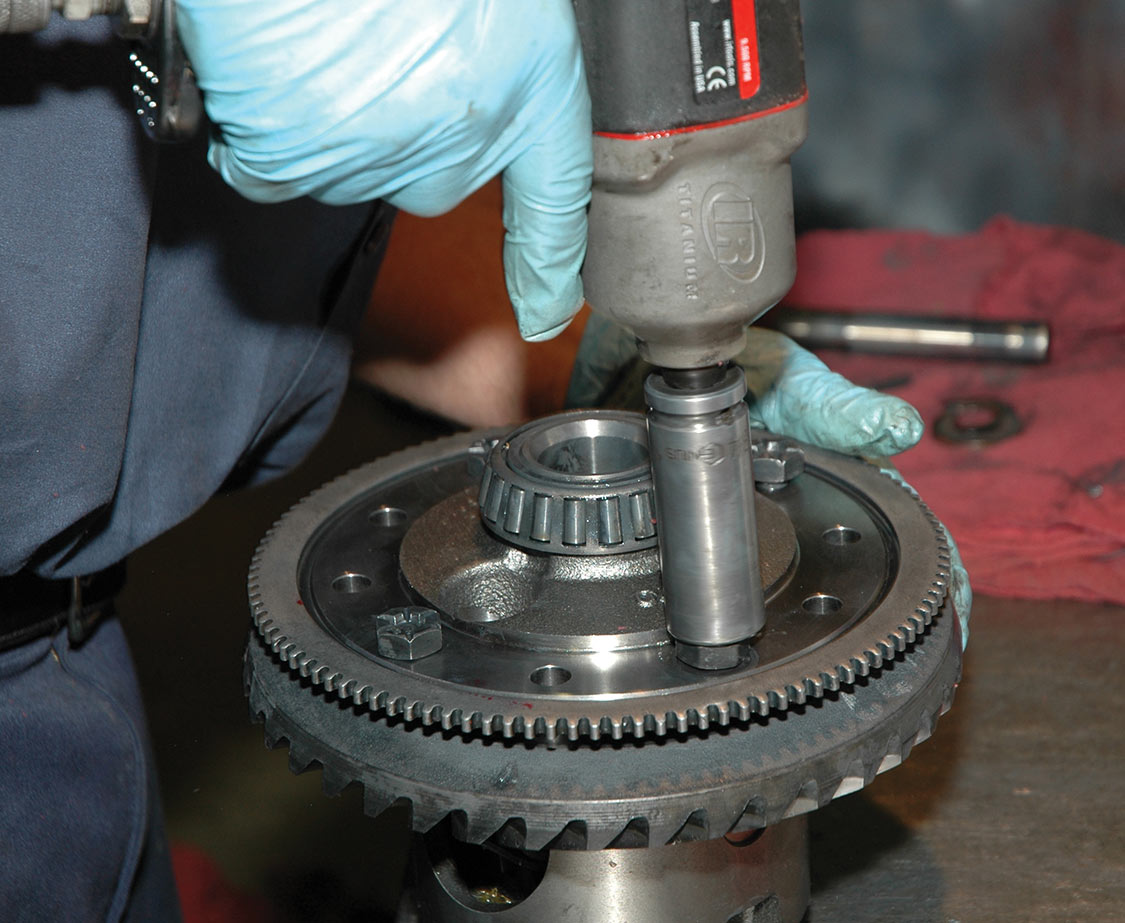
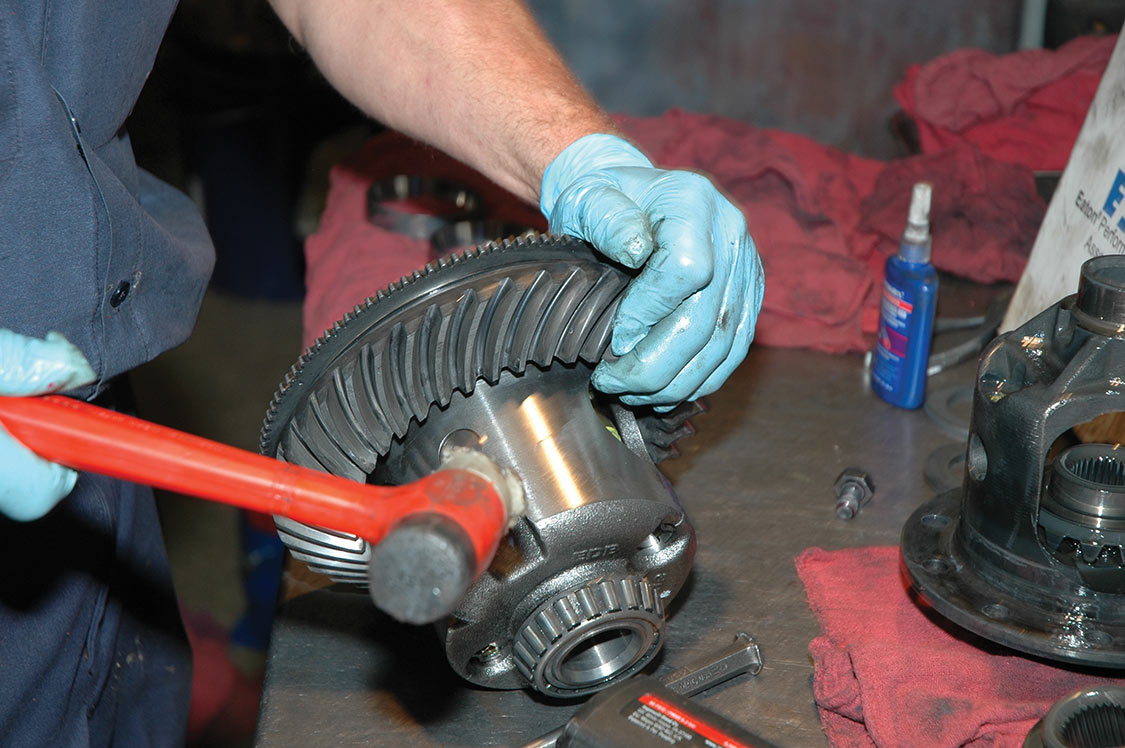
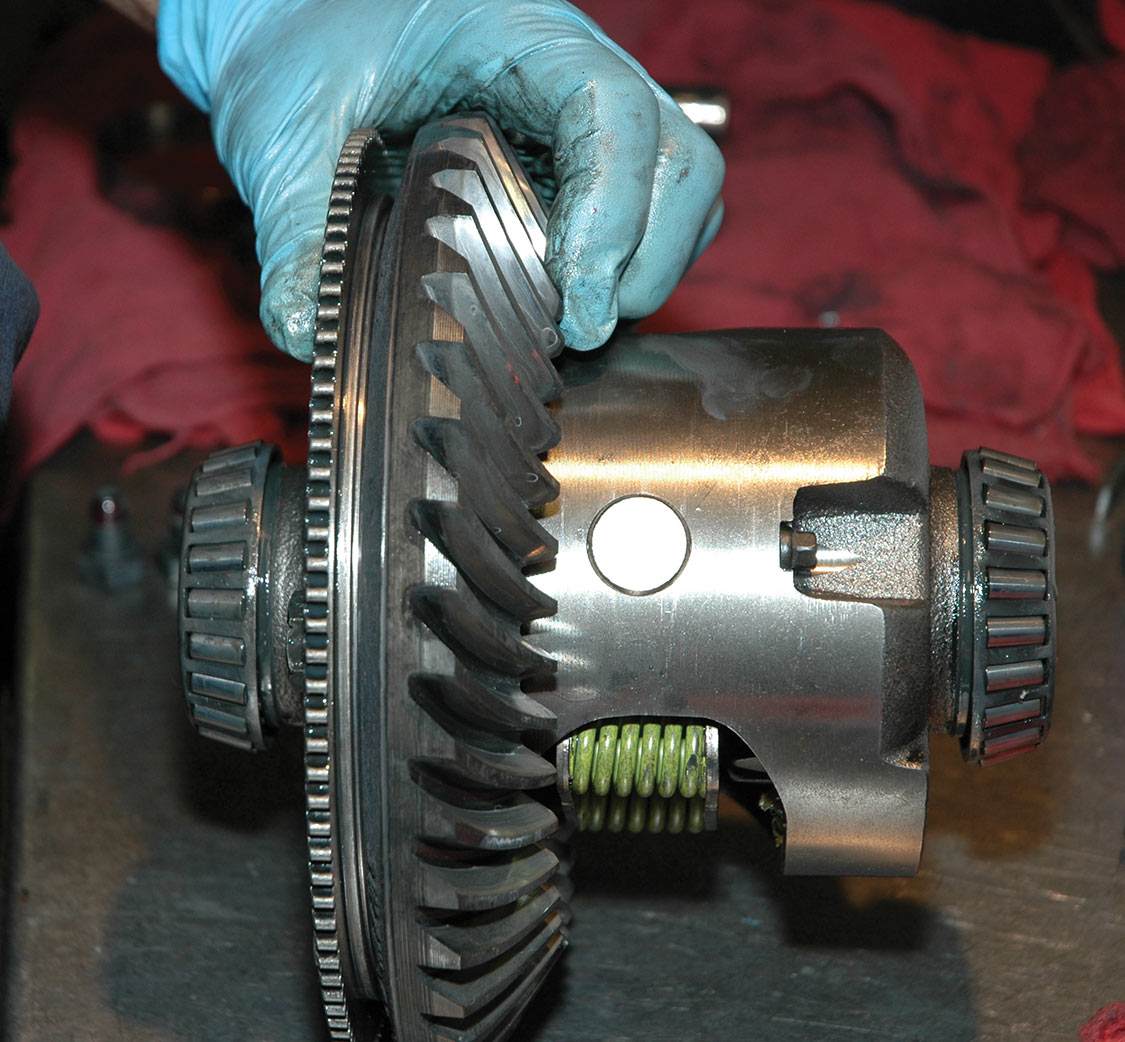
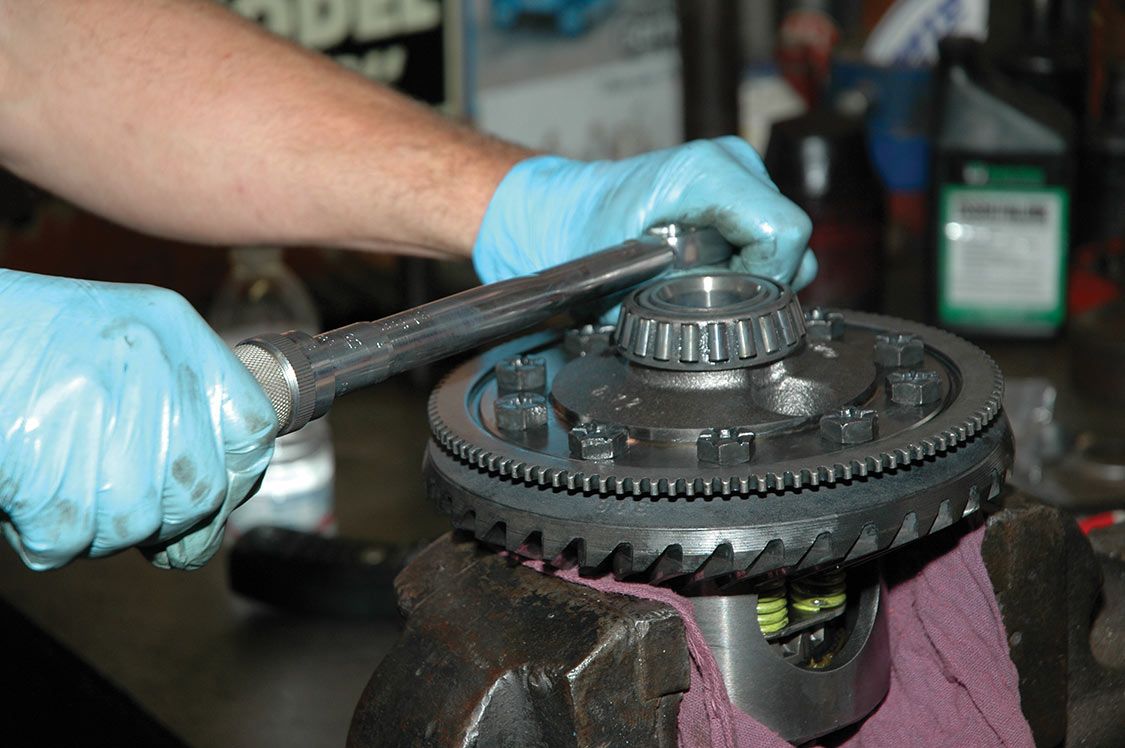
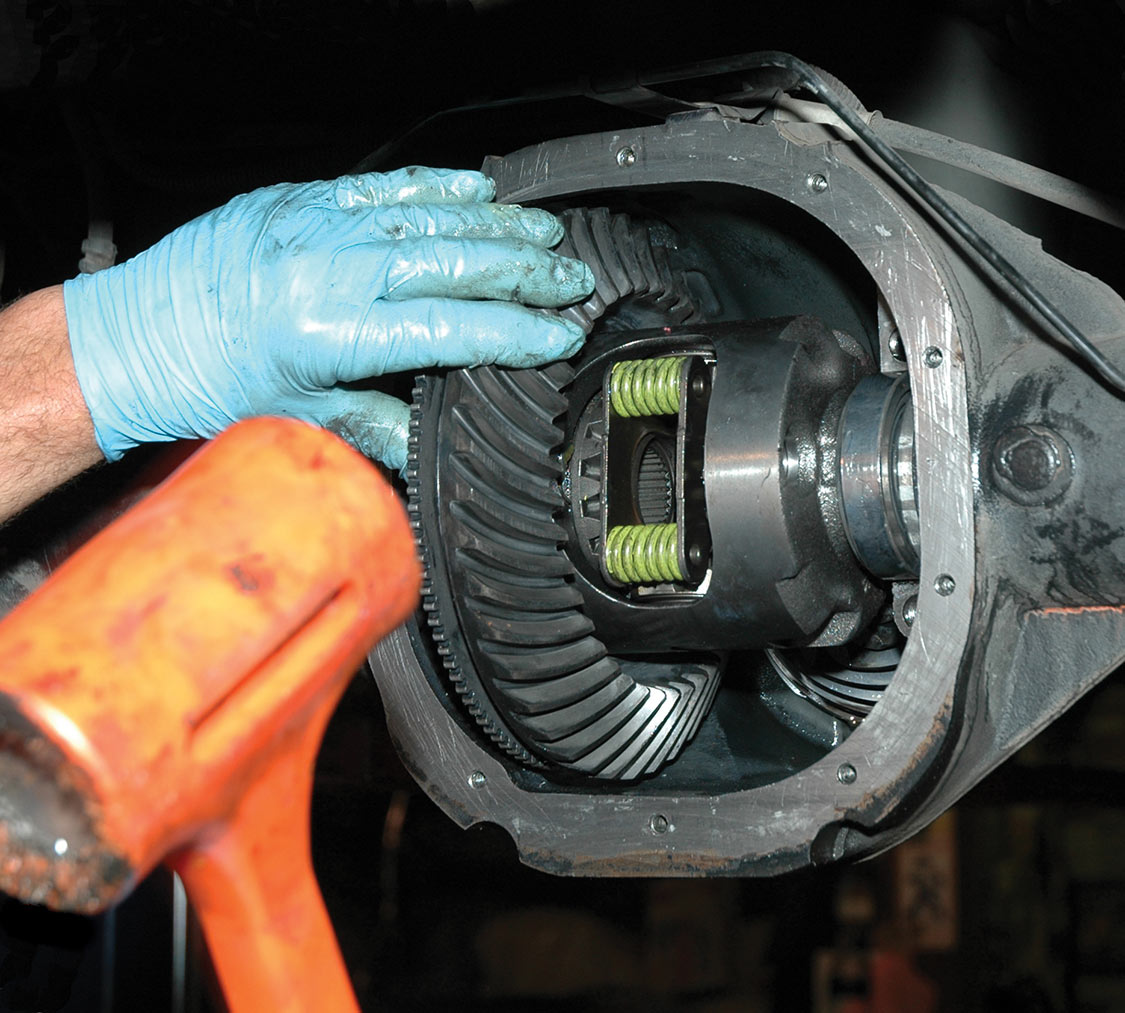
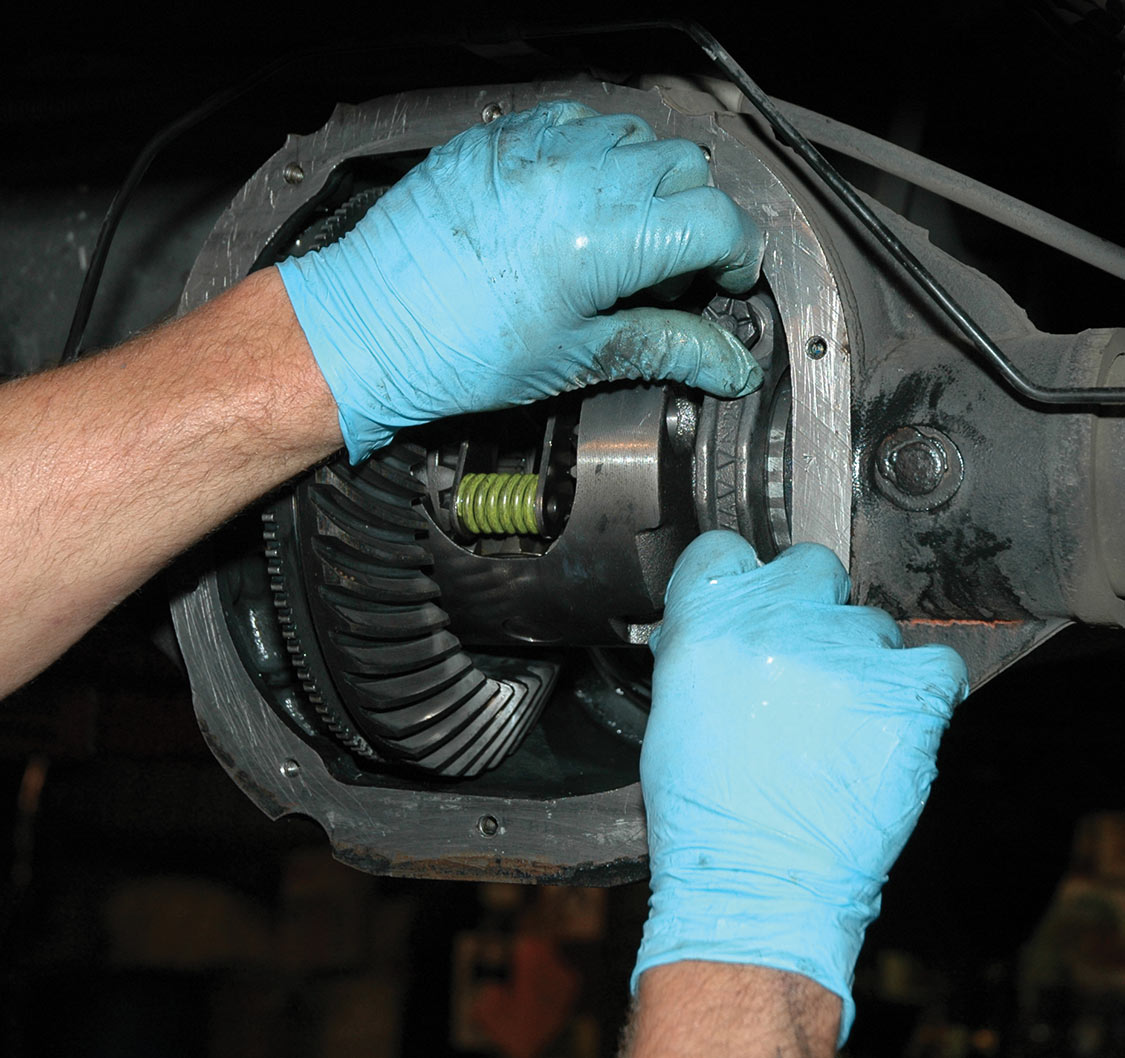
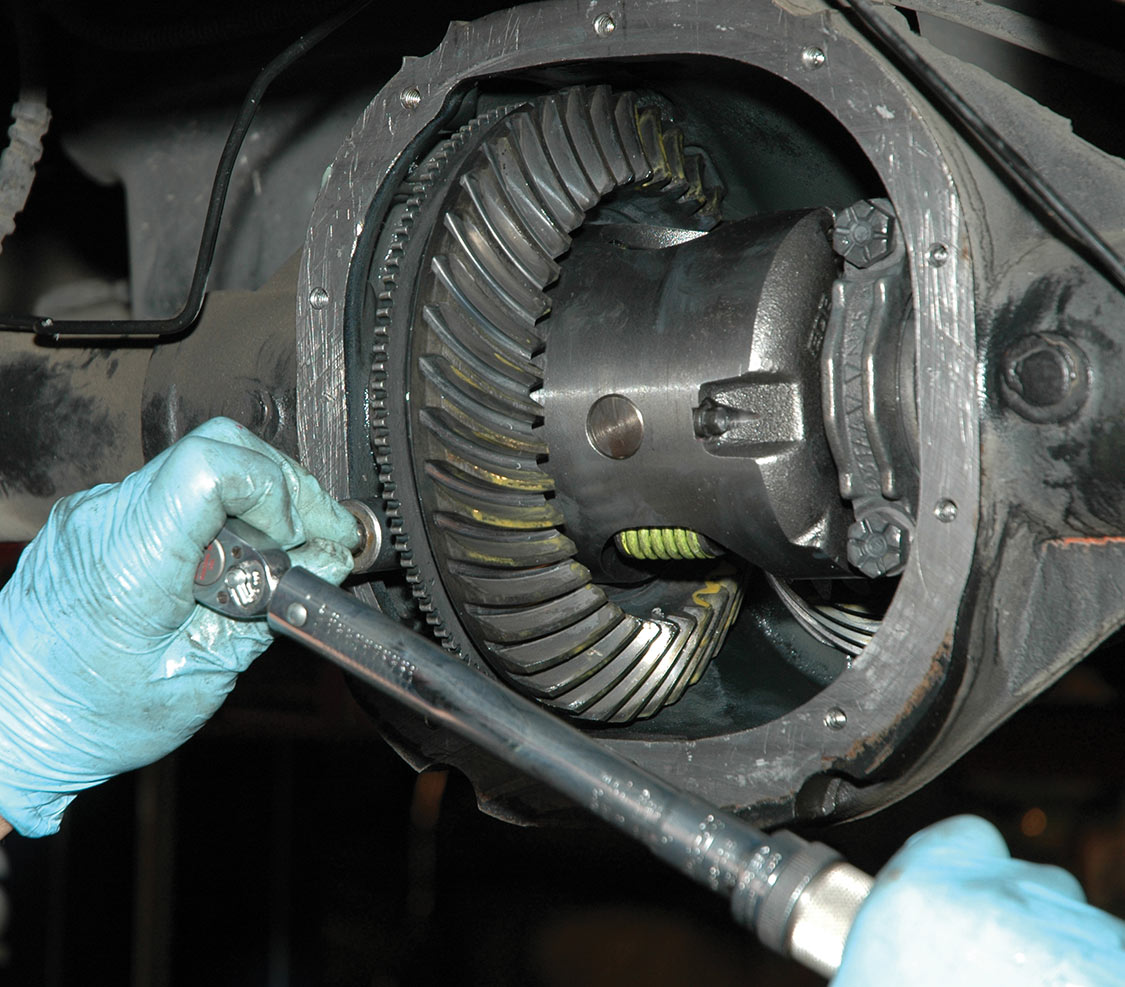
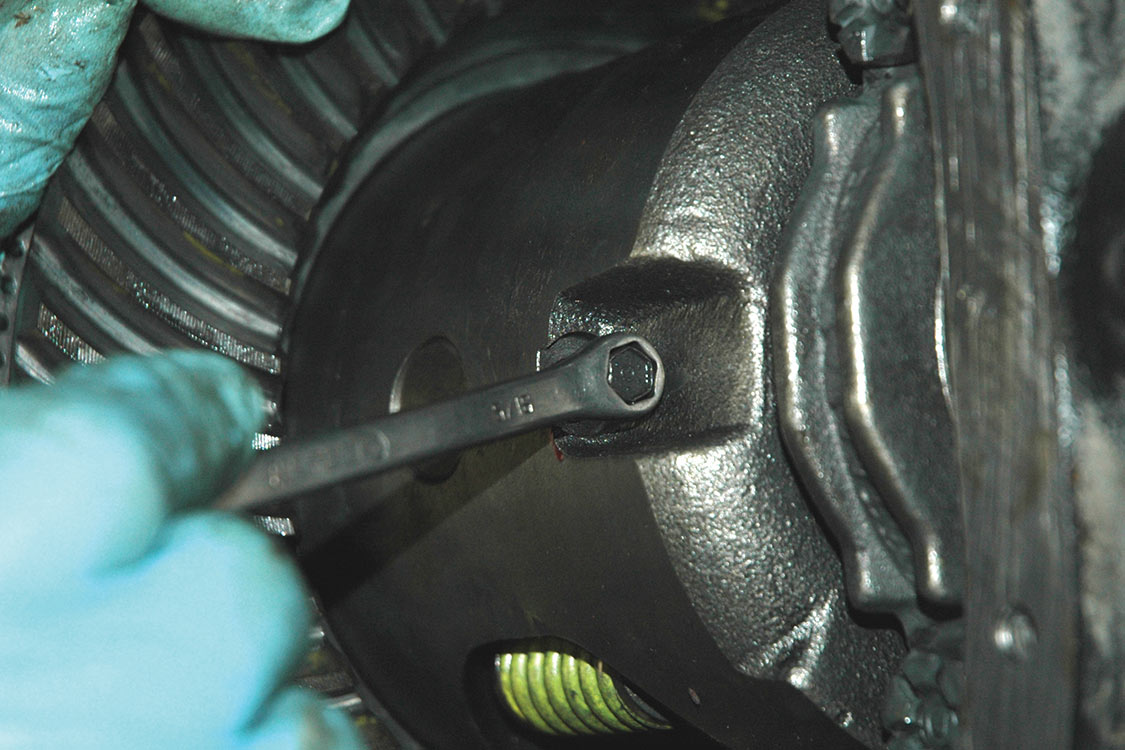
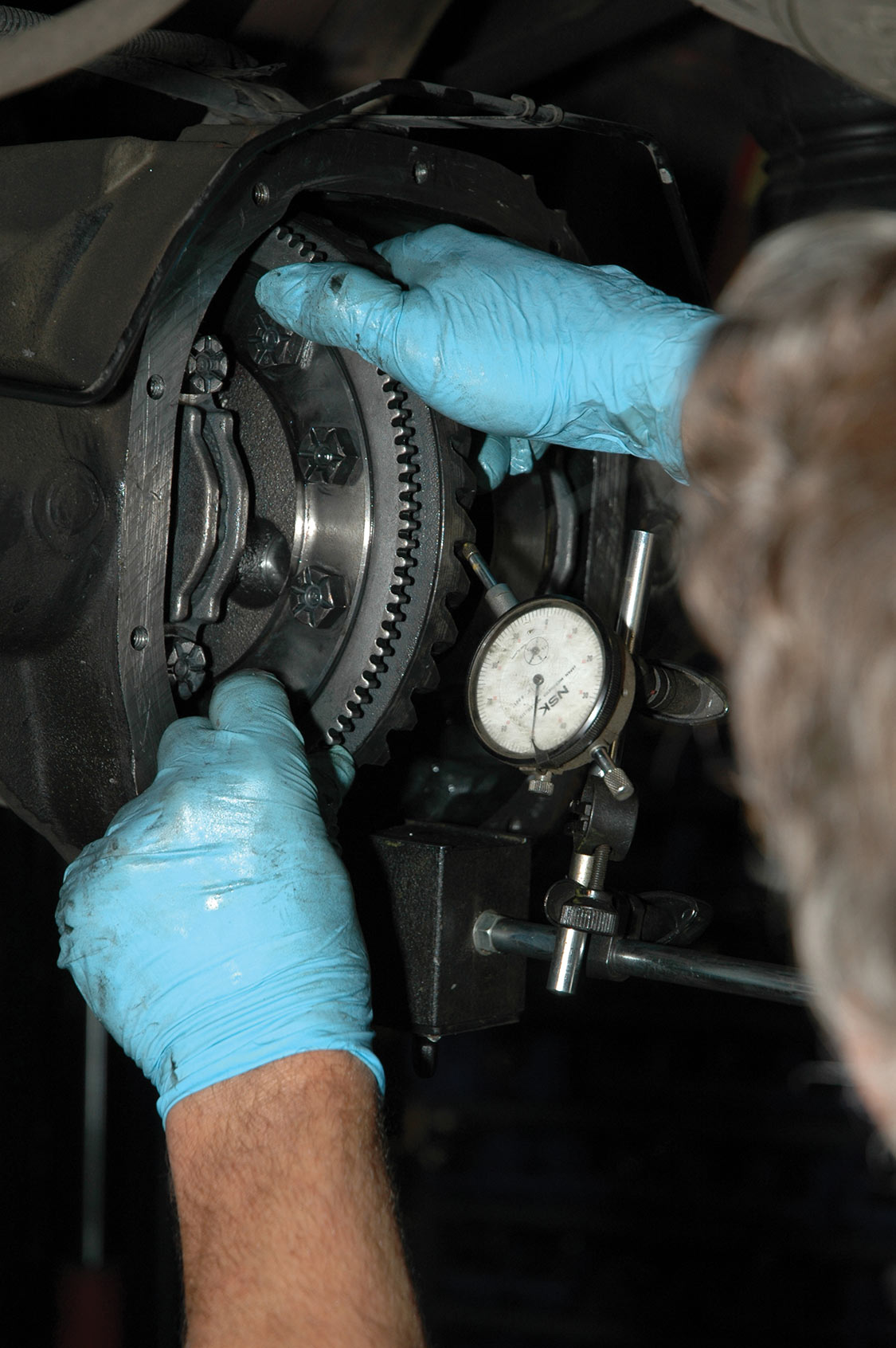
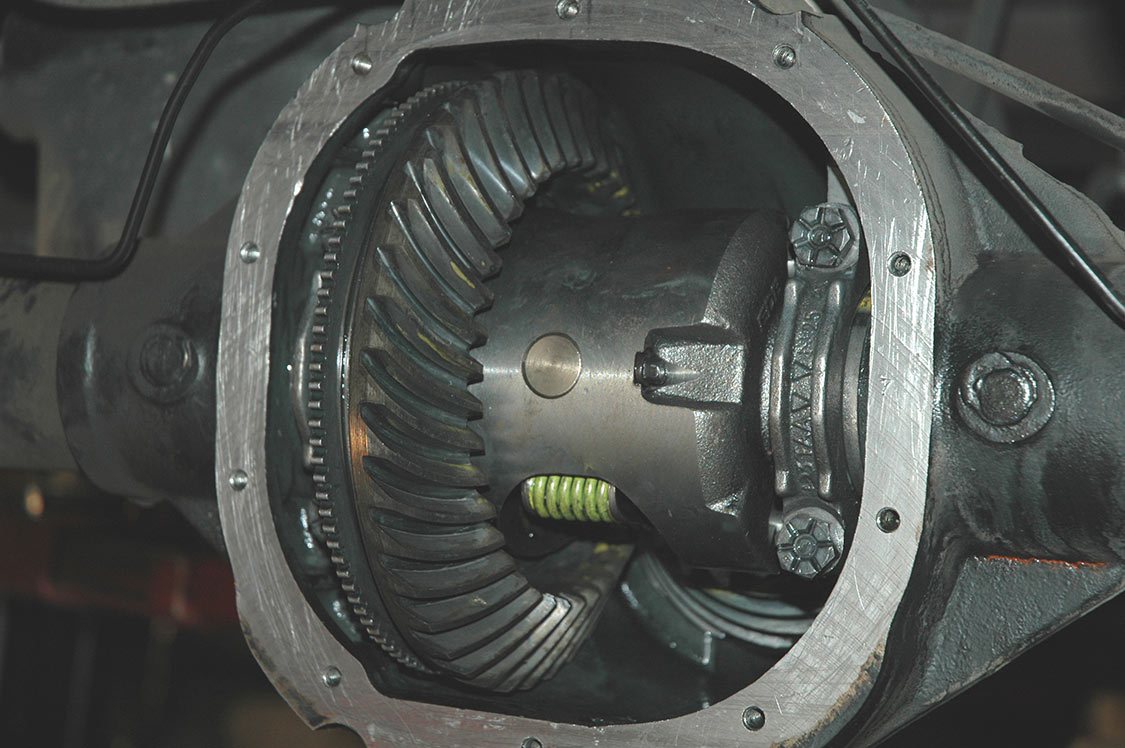
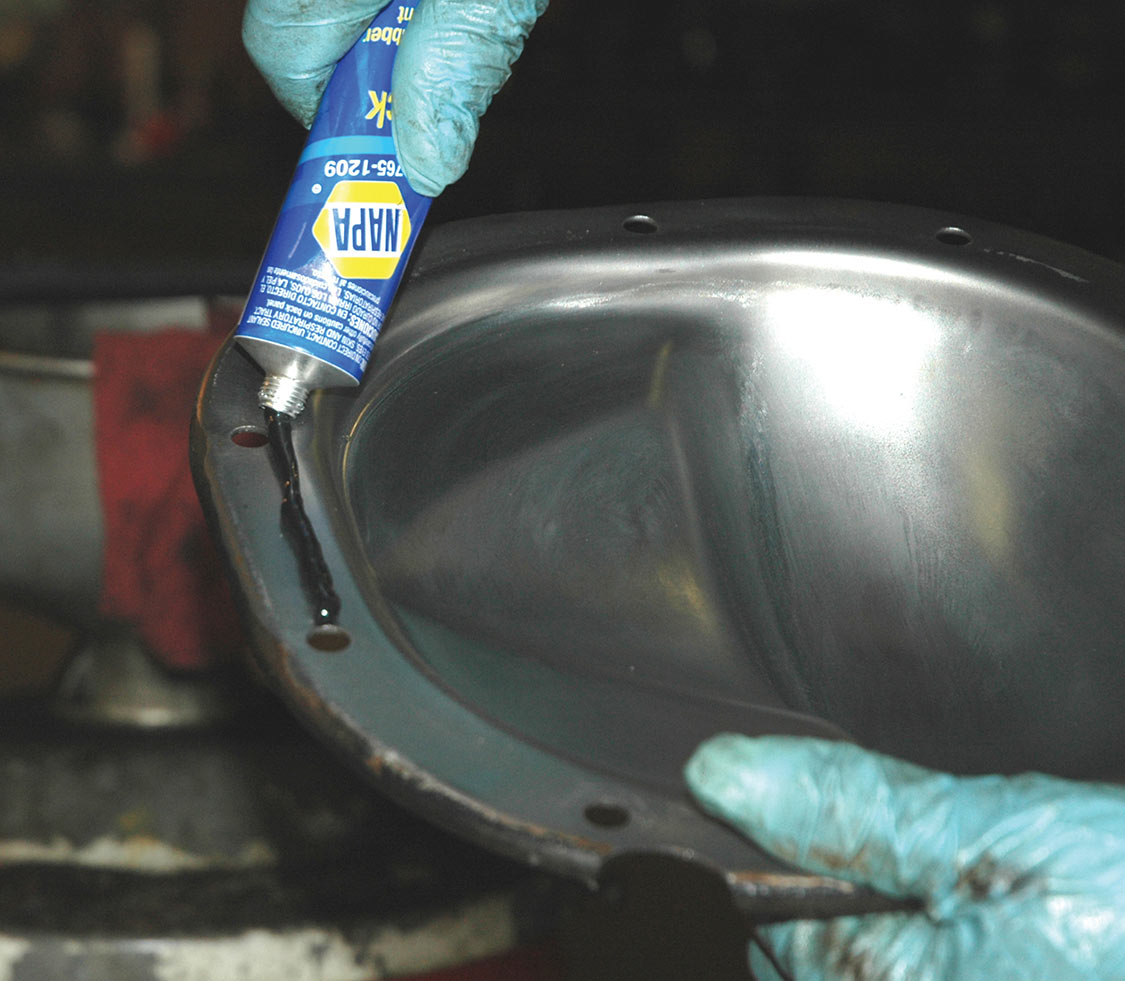
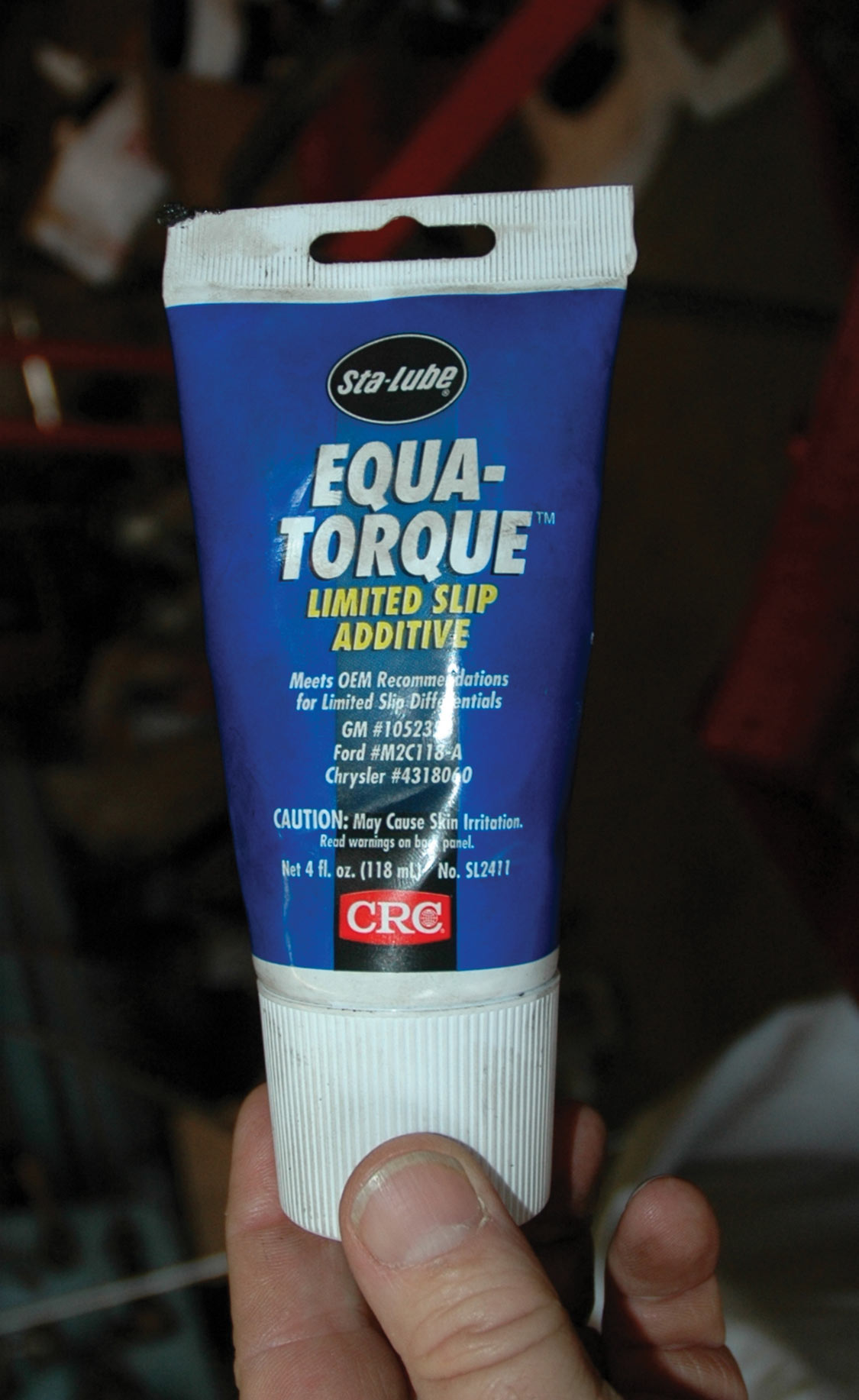
The Ford 7.5-inch rear axle has always been considered the “small” Ford rear end. This unit was used in the Mustang until it was replaced by the sturdier 8.8-inch in 1979. The 8.8 is easily distinguished from the famous Ford 9-inch axle because it has a 10-bolt inspection plate on the back that measures about 10 inches from the center of the top bolt to the center of the bottom bolt.
The Ford 9-inch is larger and stronger than either of the smaller units. Later models have bigger axle tubes and stronger housings. The 9-inch axle was introduced in 1957 and was produced through the mid-1980s. The 9-inch rear has a removable “hogs-head” center carrier and measures about 10-inch from the bottom to the top stud. This center carrier comes out of the front of the housing.
The 9-inch was available as an option from 1968 through 1971 when Fastback Mustangs were ordered with the big-block V-8 (390 through 428-cu.-in. Cobra Jet engines). There were very few of these produced in relation to the total annual Mustang production.
To make things just a little more confusing, Ford also used the standard 8-inch rear axle in many Mustangs built with smaller engines after 1972. The bottom line is that the 1987 through 1993 Fox-body Mustang 8.8 rear axle is the best to use for early Mustangs because they are cheaper to buy, are the correct width to fit under a 1965-’68 Mustang and come with disc brakes.
There are lots of 8.8 rear axles available at a salvage or recycle yard. They run about $200; the Eaton limited-slip differential costs about $800 including installation. For approximately $1000, you can have a newer rear end with a limited slip that will stand up to anything you can throw at it, and it will deliver great traction as an added bonus.
Tech Tip: While an experienced wrencher with the right tools can do this job at home, if you lack the tools or experience to properly measure and adjust the fit of your parts, it doesn’t cost much to have a differential specialist install your posi, and can save you a world of trouble later.
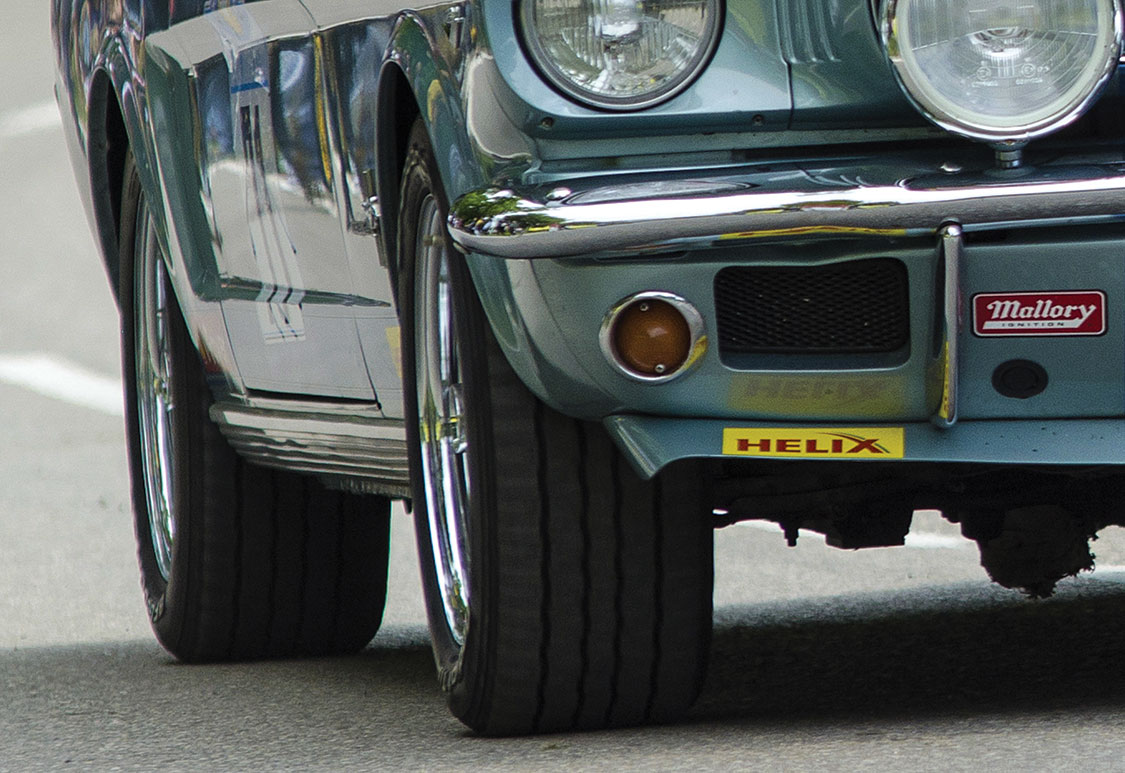
Editor’s Note: A version of this article first appeared in the April 2016 print issue of the Drive Magazine.
Ford Mustang and Chevy Camaro’s have been making cars enthusiasts loyal to each side have raged amongst themselves. In the muscle car battle, the vehicle of choice on the Bowtie side has been the Camaro. Despite a recent brief absence, Chevy brought back the Camaro marque and lobbed over a WMD (Weapon of Mass Domination) with the fifth generation-based Z/28. For 2016, the Blue Oval team has fired back with a lethal track weapon of their own, the Ford Mustang Shelby GT350R.
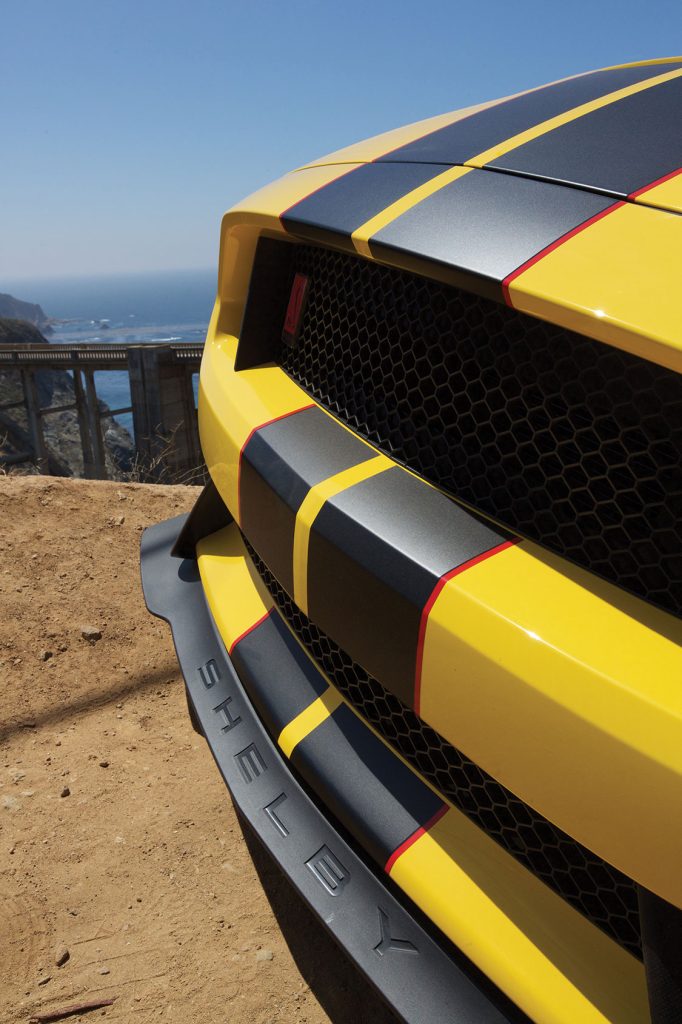
Much like the Z/28, the GT350R isn’t about making the most horsepower or posting the quickest quarter-mile times, those are the roles of the ZL1 and GT500, respectively. The classic Pony Car battle between the Z/28 and GT350 is a street legal track car that’s designed to turn incredibly fast lap times at road courses across the country. To reach this goal, the engineers at Ford Performance made some major changes from the tried and true Ford Mustang GT platform.
The biggest changes happened under the hood. The team at Ford took the 5.0L engine and slightly bored and stroked it to 5.2L. They lightened the valve train with sodium-filled exhaust valves and hollow intake valves, increased the lift to 14mm and increased compression to 12.0:1. But the best stuff happened on the bottom of the block where Ford switched the engine to a flat plane crankshaft.
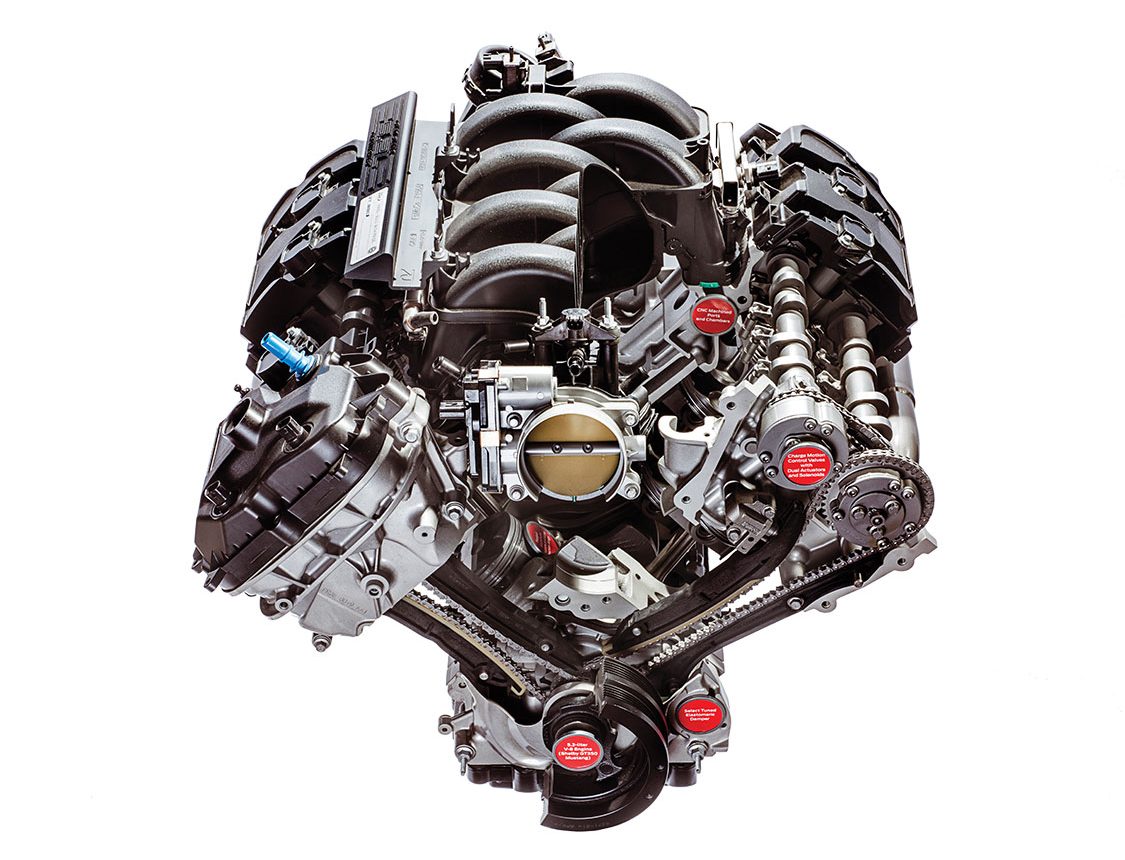
Heretofore, flat plane crankshaft V-8s are usually only found in race cars and exotics like Ferrari. If you look down the axis of a flat plane crankshaft, the connecting-rod journals are on opposite sides, giving the crankshaft the appearance of a minus sign. Traditional cross plane cranks have connecting-rod journals at 90-degree intervals and look like a plus sign when viewed down the axis. In addition to an intoxicatingly sweet exhaust note, the flat plane crankshaft offers lighter weight and the ability to alternate ignition events between the two cylinder banks to vastly improve engine breathing. This all adds up to a V-8 that redlines at an incredible 8,250 rpm and generates 526 hp and 429 lb-ft of torque. That’s 102 hp per liter of displacement without the need for supercharging or turbocharging.
On the road, the Shelby GT350R makes its intentions known to the driver right away. But while the ride, as you’d expect from a track-honed tool like this, isn’t buttery smooth, the MagneRide dampers are able to soak up expansion joints and the like without knocking out a filling, especially when they’re set to Normal mode.
While improvements in supercharging and turbocharging have helped to reduce the surge of power that can sometimes catch a driver off guard in a corner, they still can’t touch a high-revving, naturally aspirated engine when it comes to throttle control. With an 8,250-rpm redline, the Shelby GT350R provides ample room between gears to enjoy that addictive exhaust note, making it hard to resist taking this engine to redline again and again.
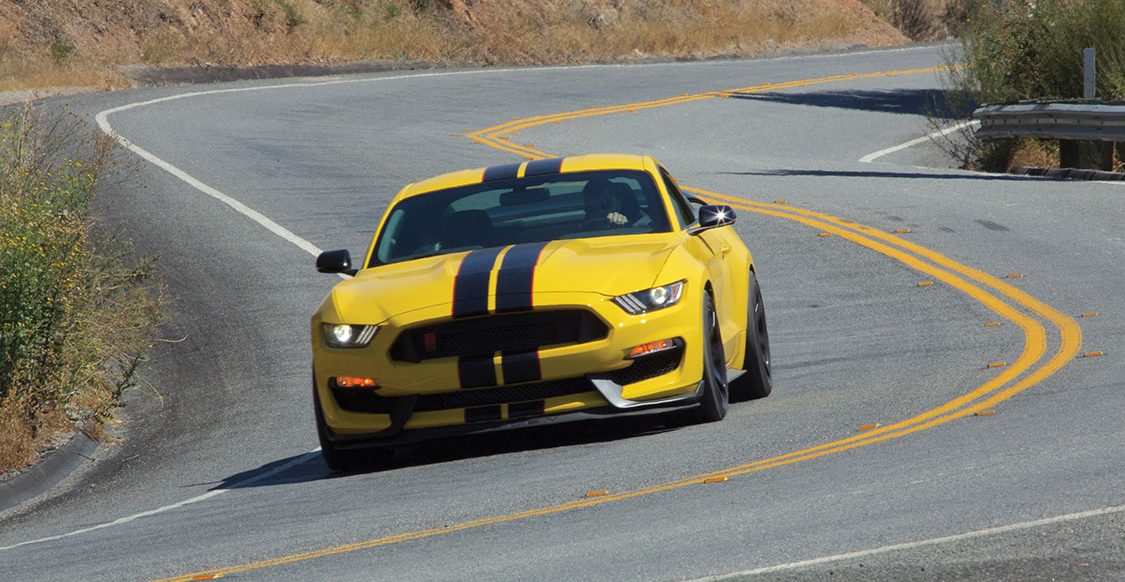
An engine this special needs a good home, and the Shelby GT350R’s chassis fills the bill. Like all of the sixth generation Mustangs, Ford finally switched to an independent rear suspension, a move not seen since the 1999 SVT Cobra. But the Shelby GT350R gets additional help putting the power to the ground via a Torsen limited-slip rear differential. Managing the corners is Ford’s first ever use of continuously variable MagneRide dampers. An extensive system of sensors work to monitor the car’s motion and can make changes to each corner in just seven milliseconds. The Mustang suspension has come a long way from the old live rear axle setup.
Making sure the Shelby GT350R can stick to the road is the job of the Michelin Pilot Sport Cup 2 tires. These nearly R Compound tires are wrapped around carbon fiber wheels. Ford is the first major carmaker to use carbon fiber wheels on a production car and they eliminate approximately 15 pounds of unsprung weight per corner compared to the aluminum wheels found on the Shelby GT350.
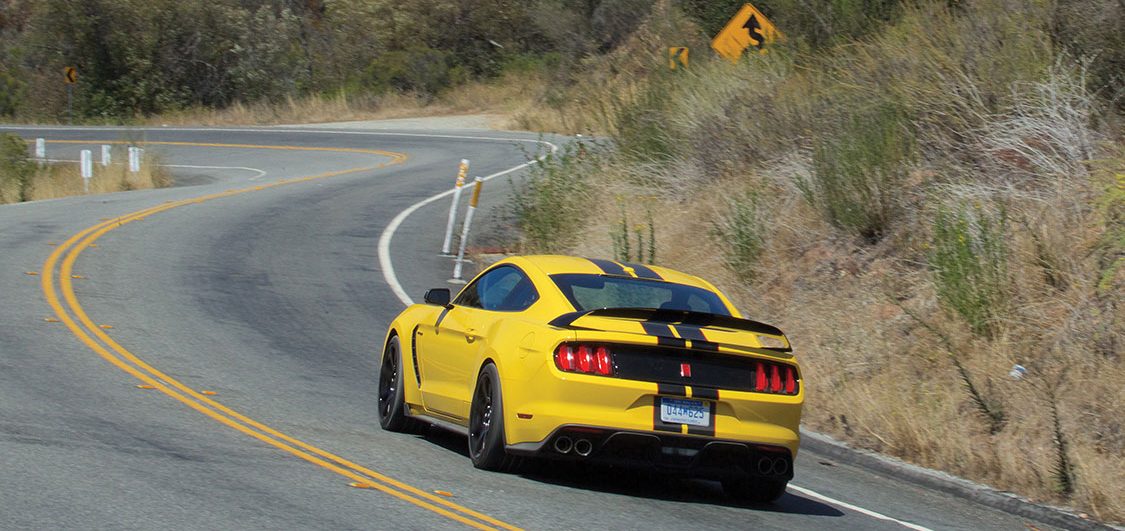
On the road, the Shelby GT350R makes its intentions known to the driver right away. But while the ride, as you’d expect from a track-honed tool like this, isn’t buttery smooth, the MagneRide dampers are able to soak up expansion joints and the like without knocking out a filling, especially when they’re set to Normal mode. In fact, the GT350R has five different drive modes (Normal, Sport, Weather, Track and Drag) that optimize everything from throttle response, damper stiffness, traction control, steering effort and exhaust note. The Drag mode is interesting in that it optimizes the system for maximum traction at lower speeds and then adjusts automatically to optimize stability as speeds increase.
Like most cars today, the Shelby GT350R has gone the way of electrically assisted steering, but unfortunately a lot of the steering feedback was lost in the transition. The GT350R has immediately quick turn-in with a tendency to slightly under-steer, but a quick throttle adjustment brings everything back in line. Stand on the brakes and the car sheds speed with amazingly little drama and outstanding control. This remarkable stopping power is courtesy of the six-piston front Brembo brakes that bite down on enormous two-piece cross-drilled 15.5-inch rotors, while four-piston calipers with 15-inch rotors handle the rear. Brake ducting keeps things cool and ensures that there’s virtually no fade lap after lap at the track.
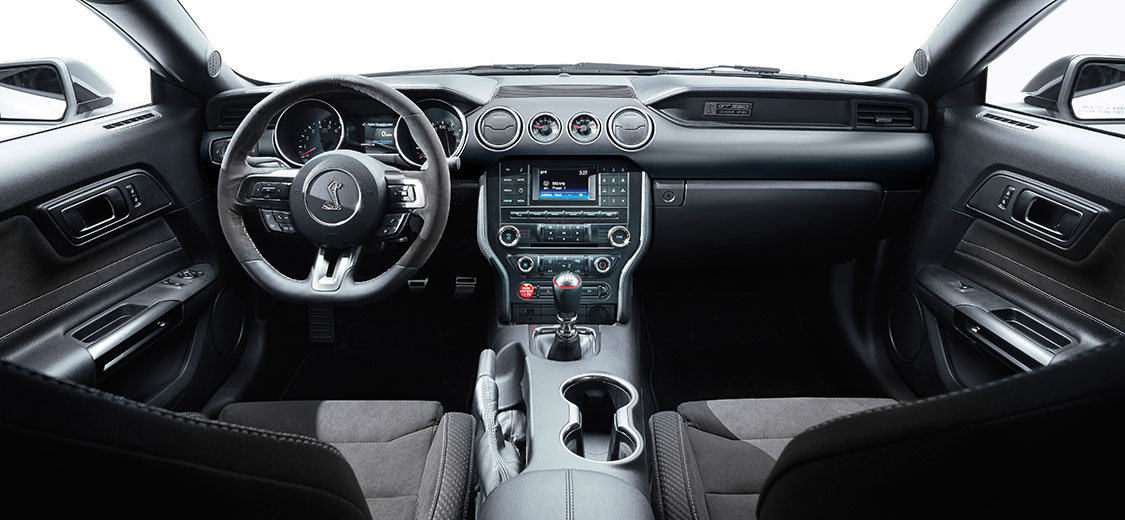
Ford went to great lengths to reduce weight in this car. In addition to the carbon fiber wheels and lighter brakes, the Shelby GT350R features the use of exotic materials and the removal of non-essential equipment. Anything that didn’t make the car go faster was removed including the air conditioning, stereo, carpeting, rear seats, the backup camera, tire sealer and inflator, exhaust resonators and the trunk floorboard. This helped drop nearly 130 pounds of weight from the R model compared to the Shelby GT350. Some of these options can be added back if, for example, you live someplace where the lack of air conditioning would make the car unbearable to drive for long periods of the year.

A number of aerodynamic and visual upgrades give the Ford MustangAutomotiveShelby GT350R a distinctly more aggressive appearance than the standard Mustang. Up front, the reengineered grille opening is now reinforced with a carbon fiber composite that’s as stiff as steel, yet 24% lighter. Its shape gives the appearance of fangs when viewed from the front, nicely matching the Cobra badge fixed to the grille. The hood features a large vent that helps extract engine heat and improves downforce. Also assisting in downforce is the large carbon fiber rear wing. Ford claims that the Shelby GT350R makes as much downforce as the Porsche 911 GT3. Overall the look is impressive and takes this new sixth generation Mustang to the next level.
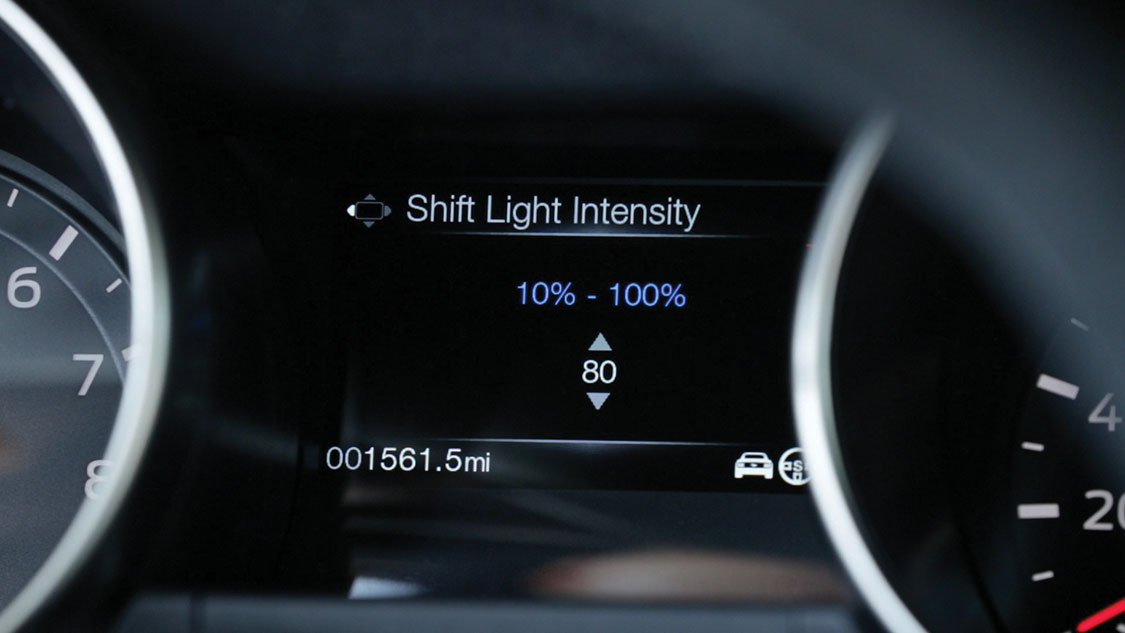
For those of us who wish to save the manual transmission, Ford has done us another favor by equipping this car with a smooth-shifting Tremec six-speed. Not only is this transmission lighter and stiffer, but it also features an oil-to-air transmission cooler to keep temps under control during aggressive driving. Shift action is solid and precise with the dual-disc clutch requiring surprisingly light action. Pedal placement is also ideal, making heel-toe downshifts a pleasure.
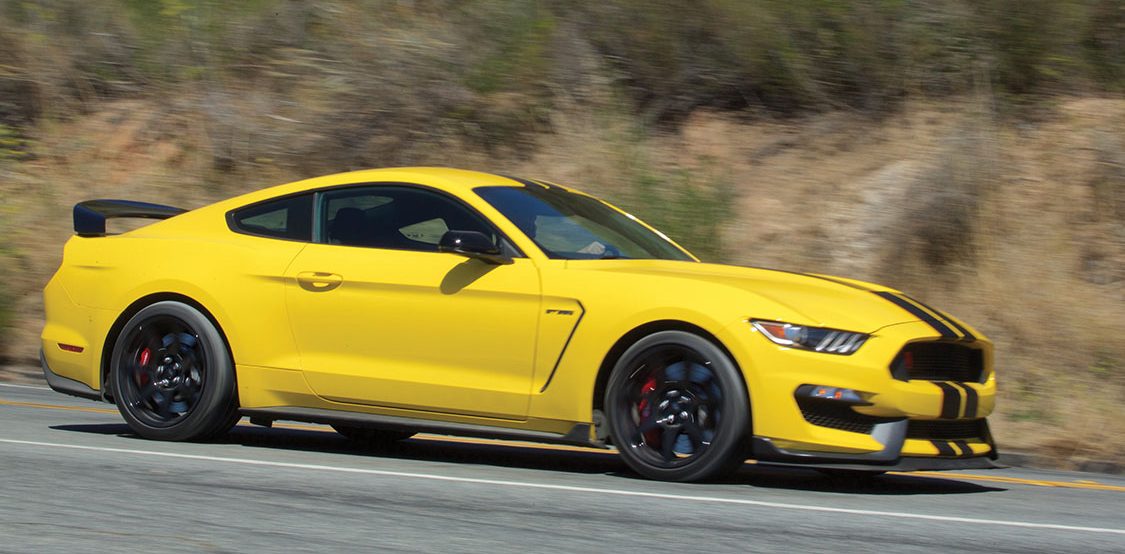
The $63,495 price tag might sound like a lot for a Mustang at first, but once you consider the amount of technology and track-ready performance parts that come standard, it’s right in the neighborhood of other performance coupes like the BMW M4 and Cadillac ATS-V coupe. Once you hear that flat plane crankshaft V-8 fire up, you’ll quickly start asking where to sign. The 2016 Ford Mustang Shelby GT350R clearly shows Ford is serious about track performance and does so in one sexy-looking package. With the sixth- generation-based Z/28 yet to be announced, it’s now your move, Chevy.
by Aaron Smith Photos Courtesy of FMC
A version of this article first appeared in the January 2016 print issue of Drive Magazine.